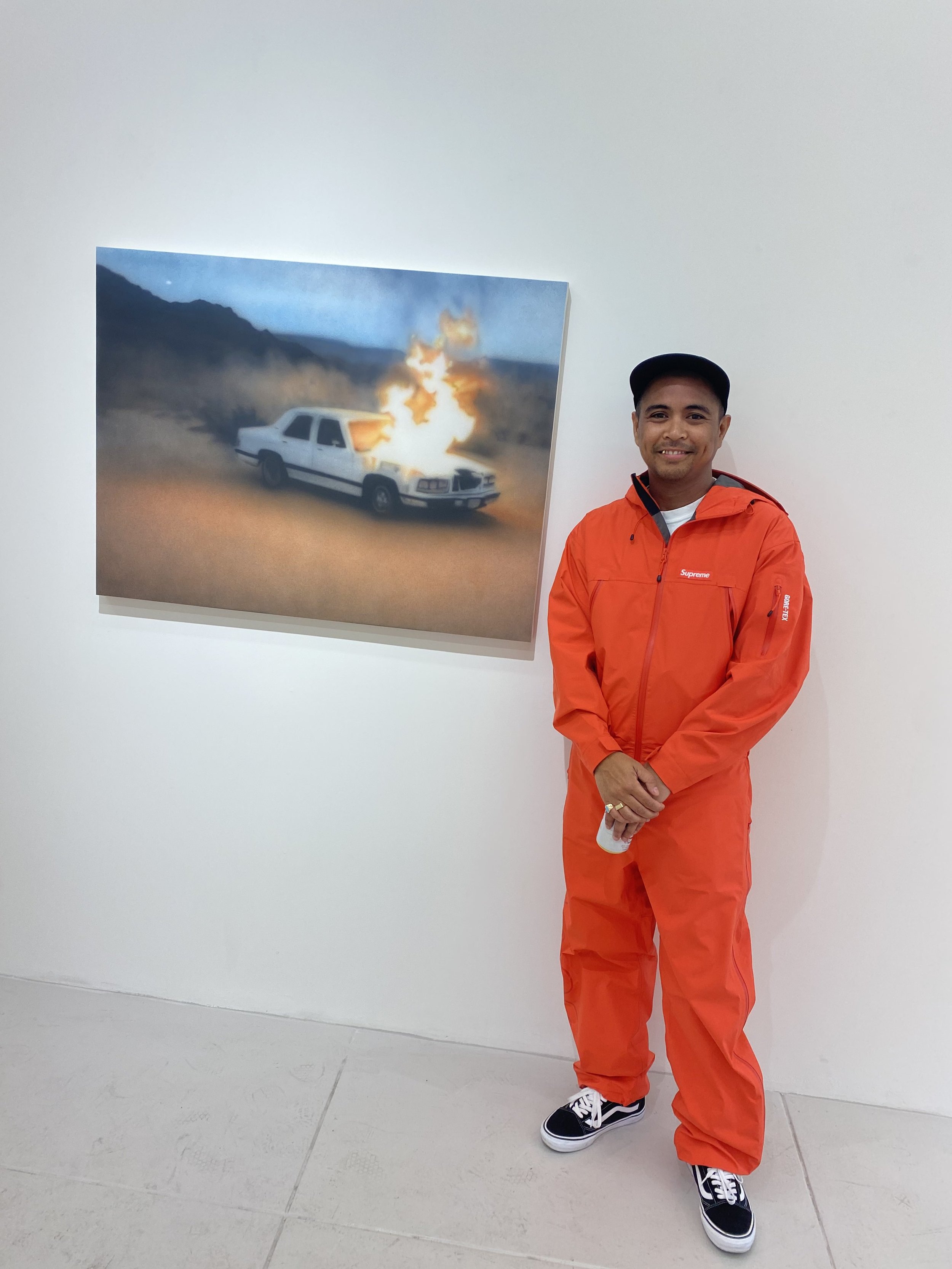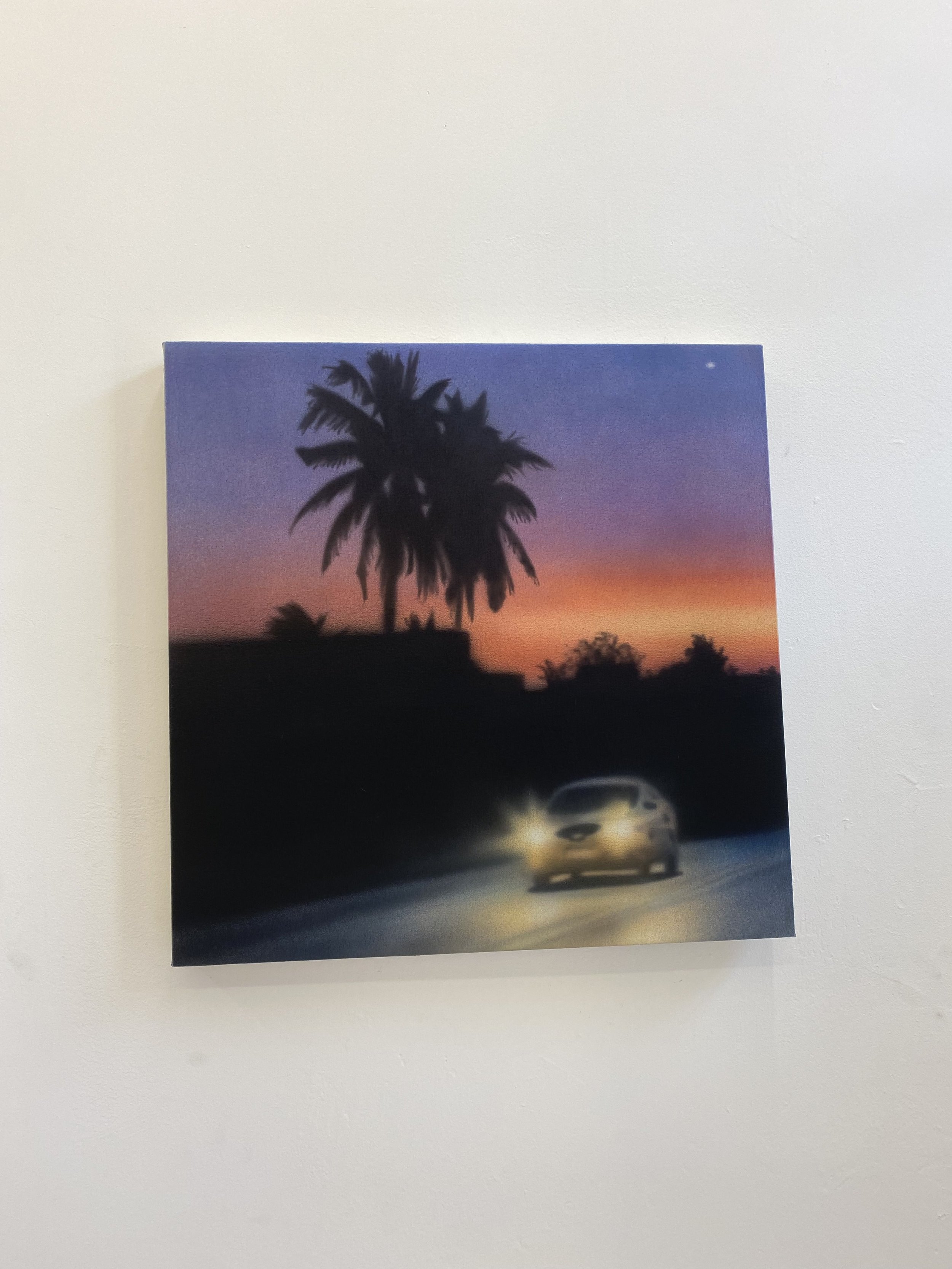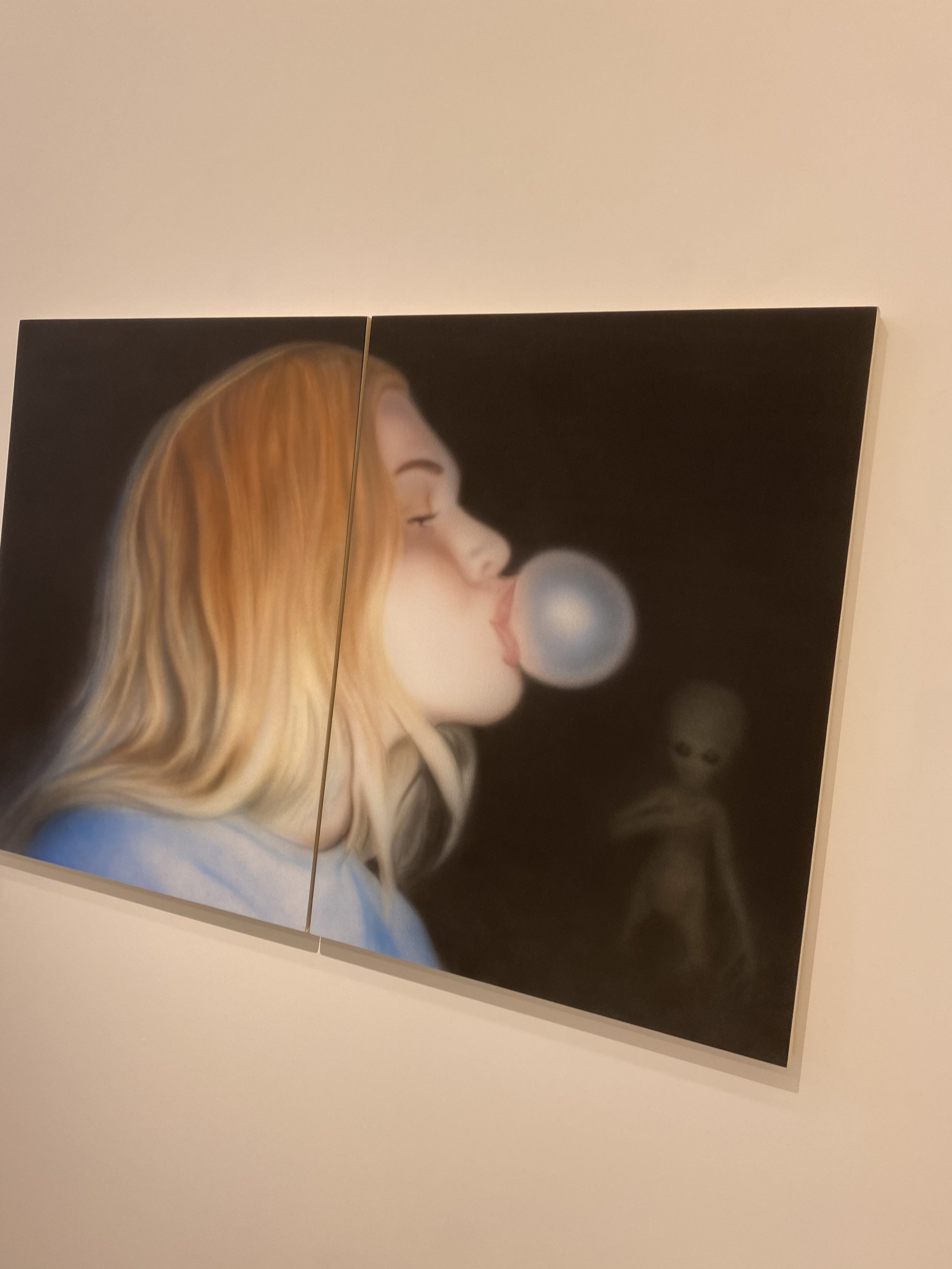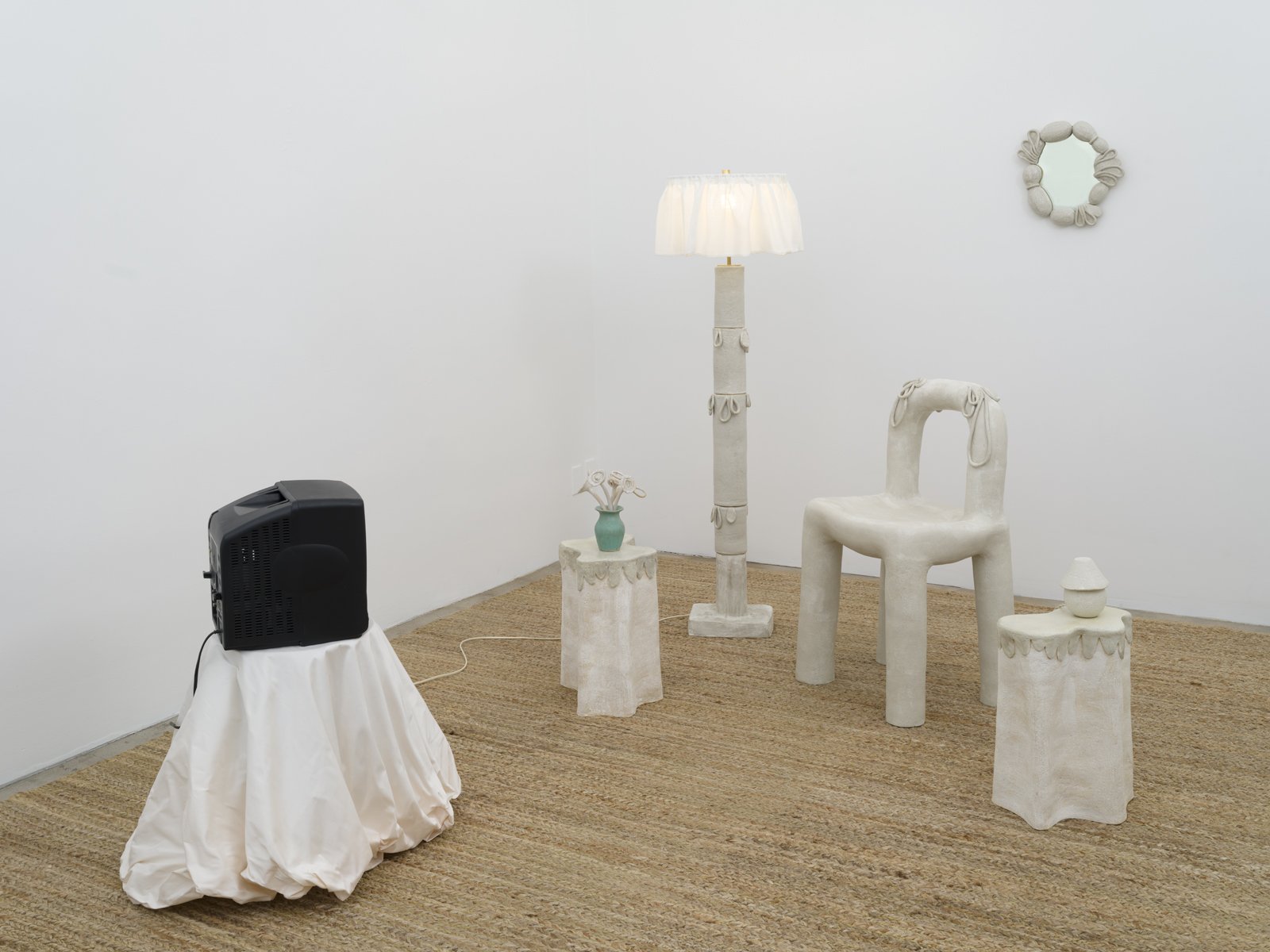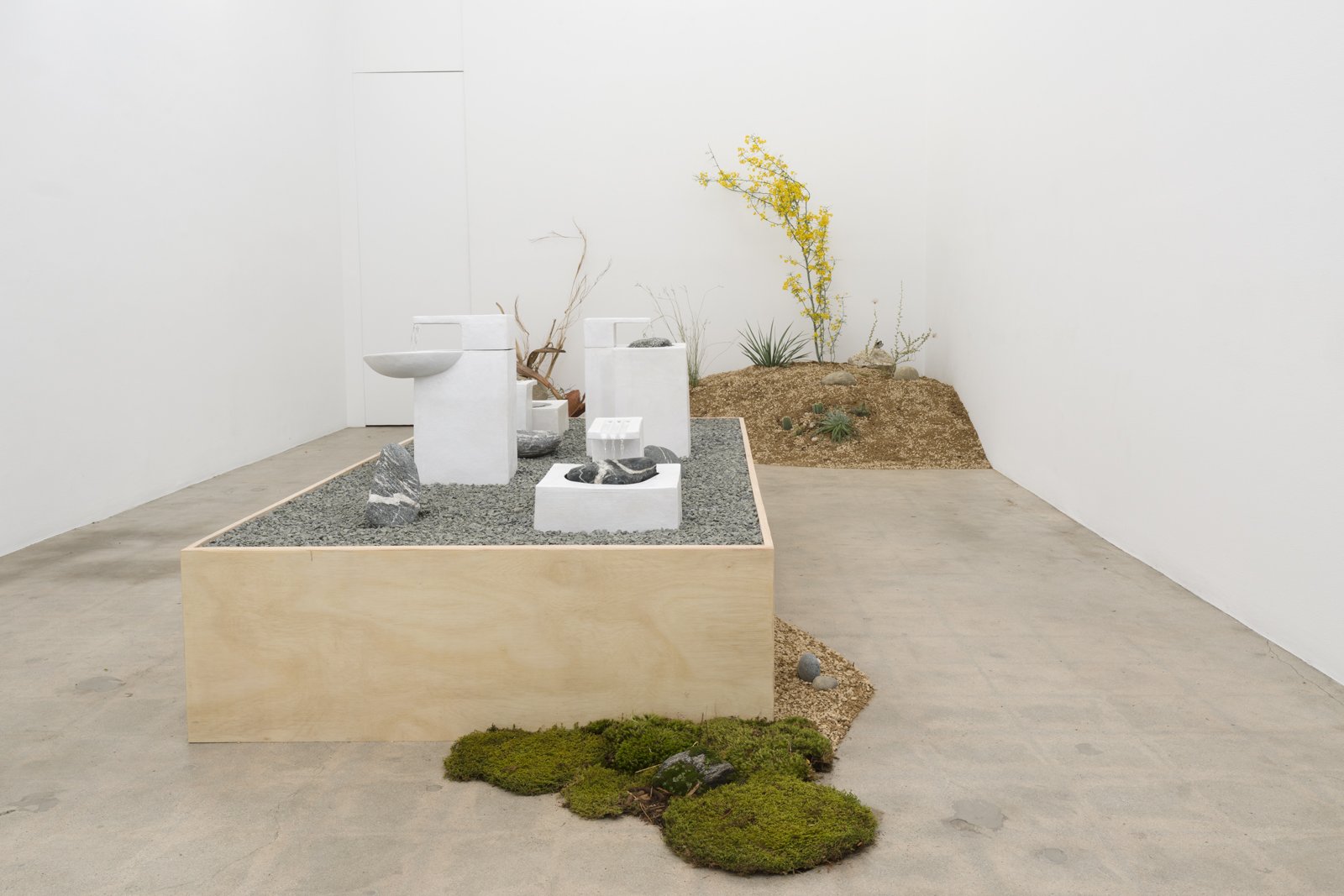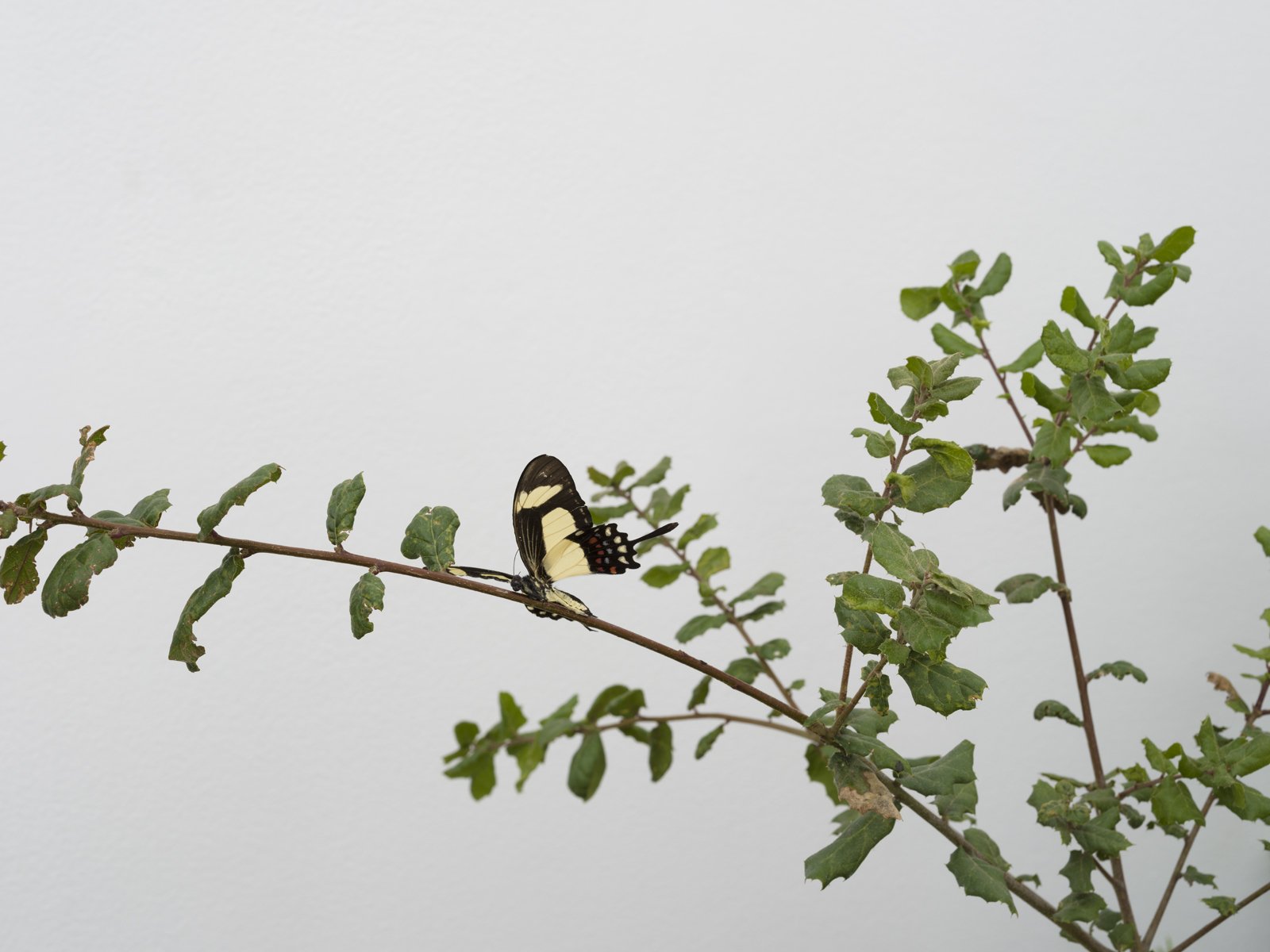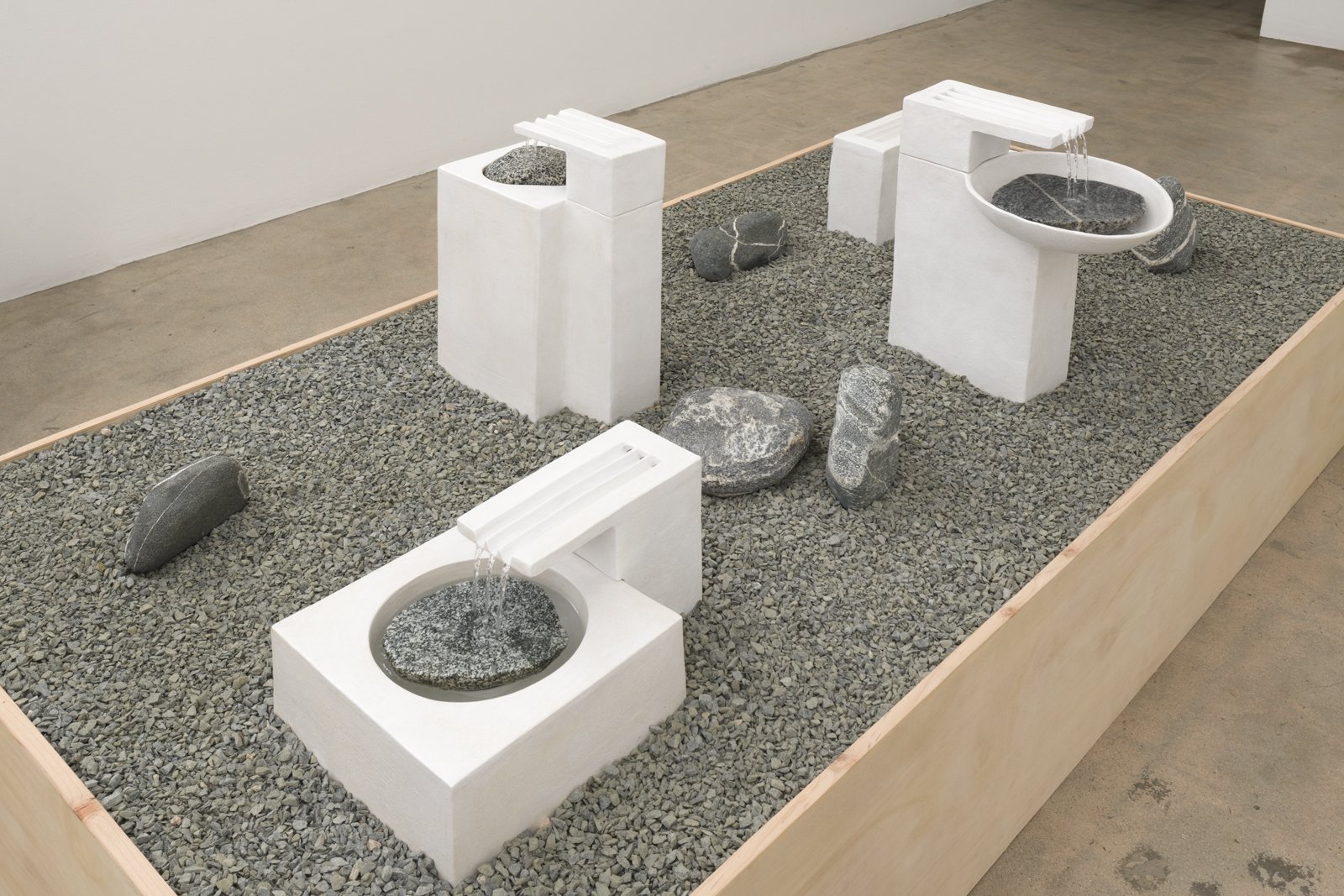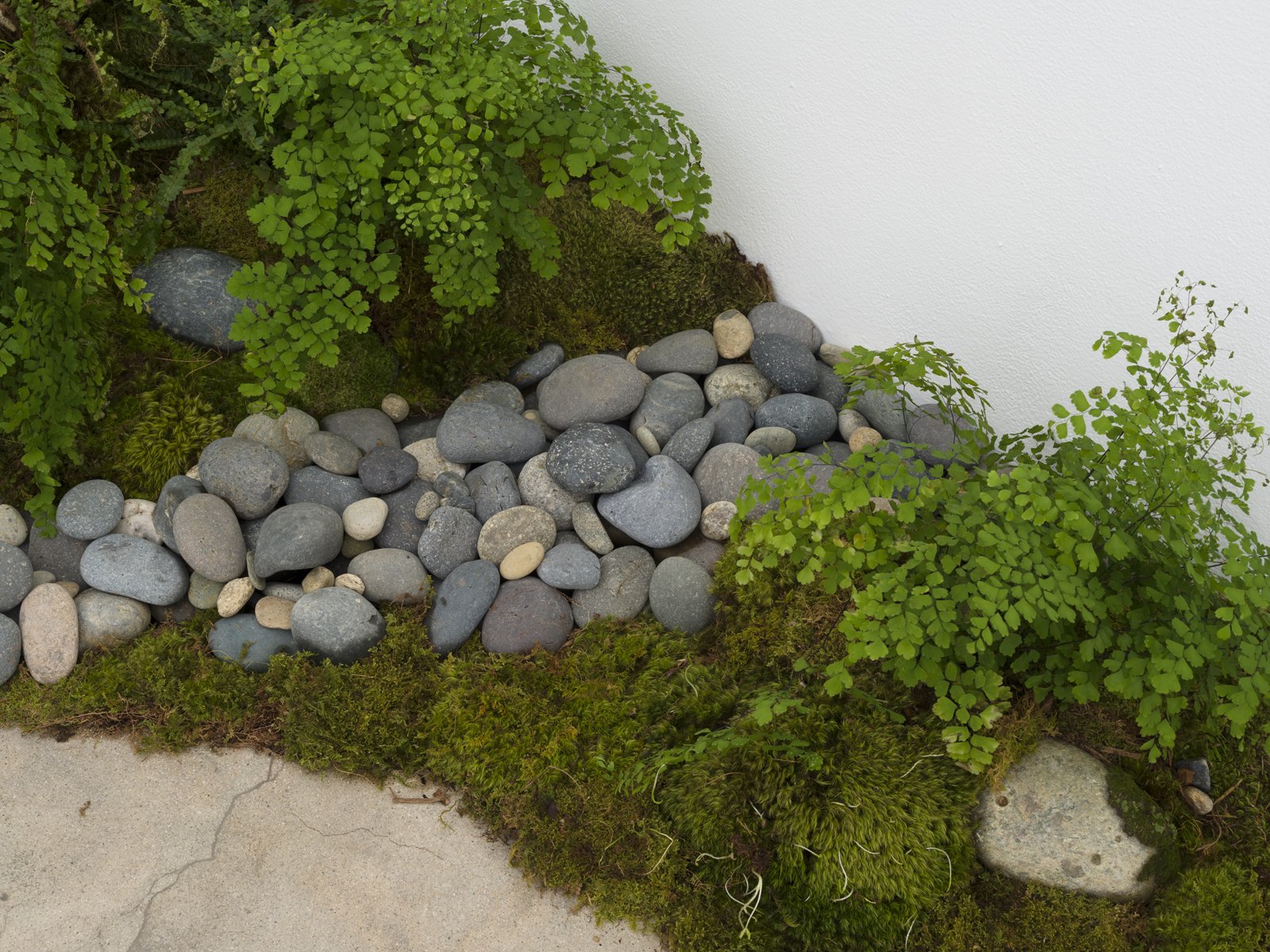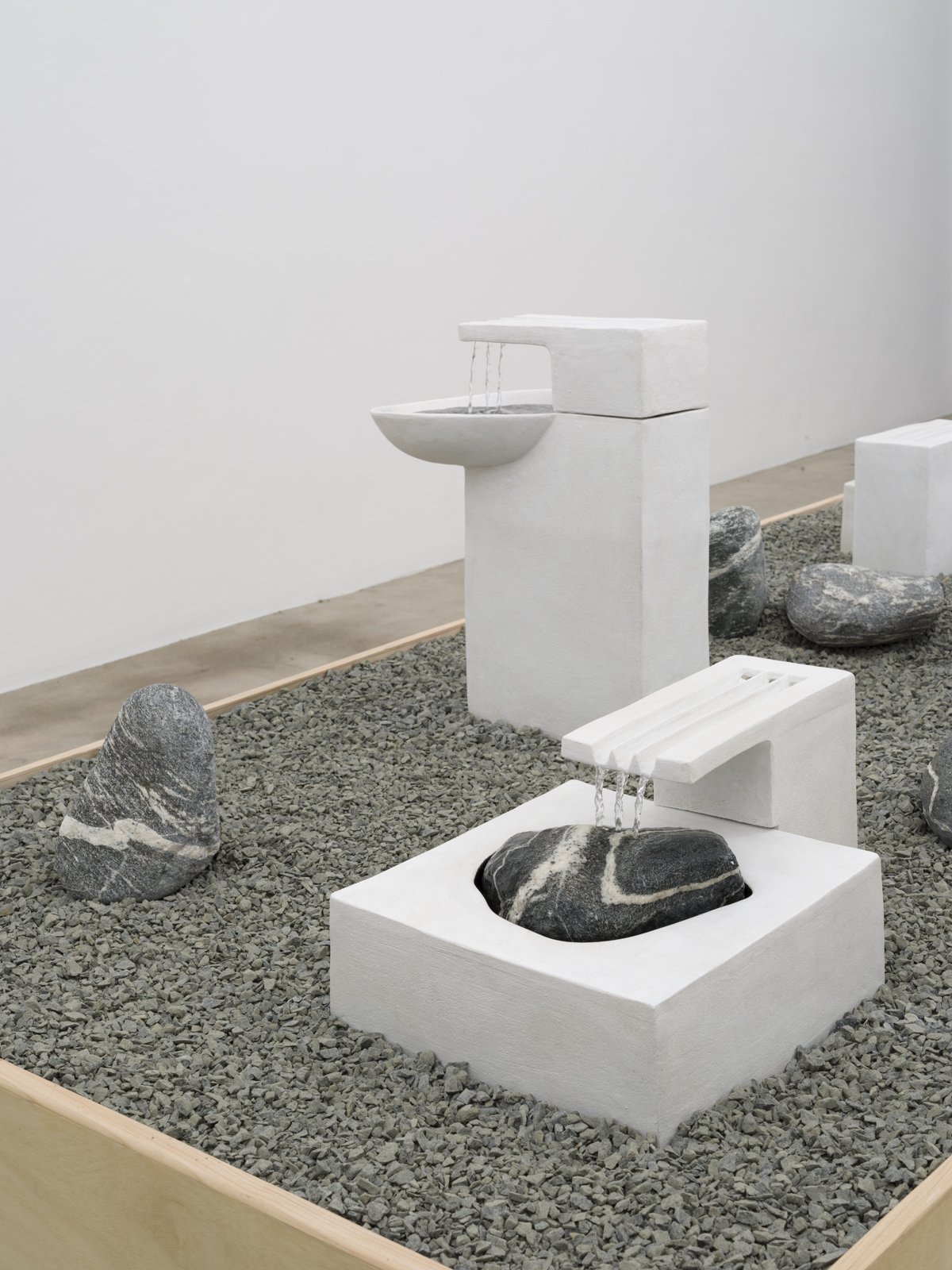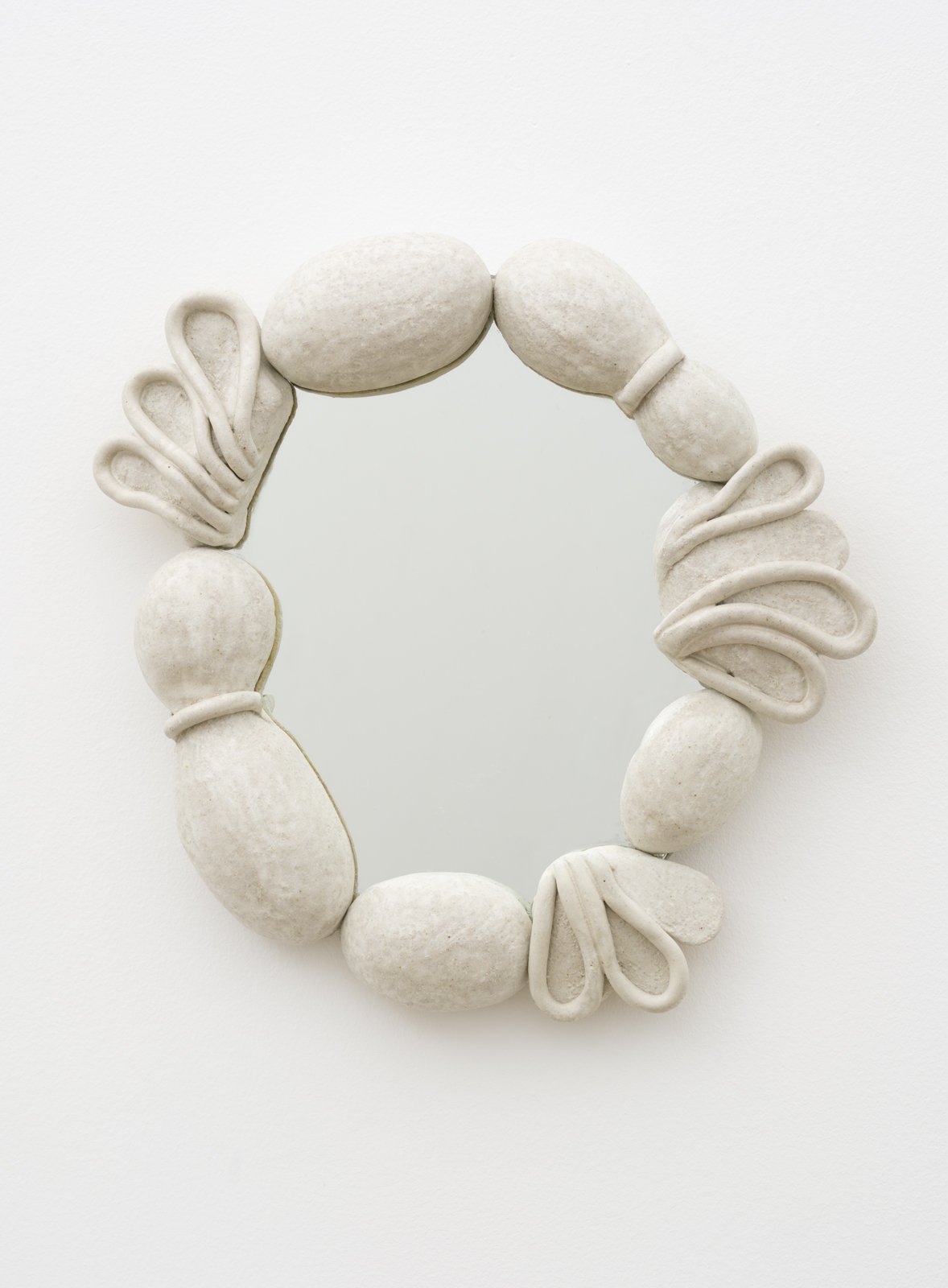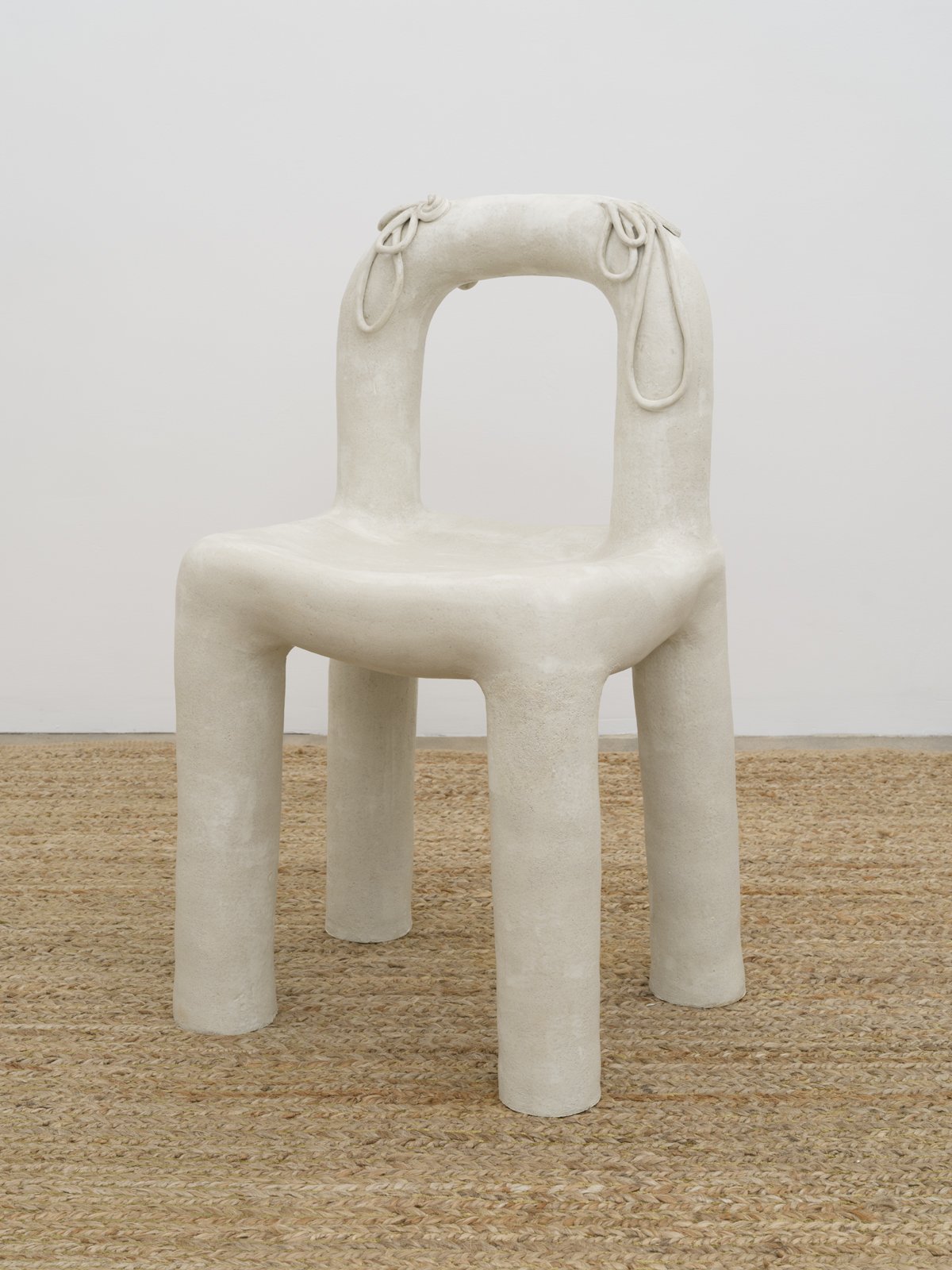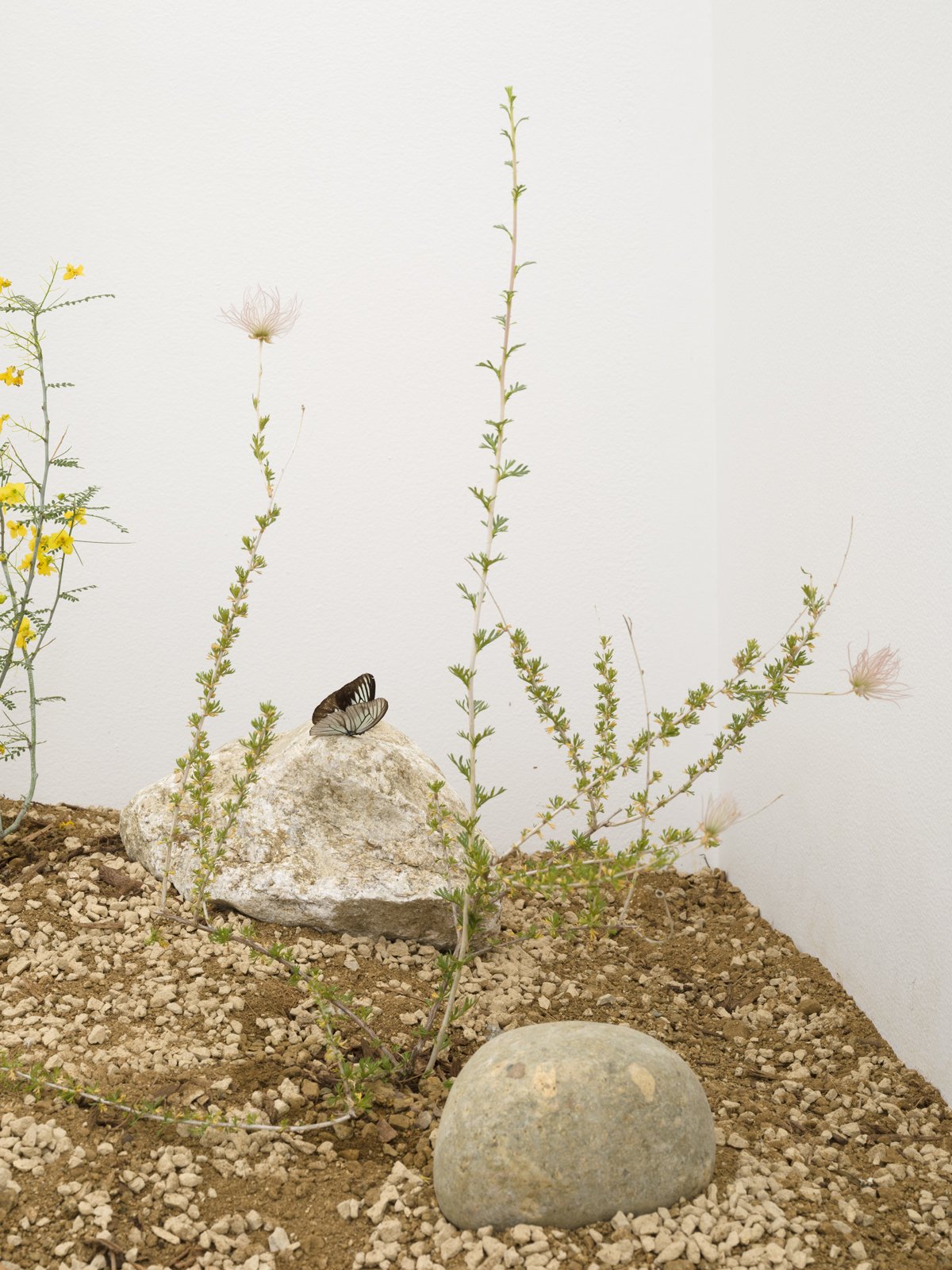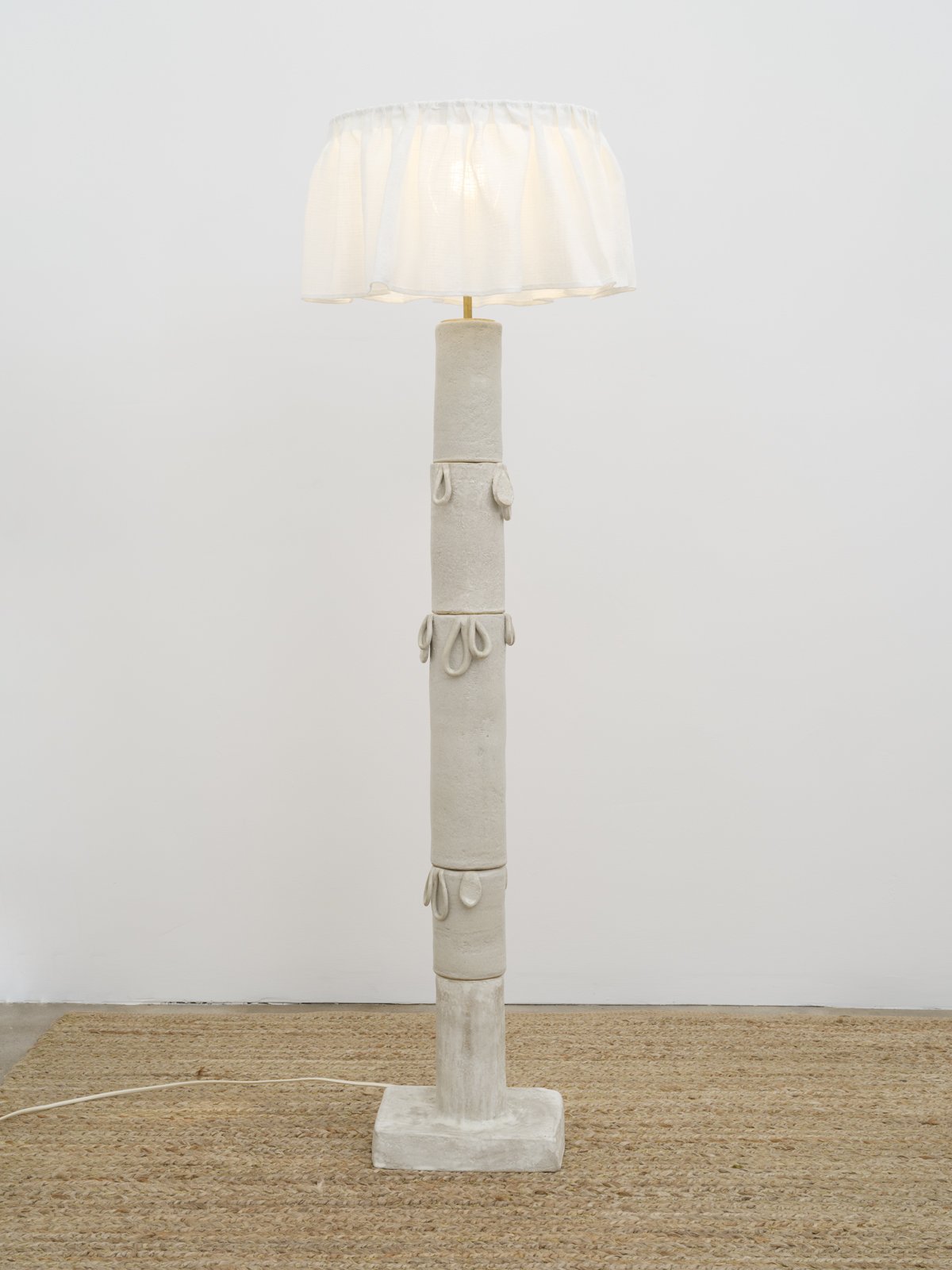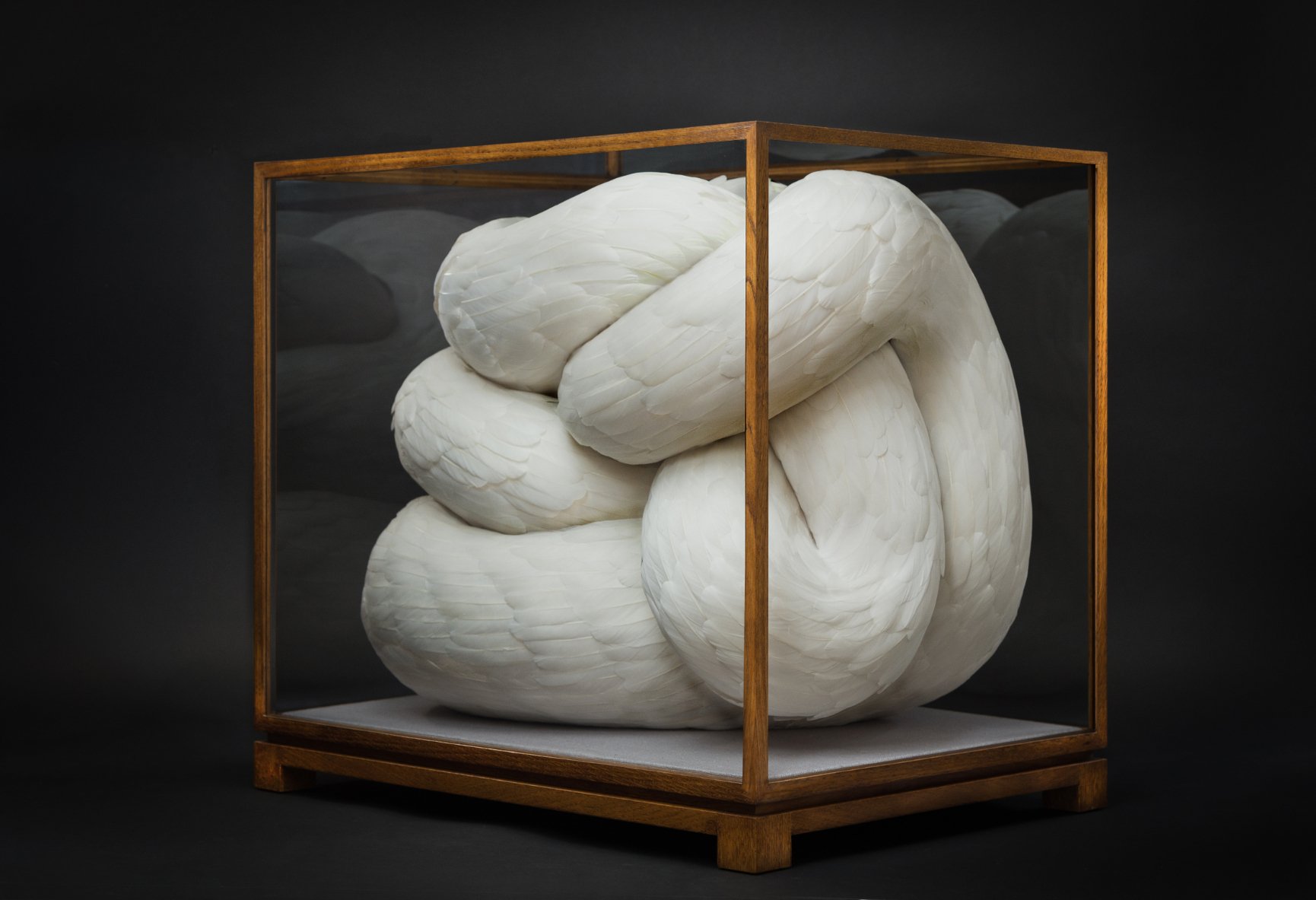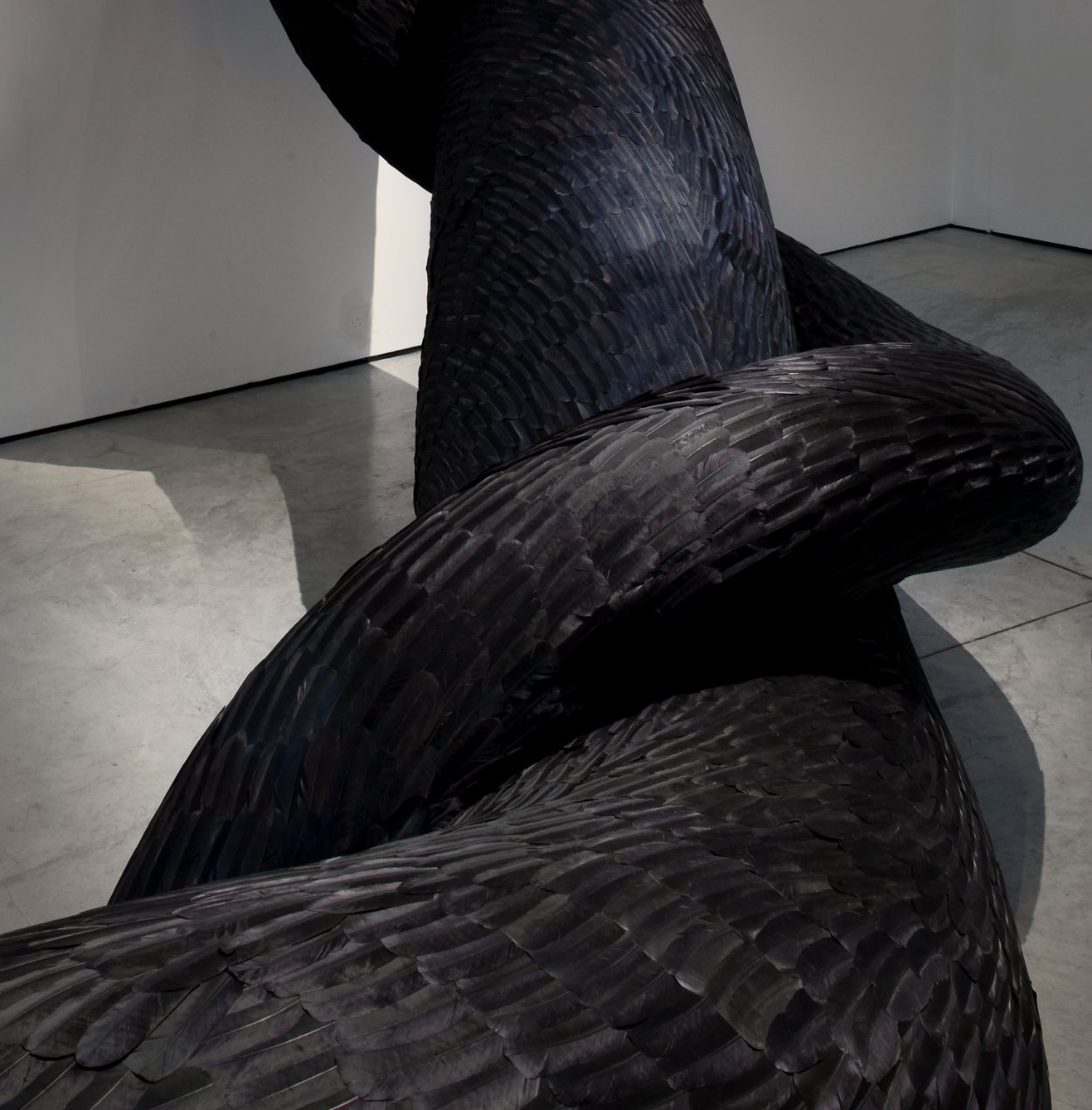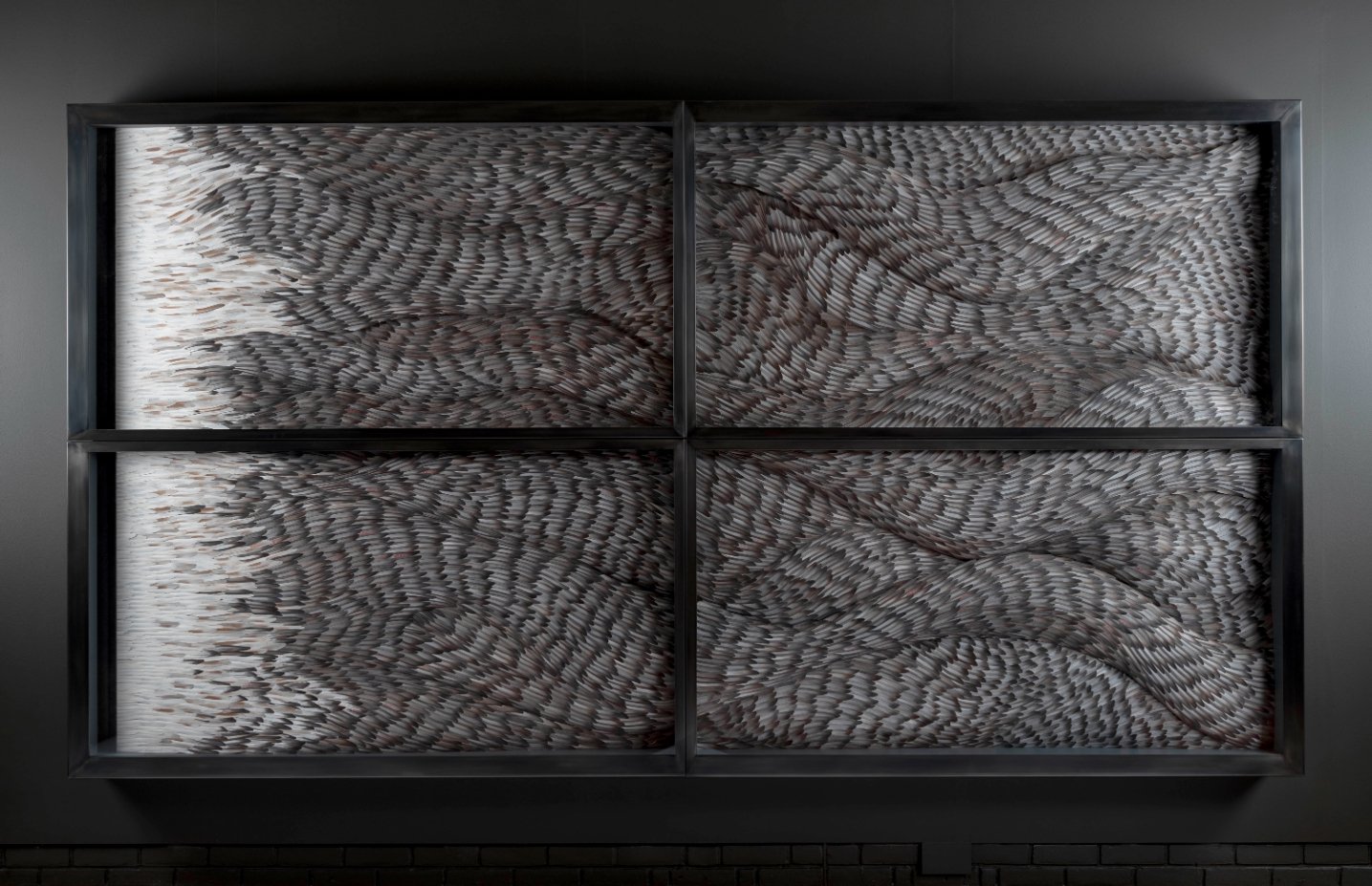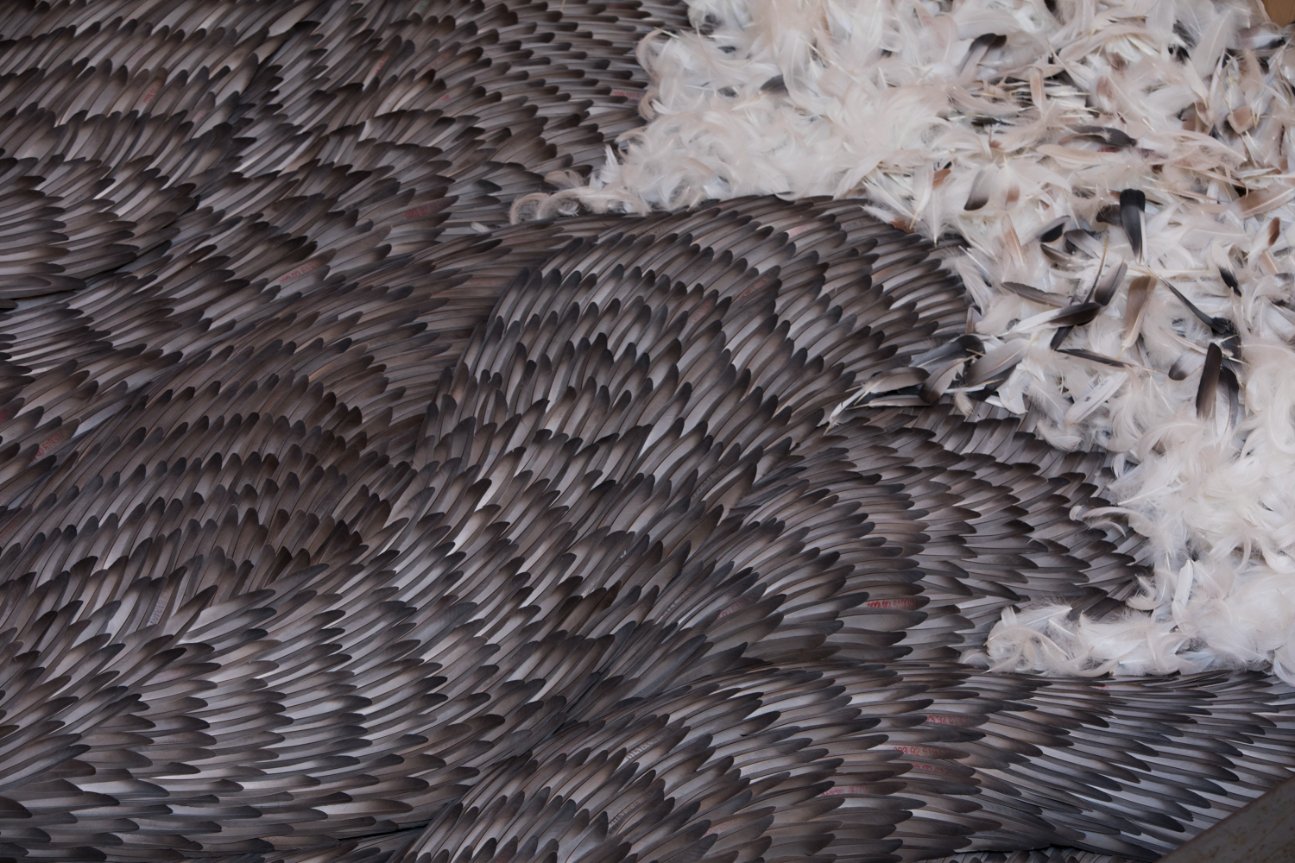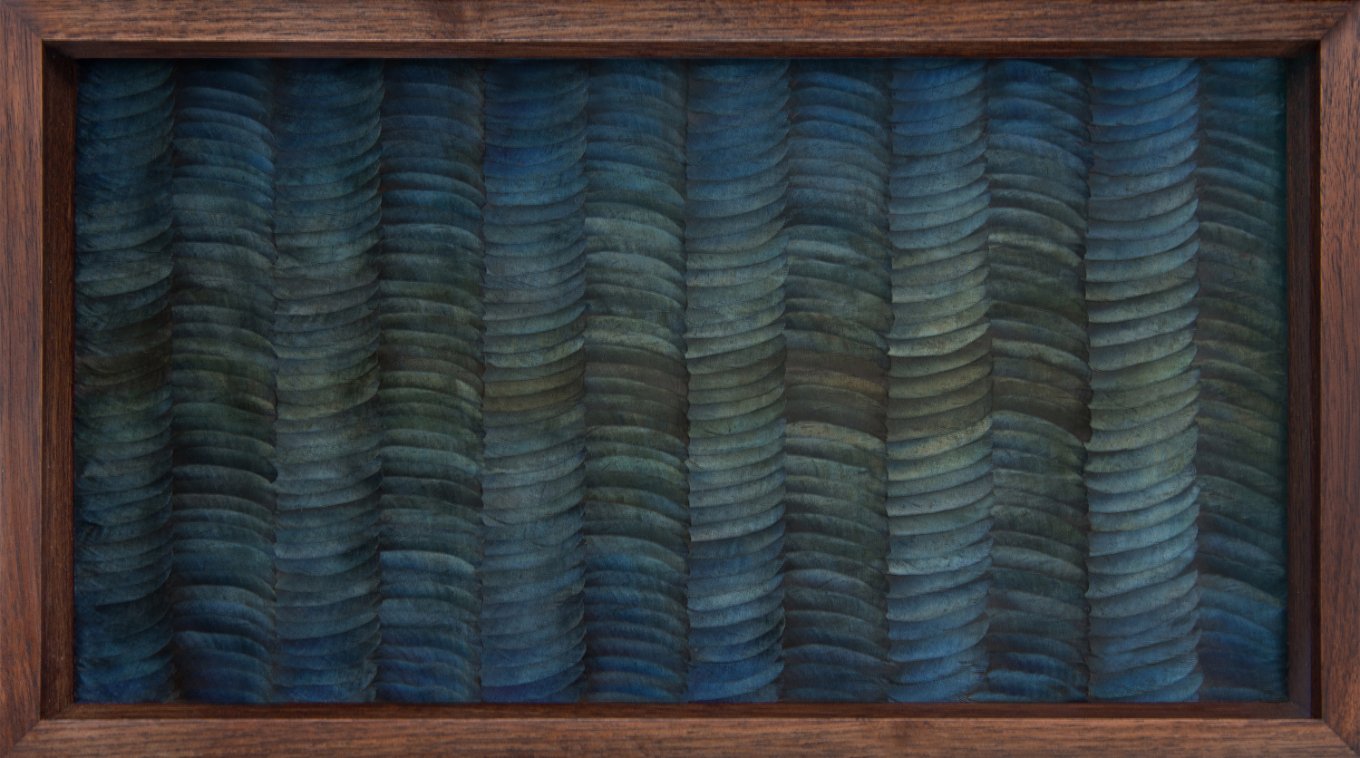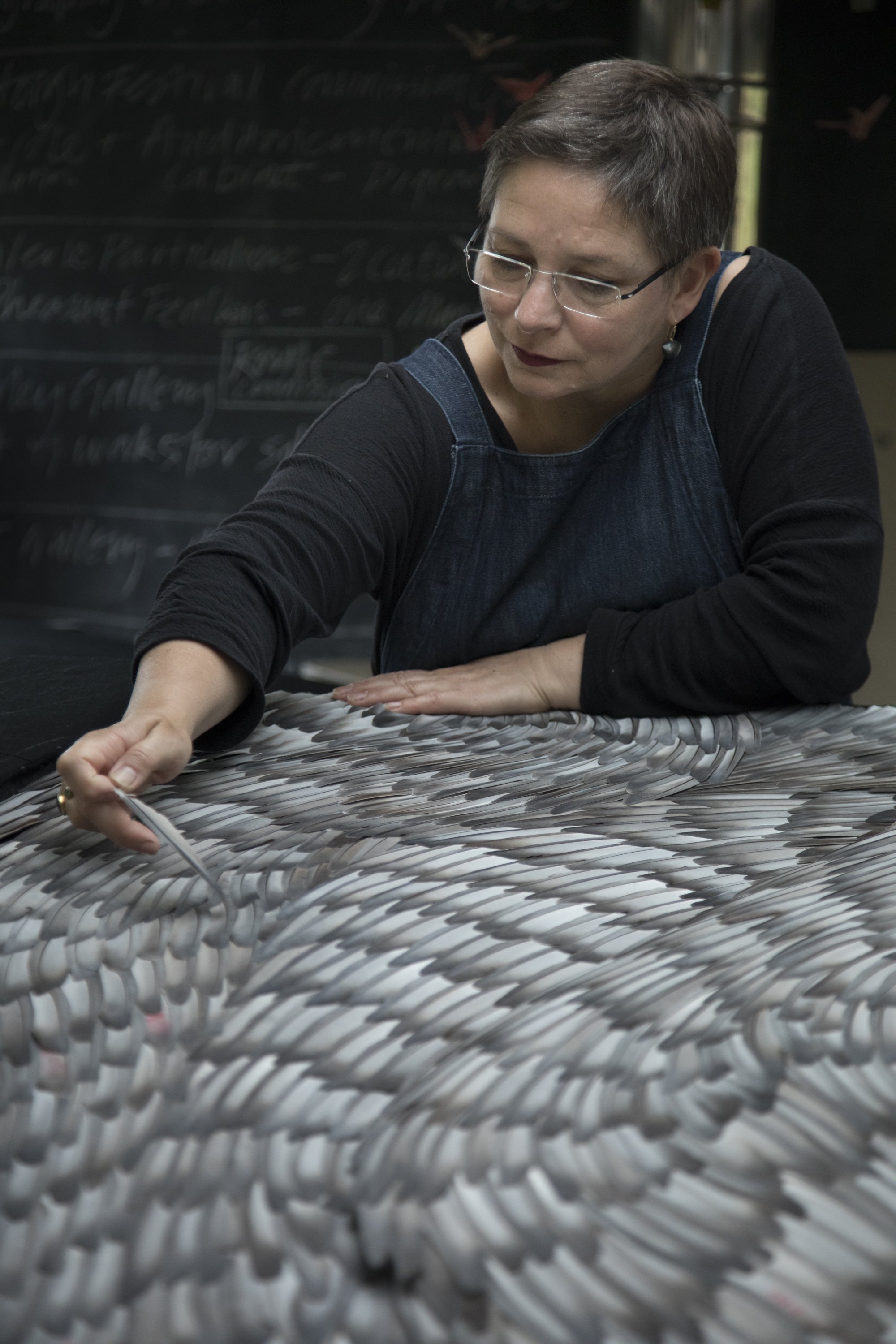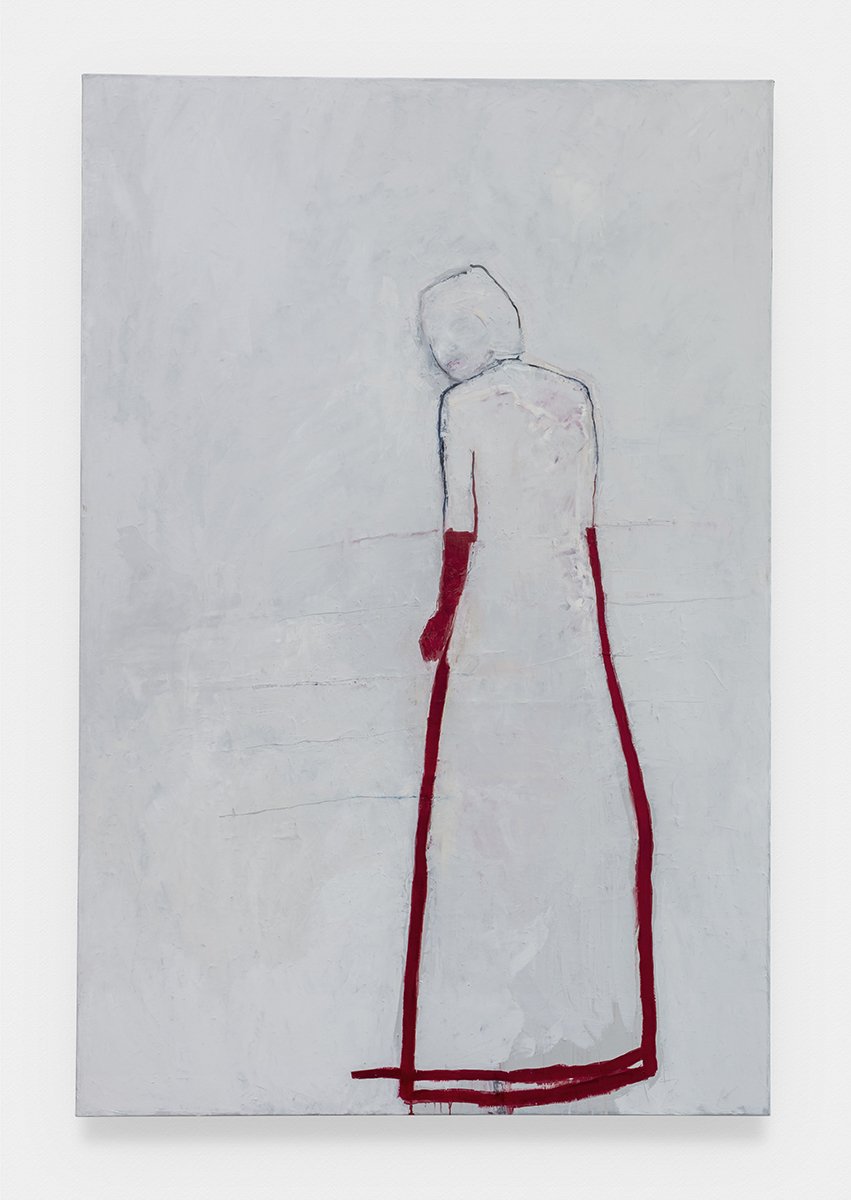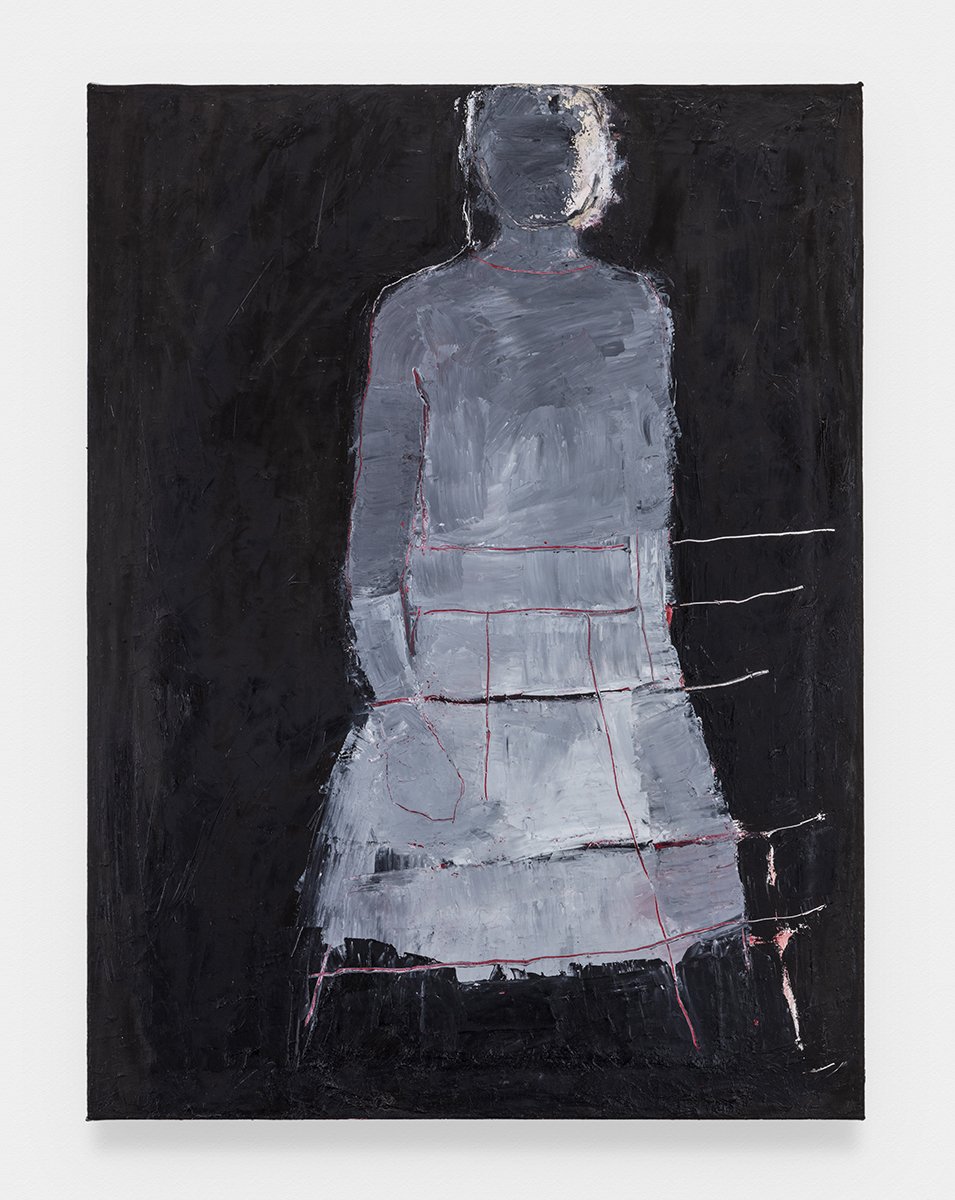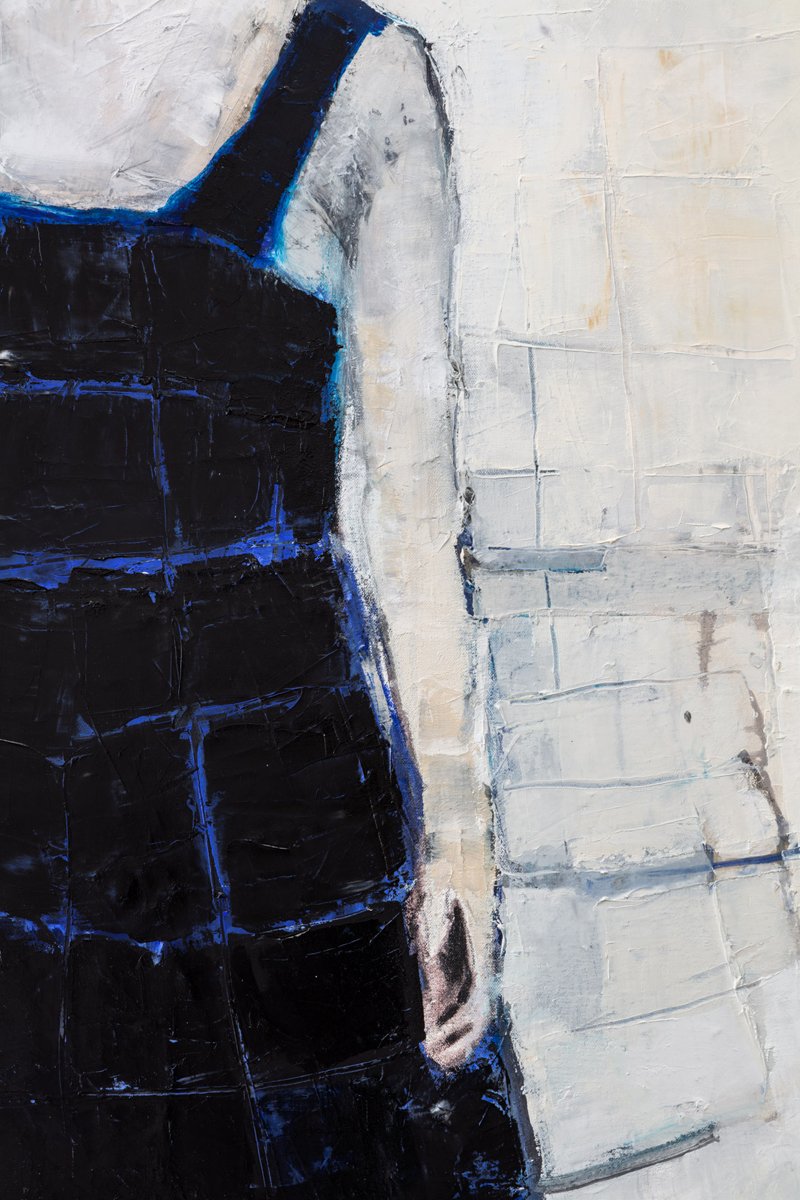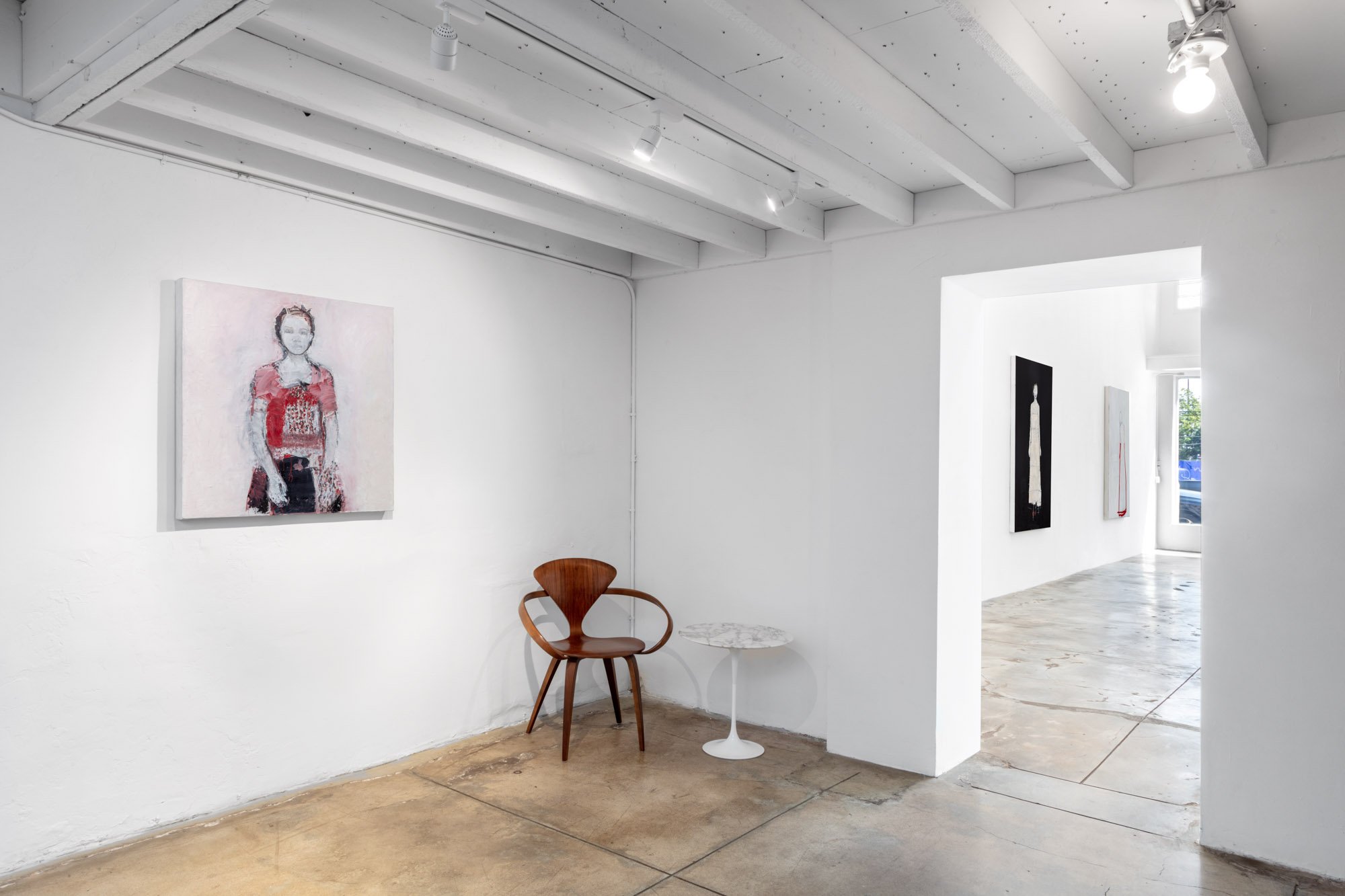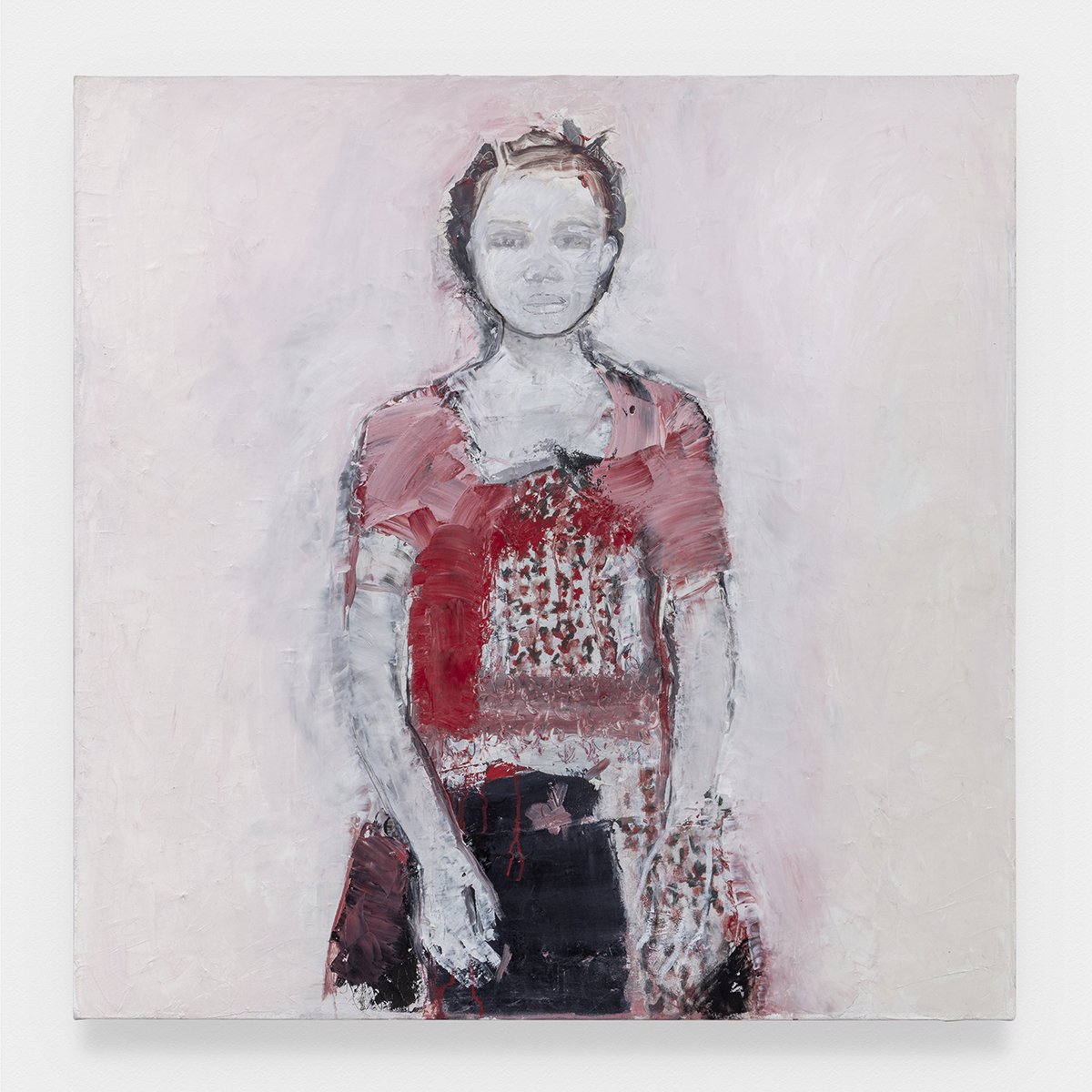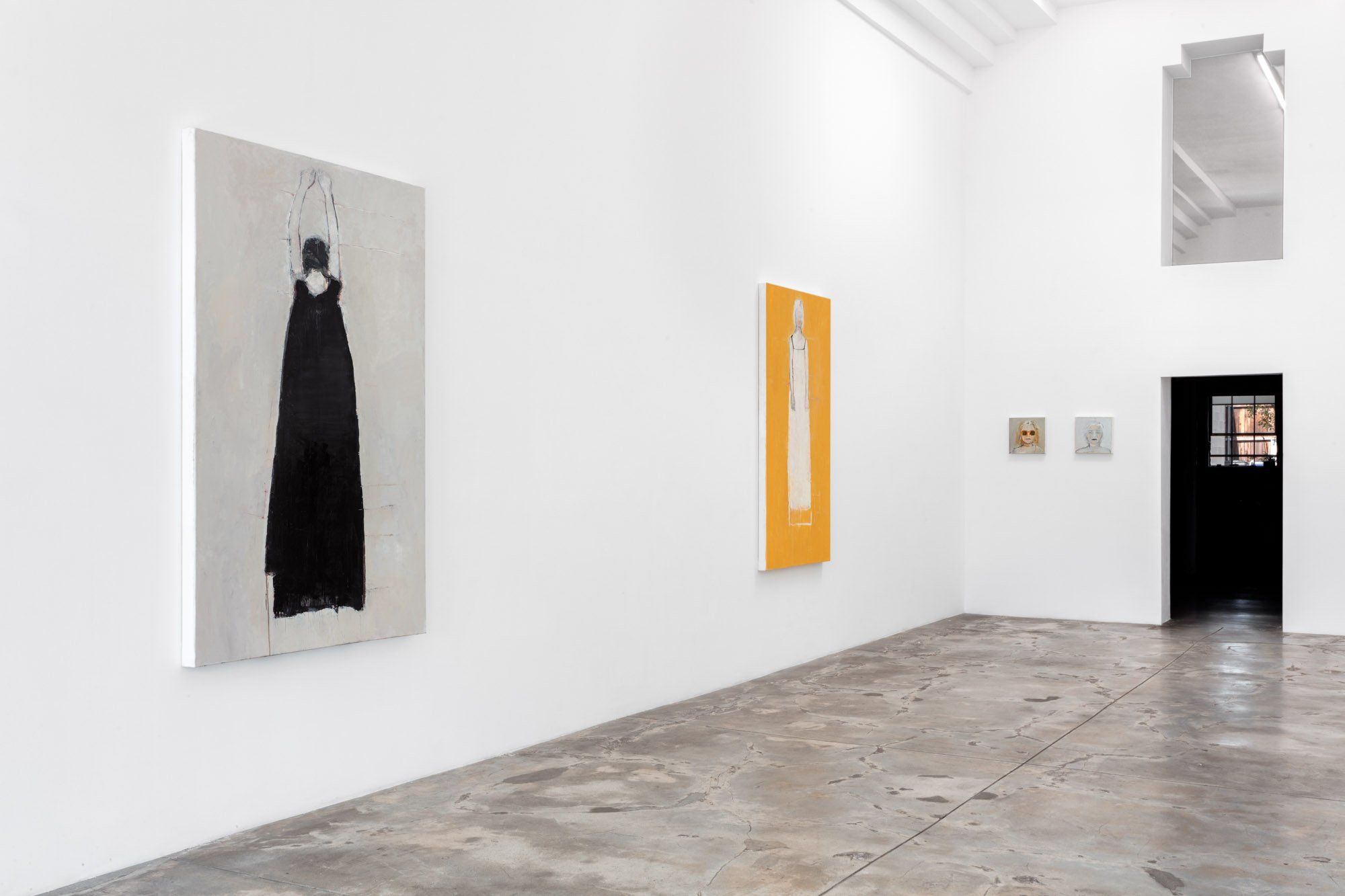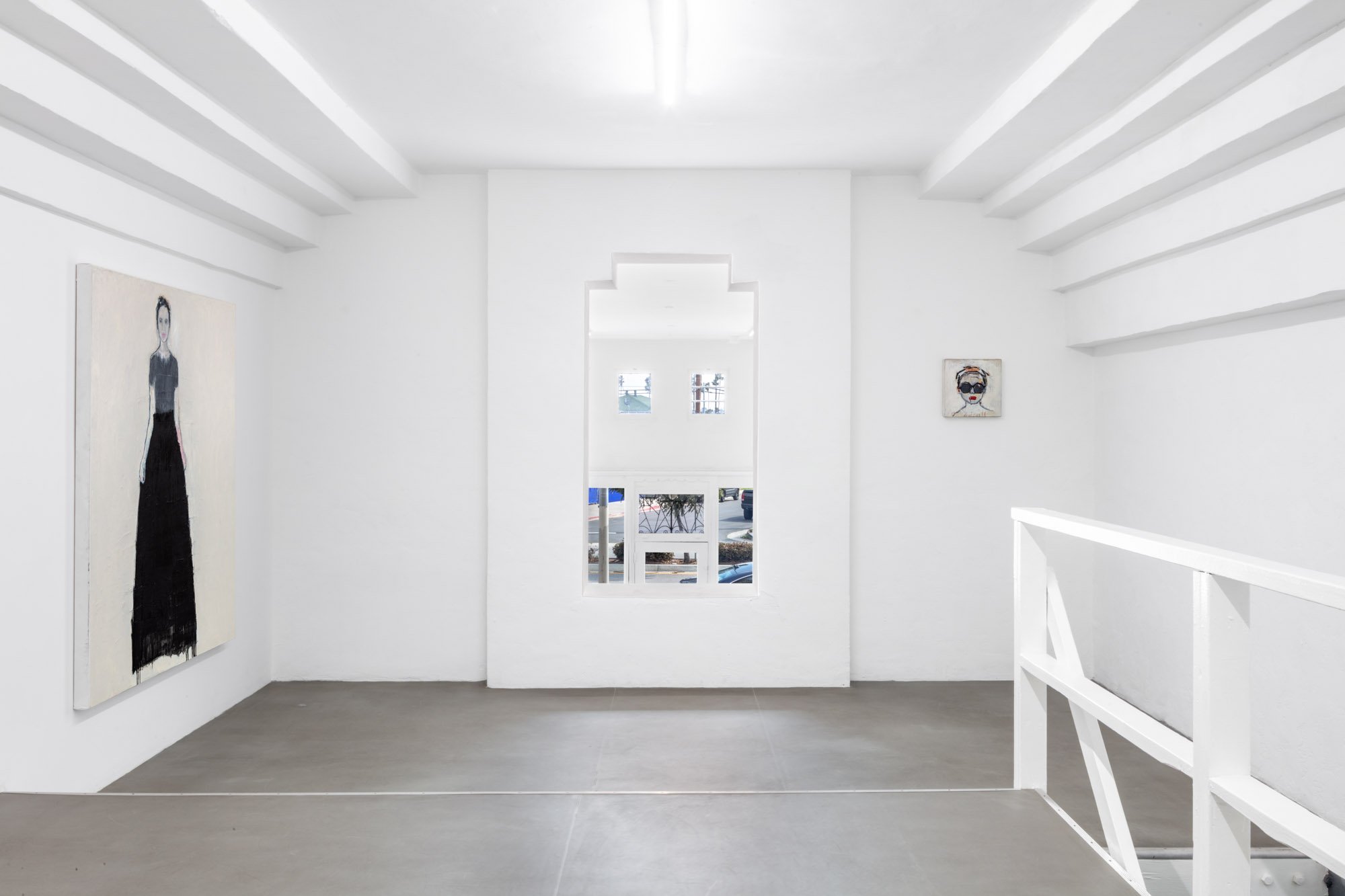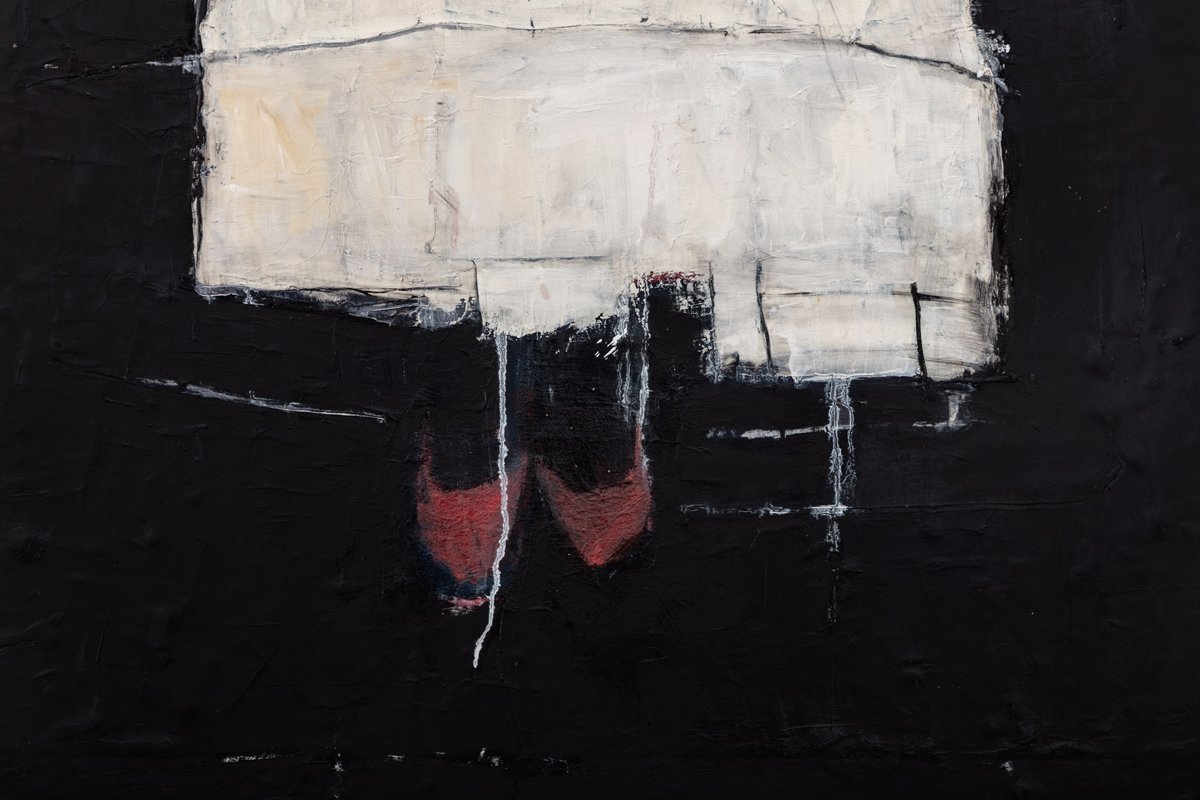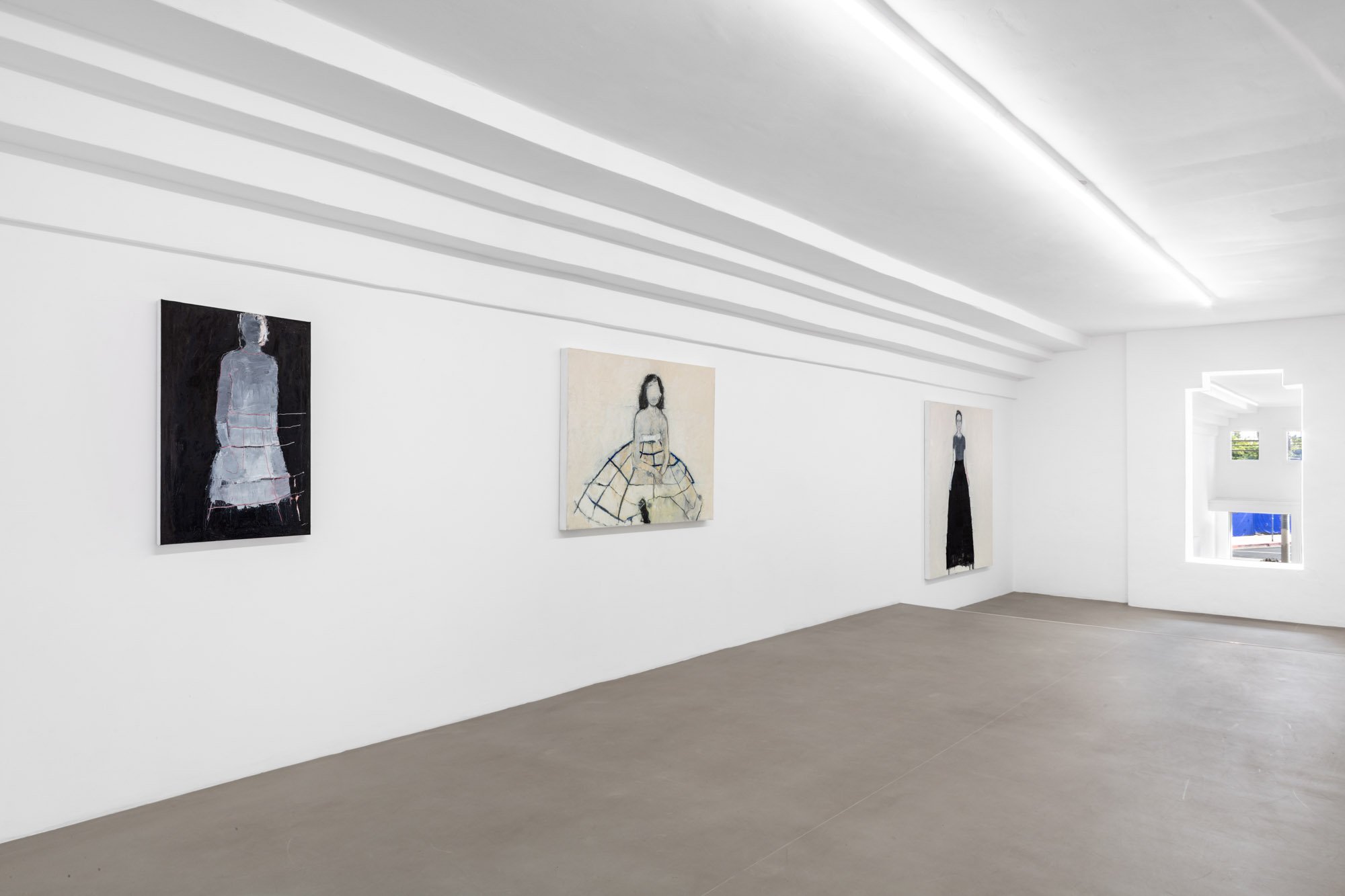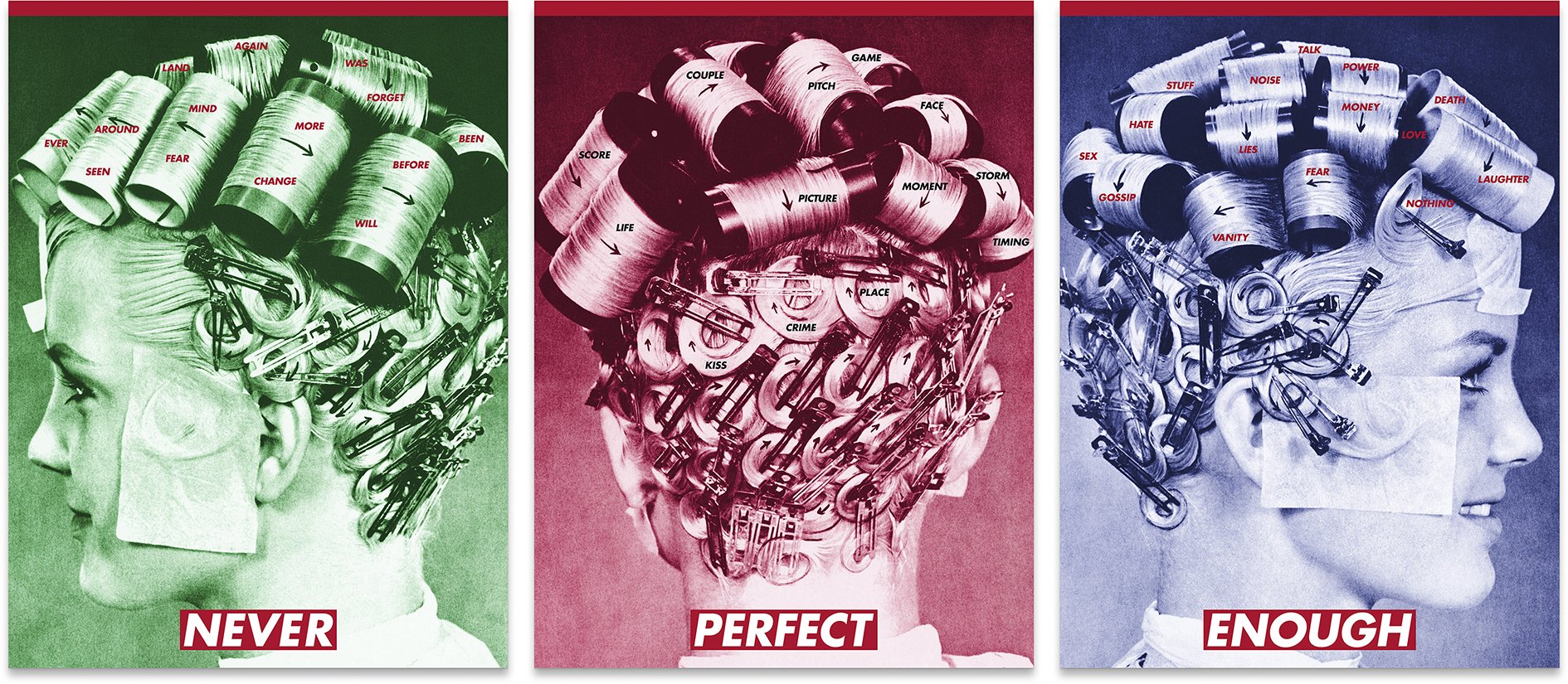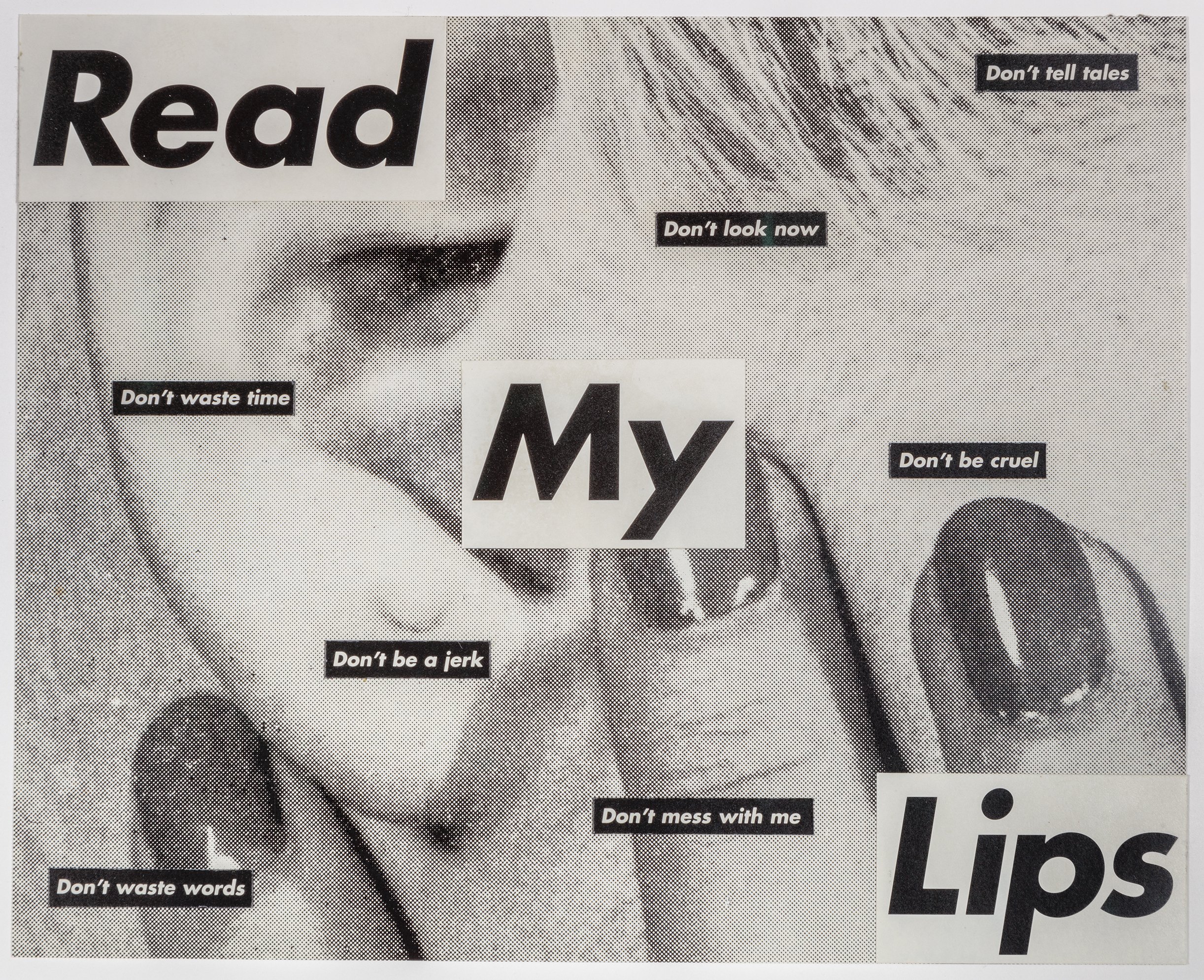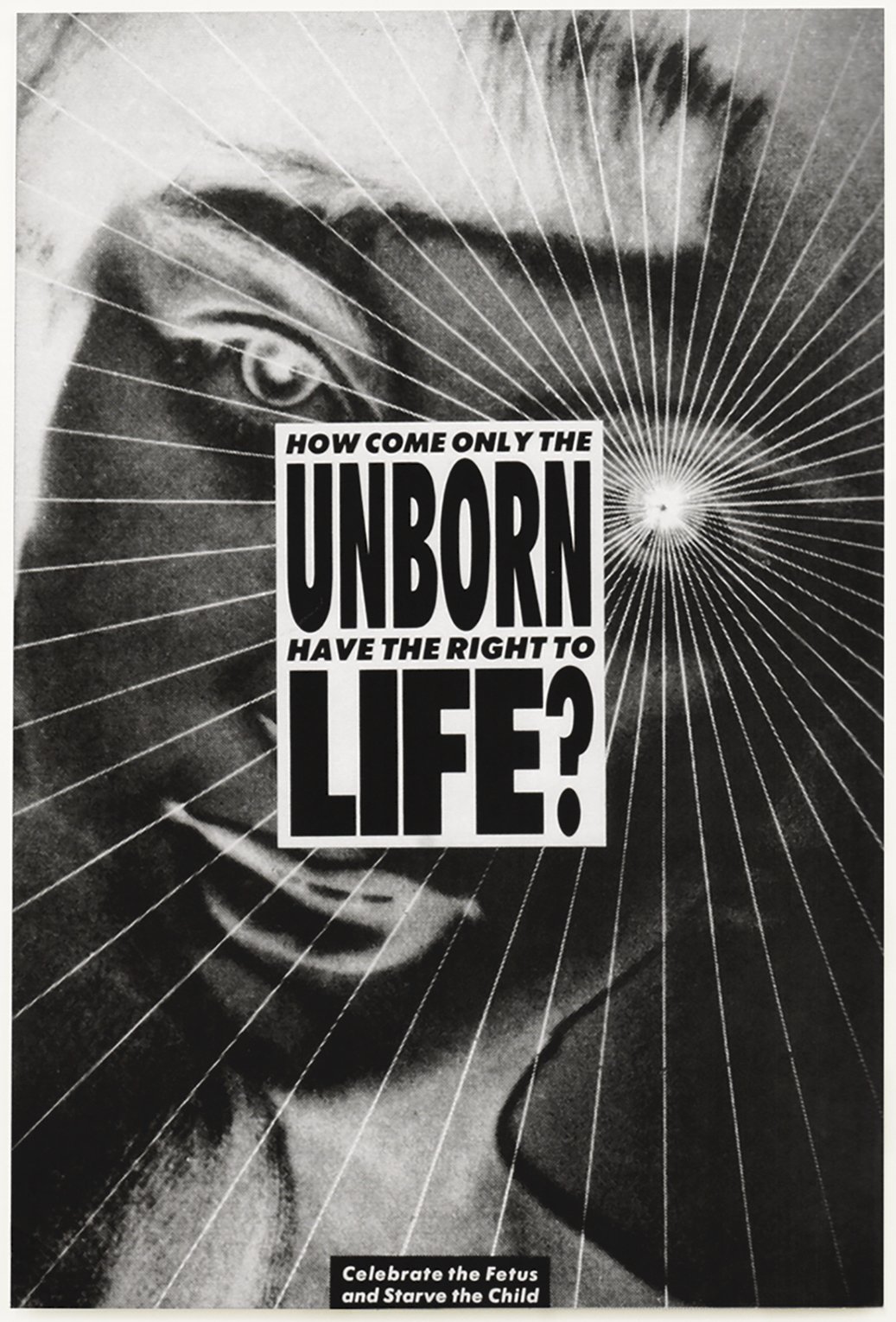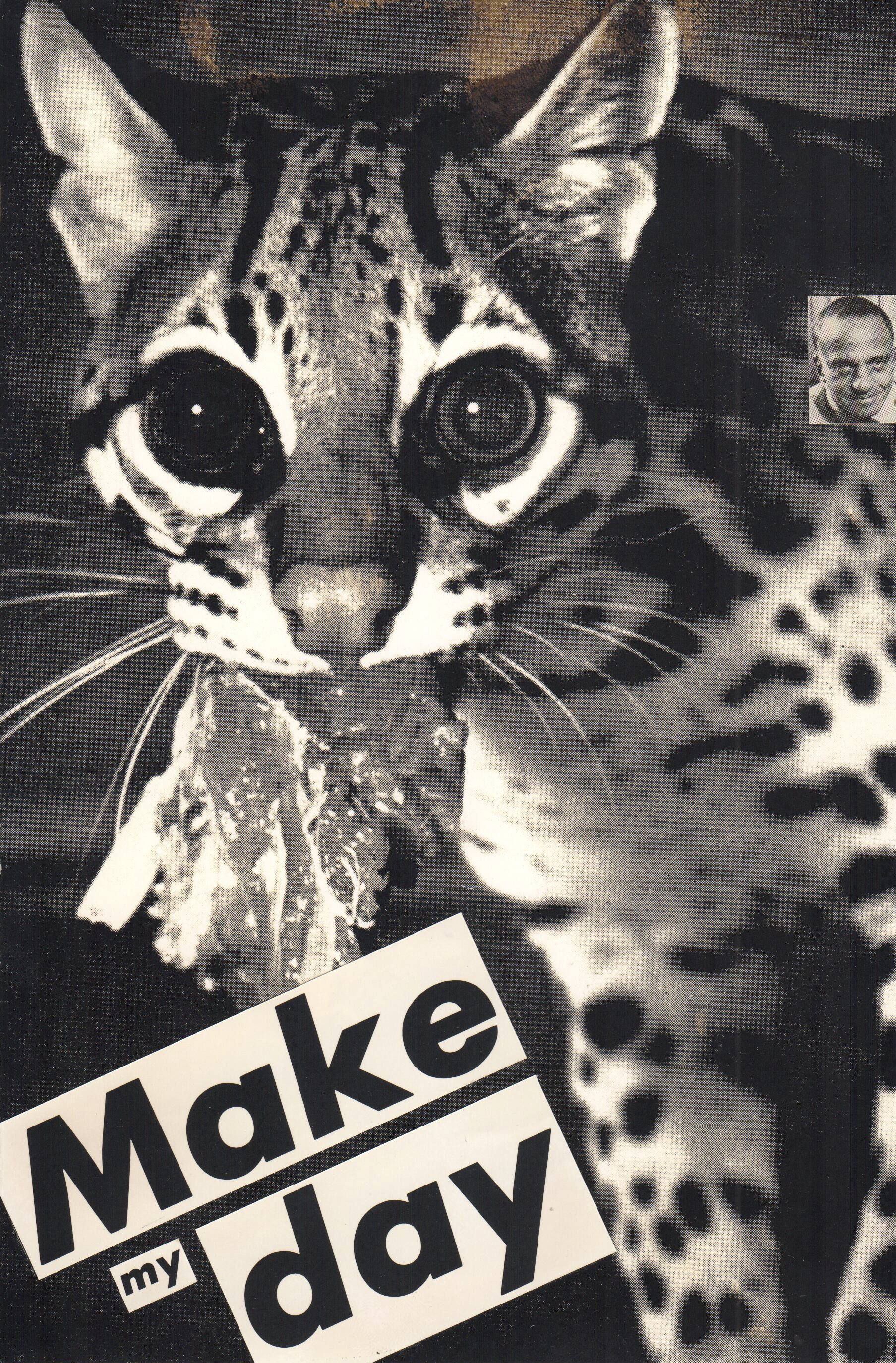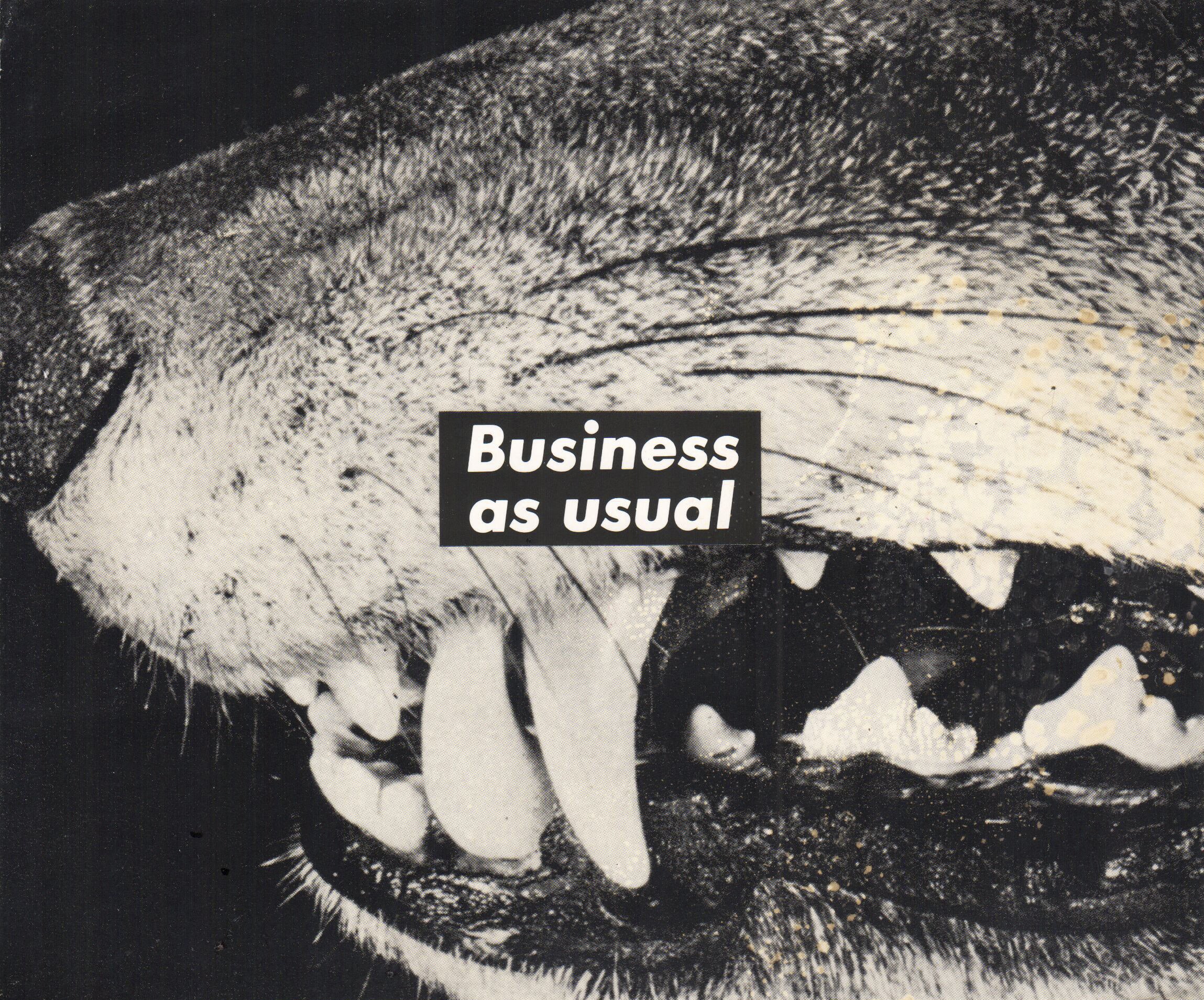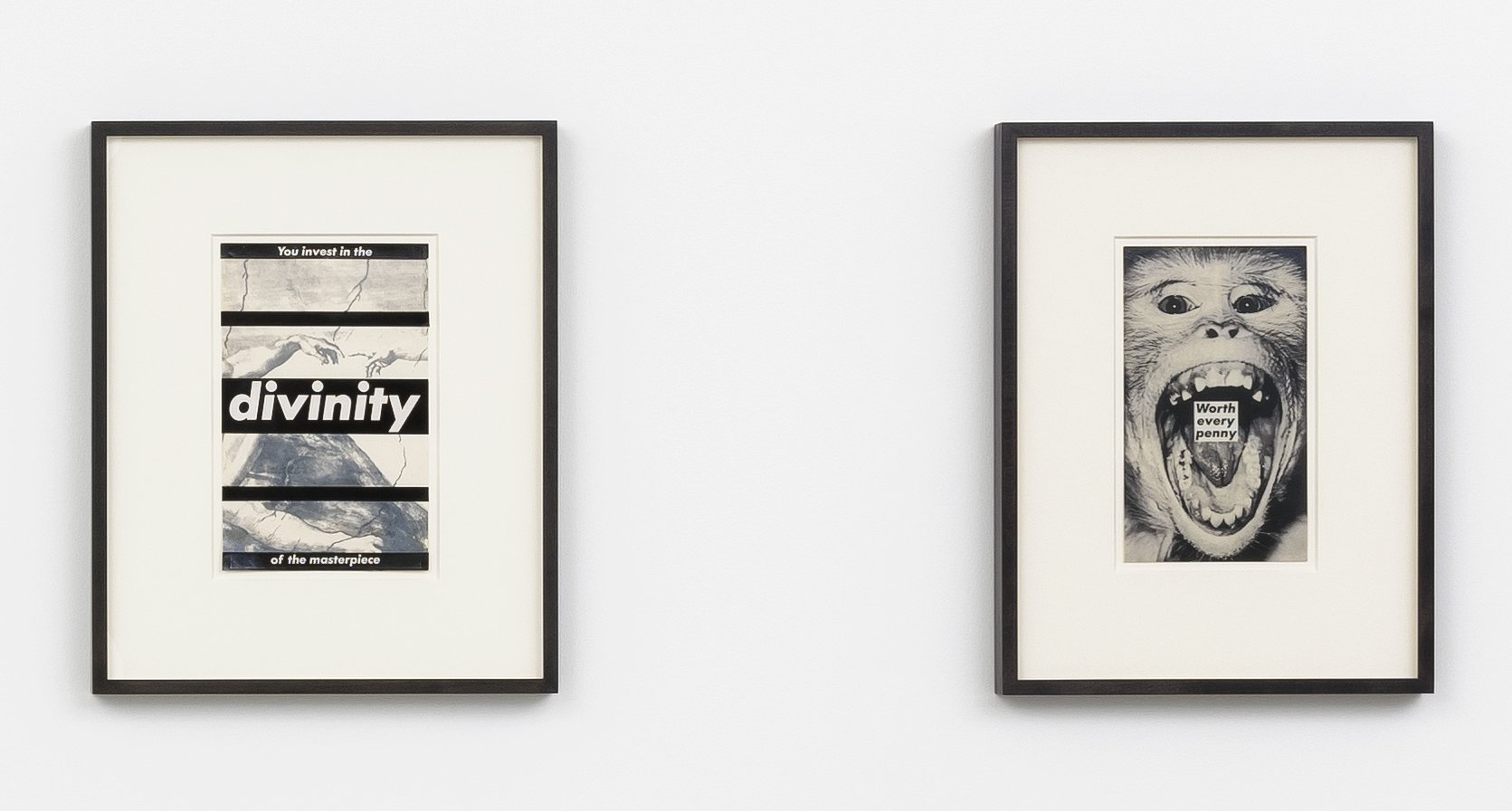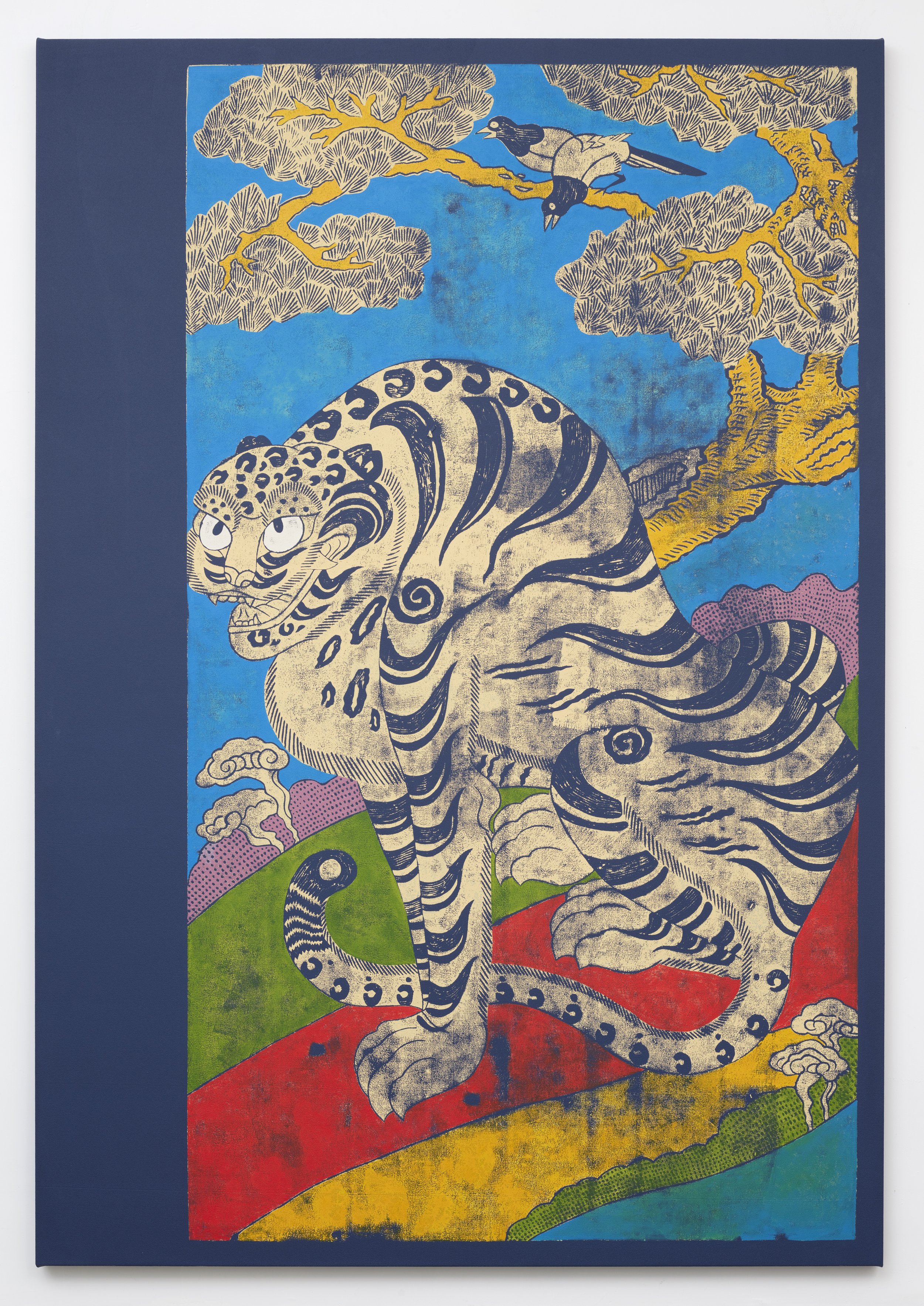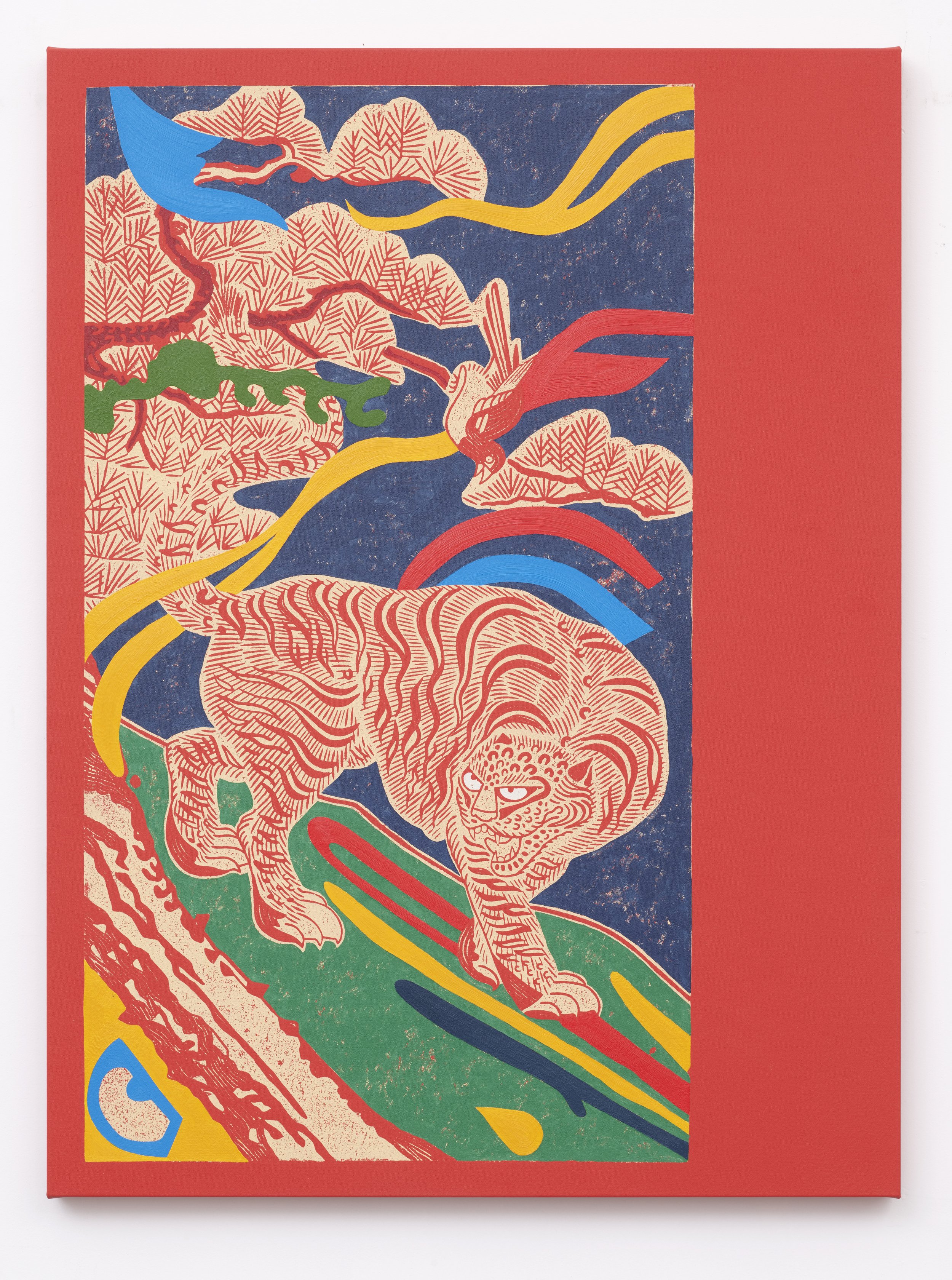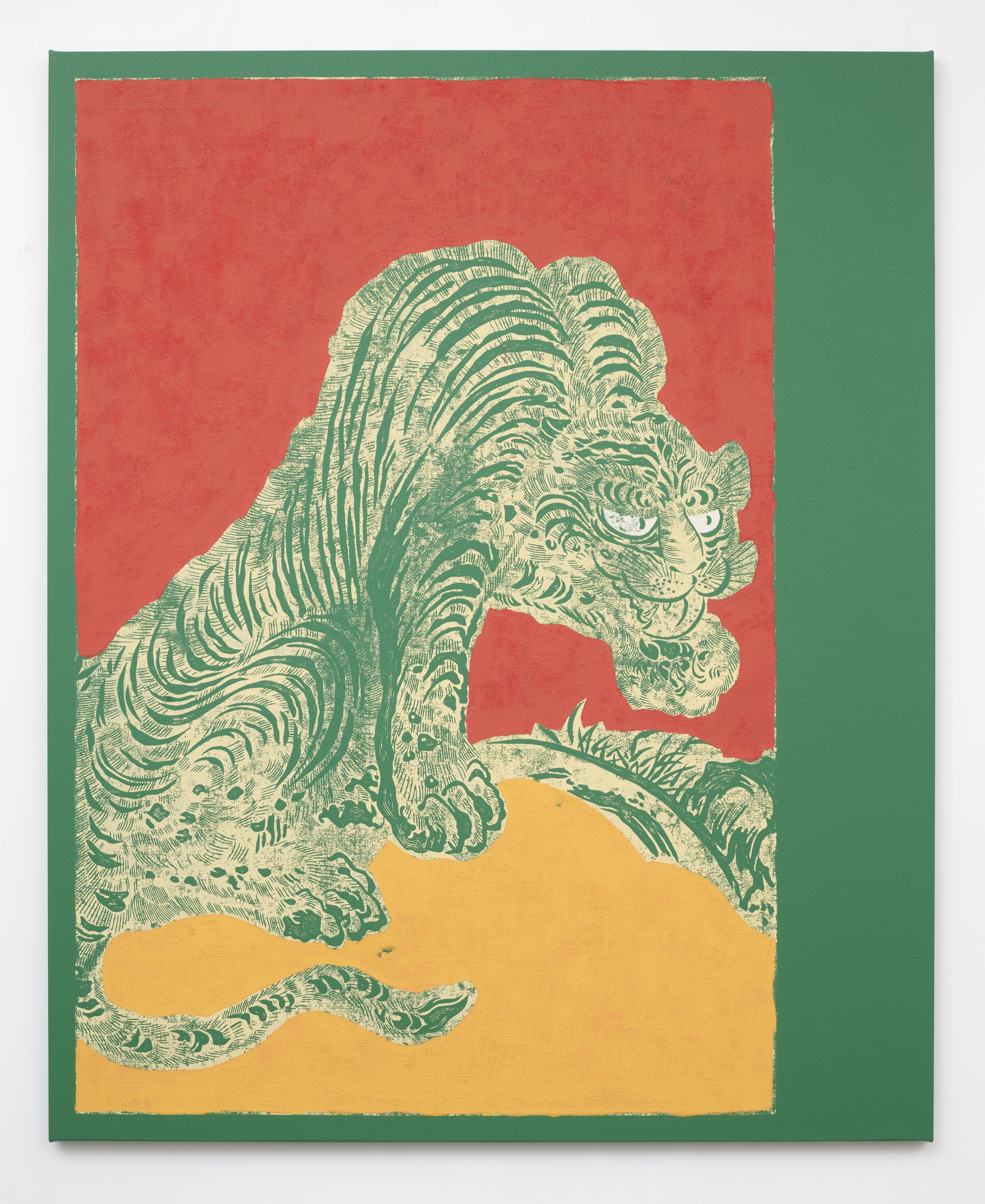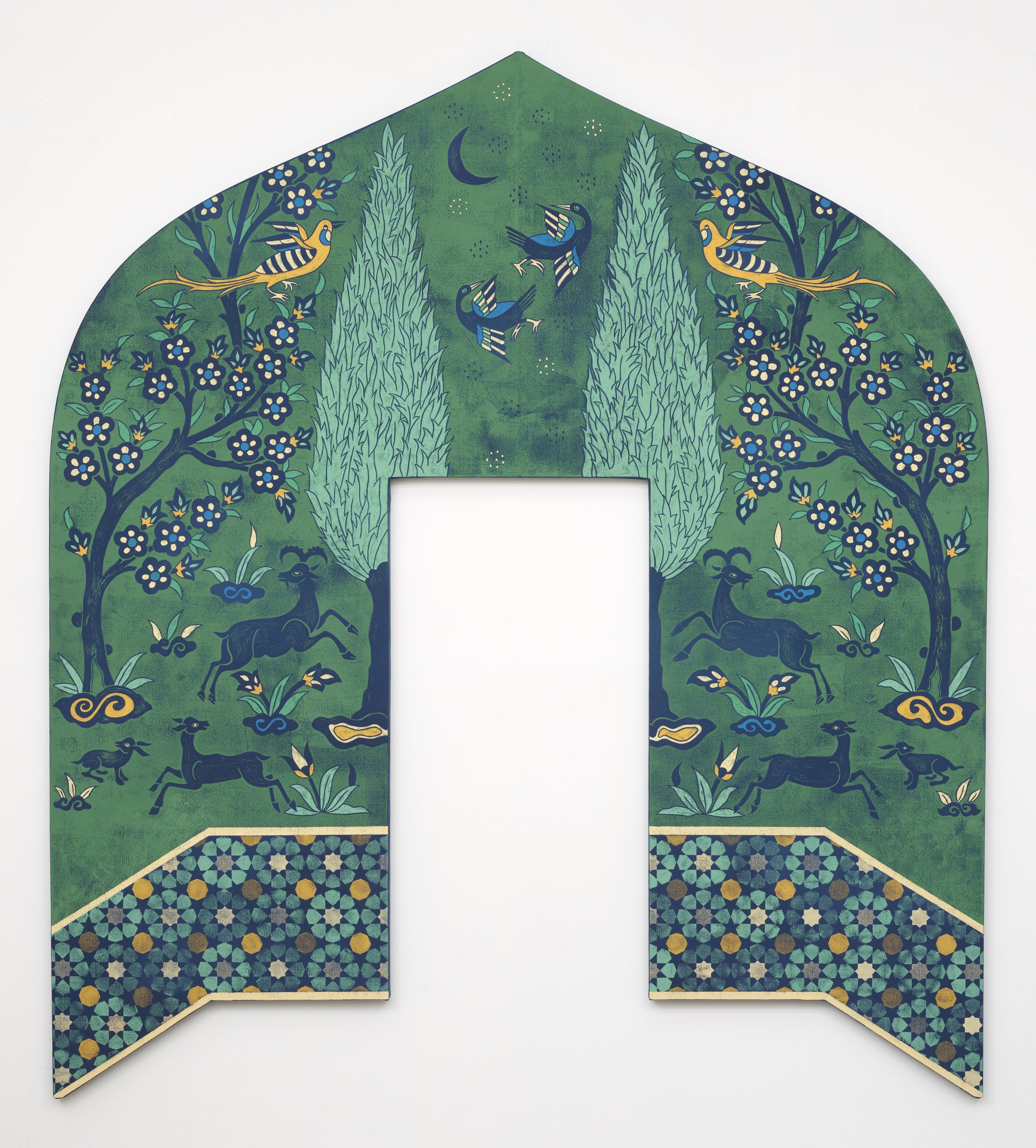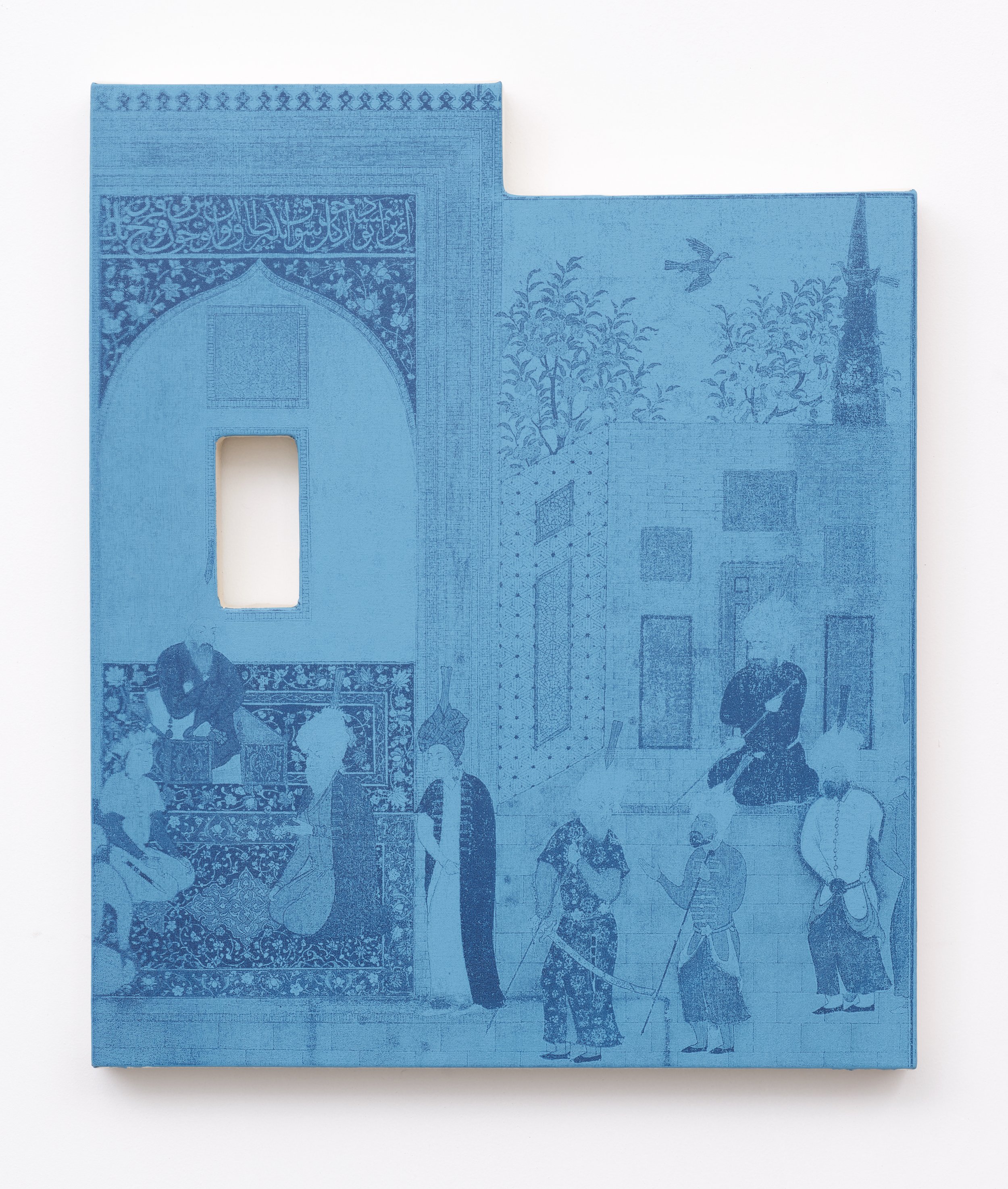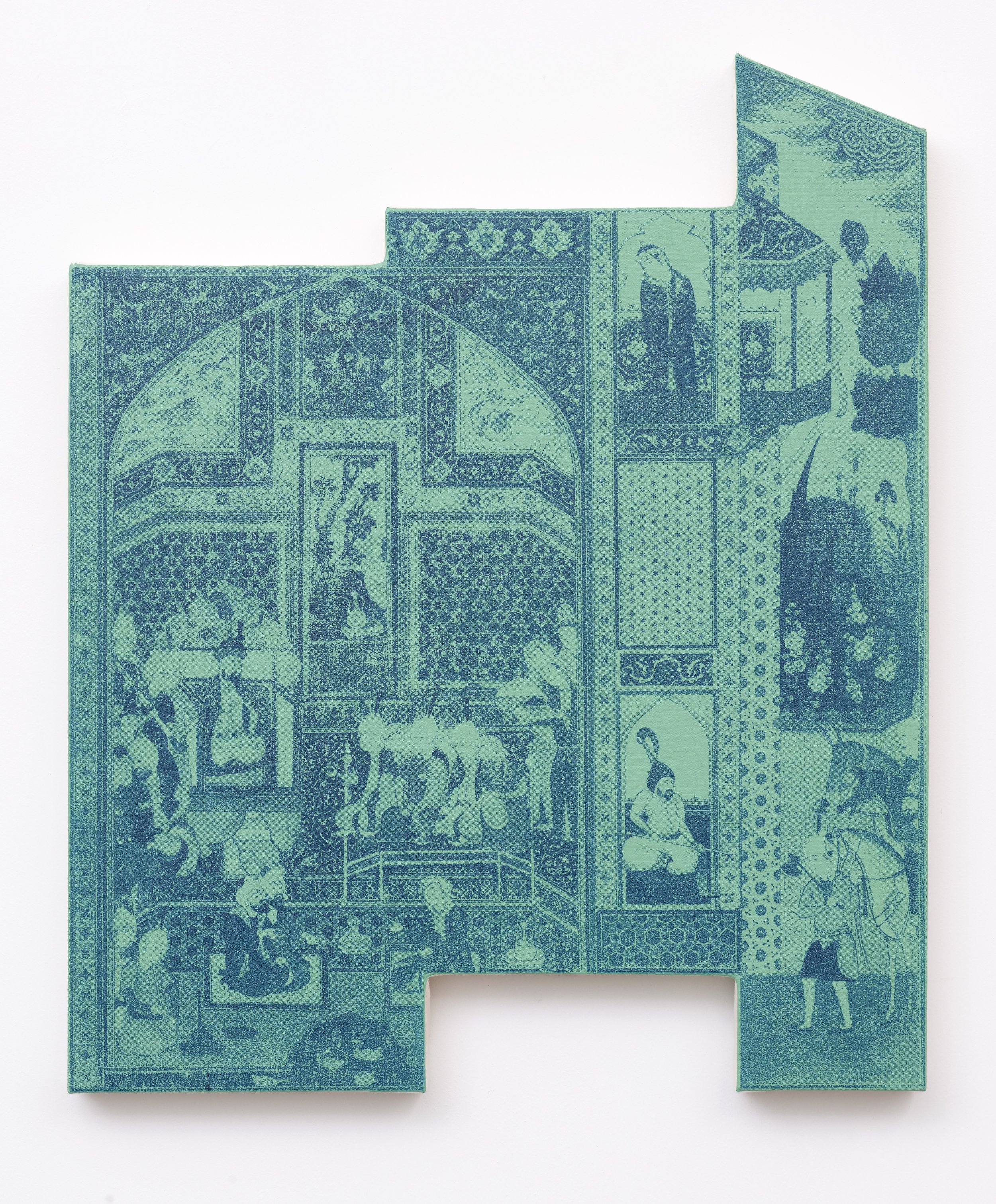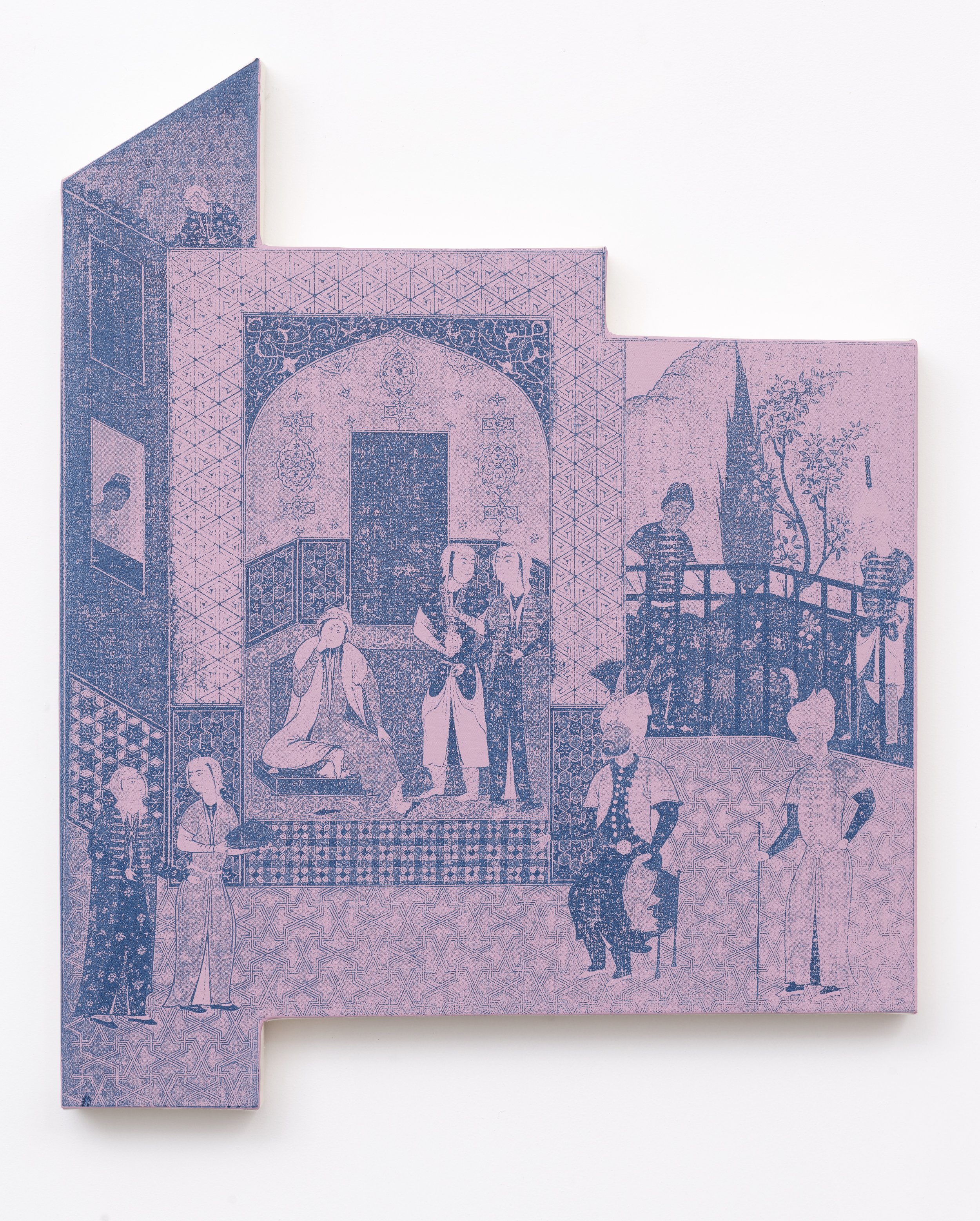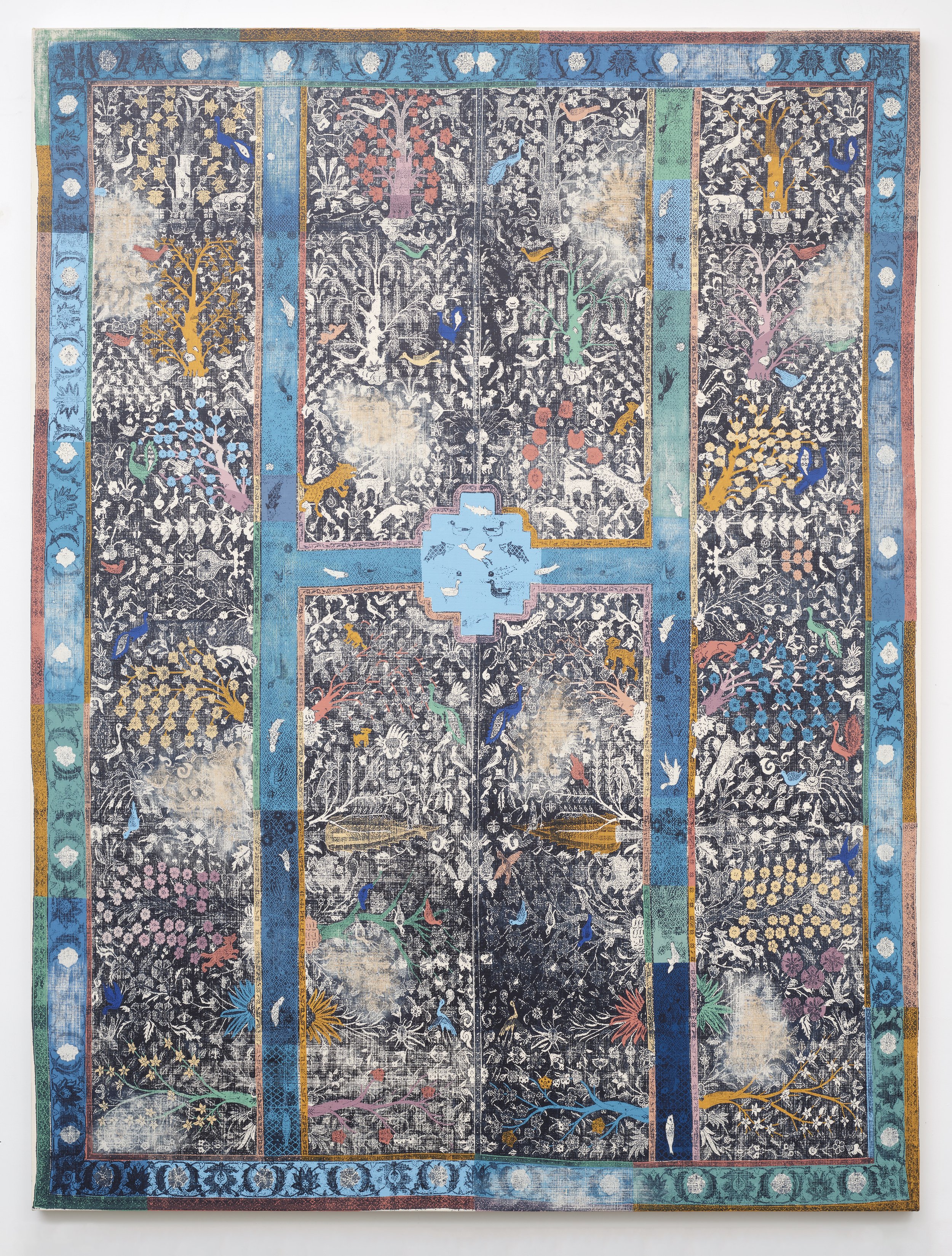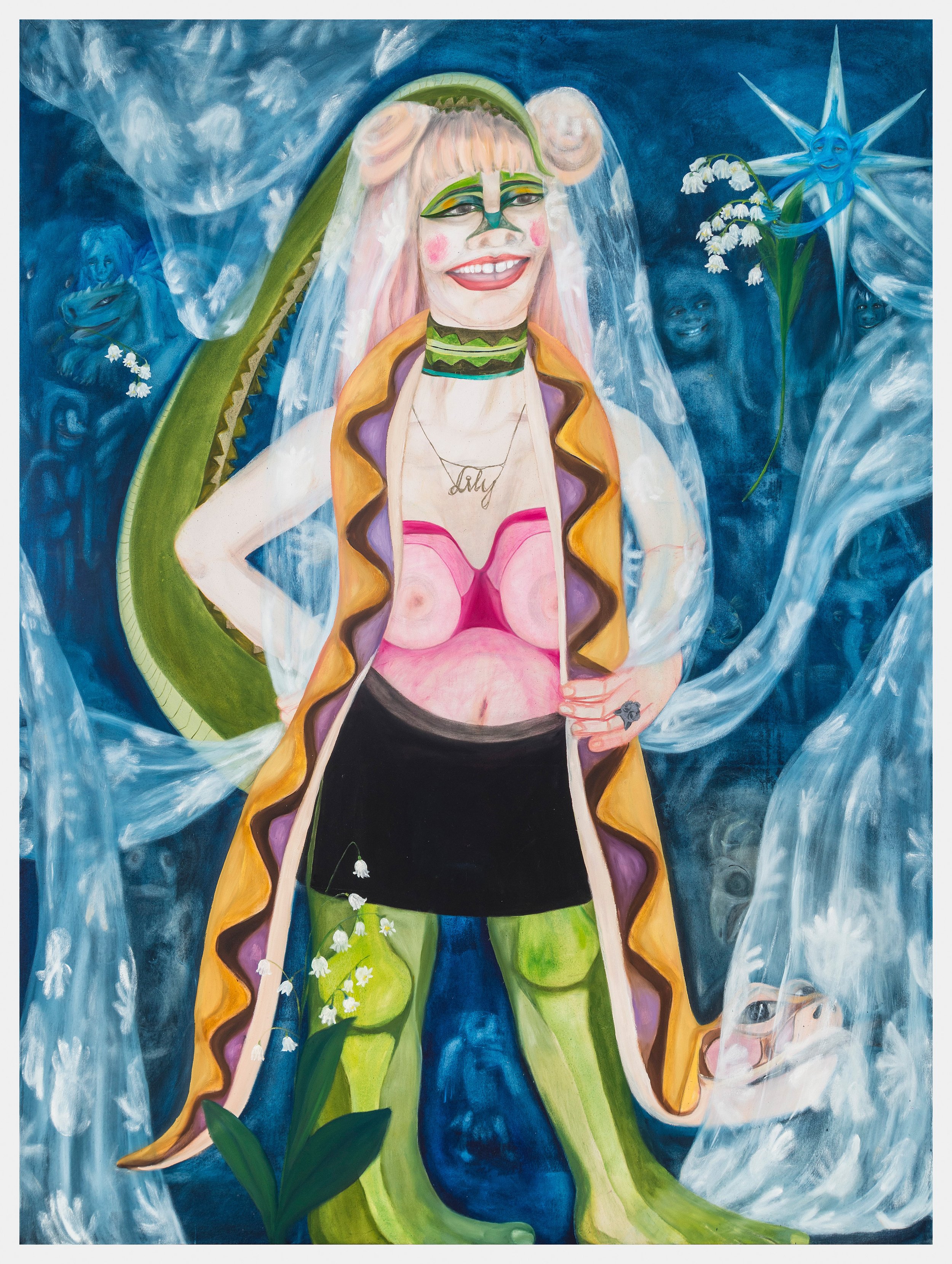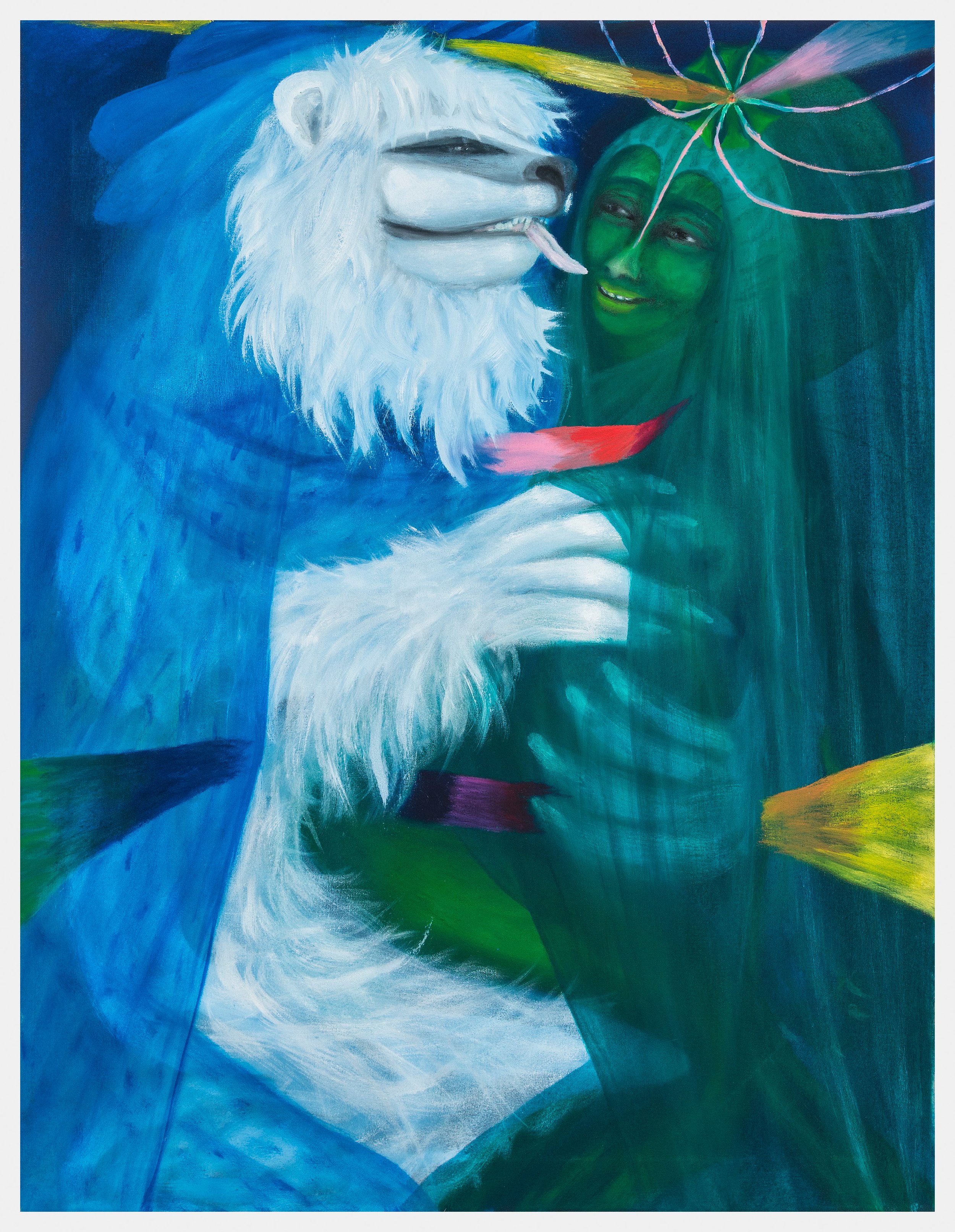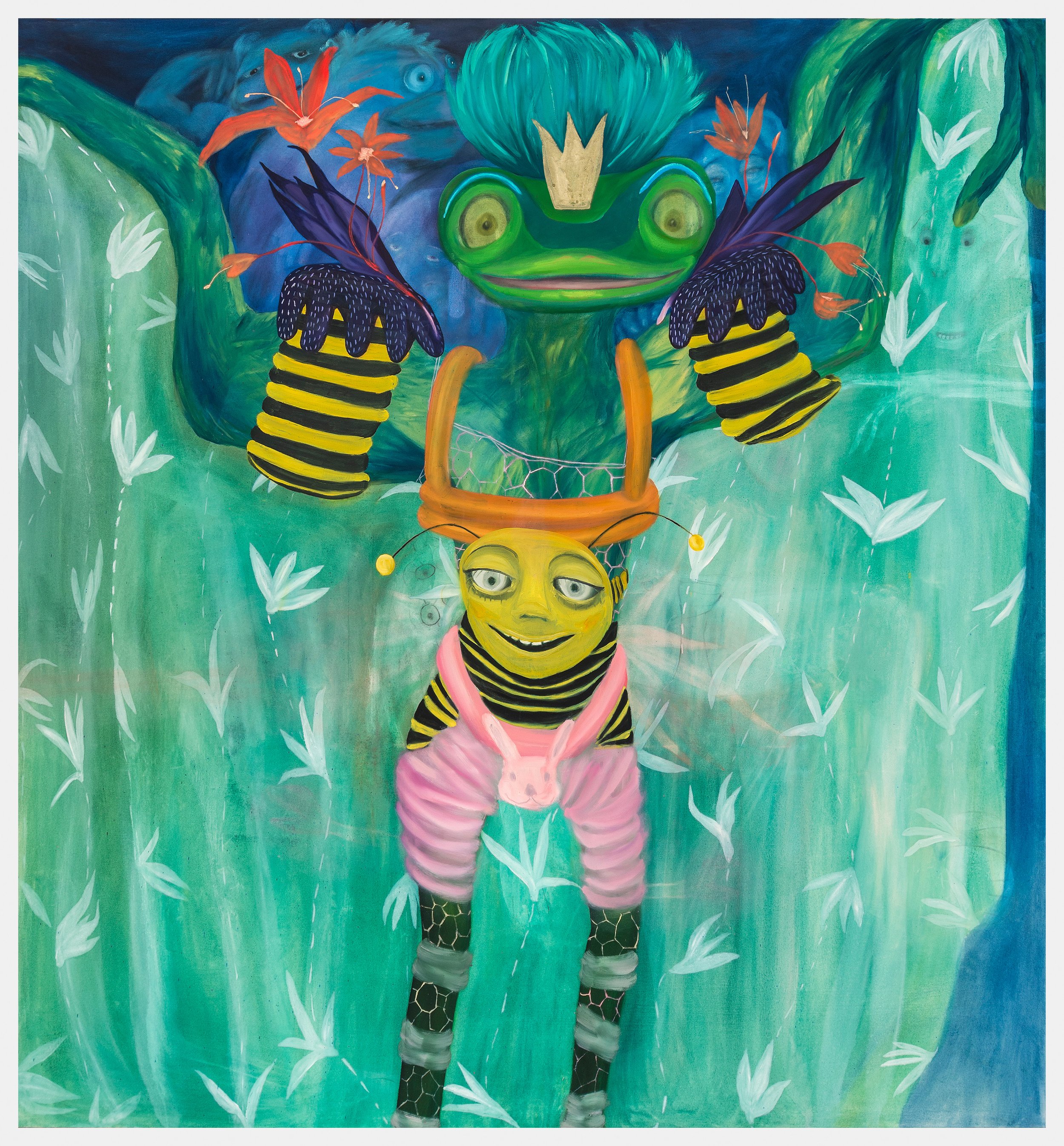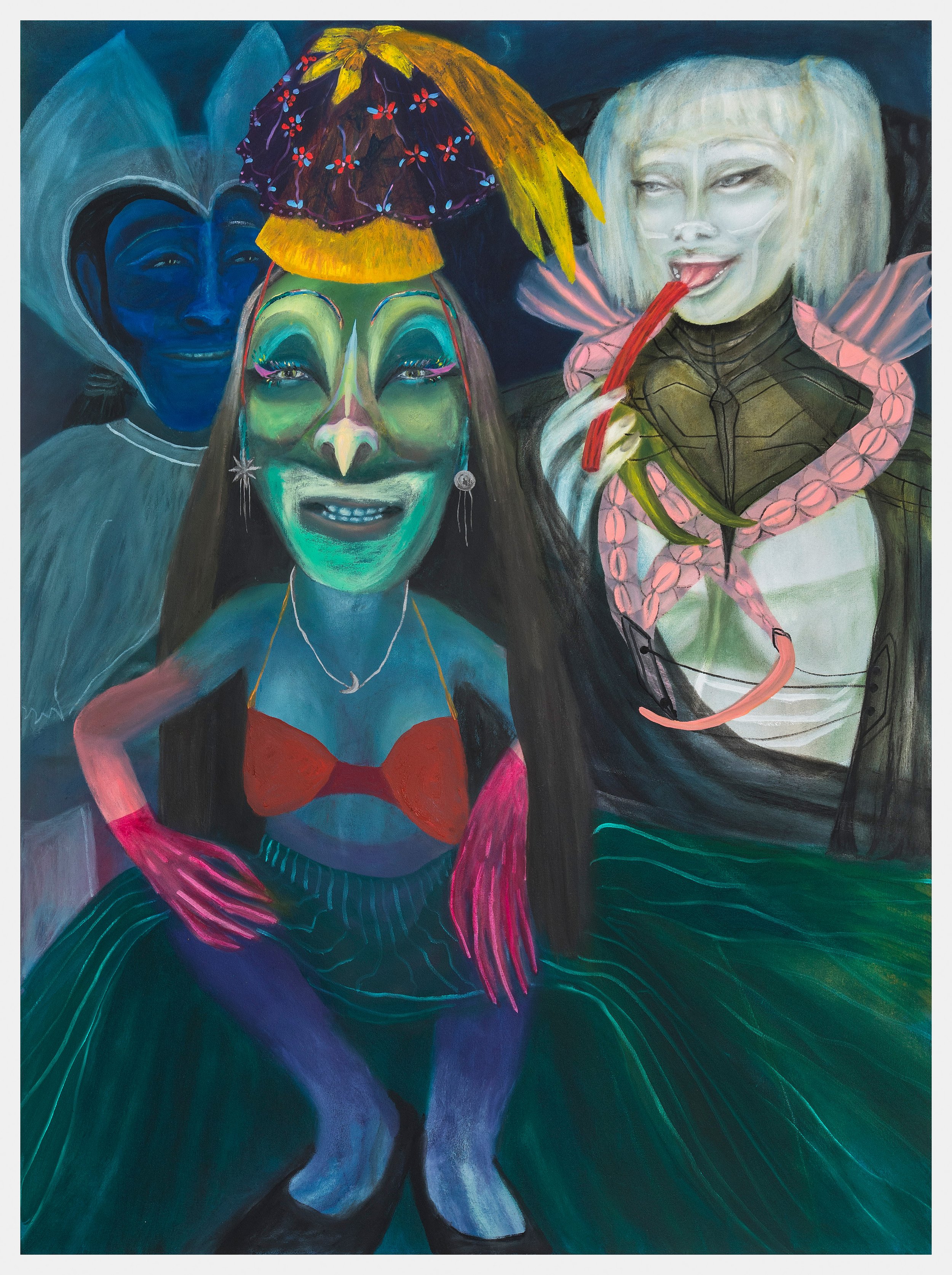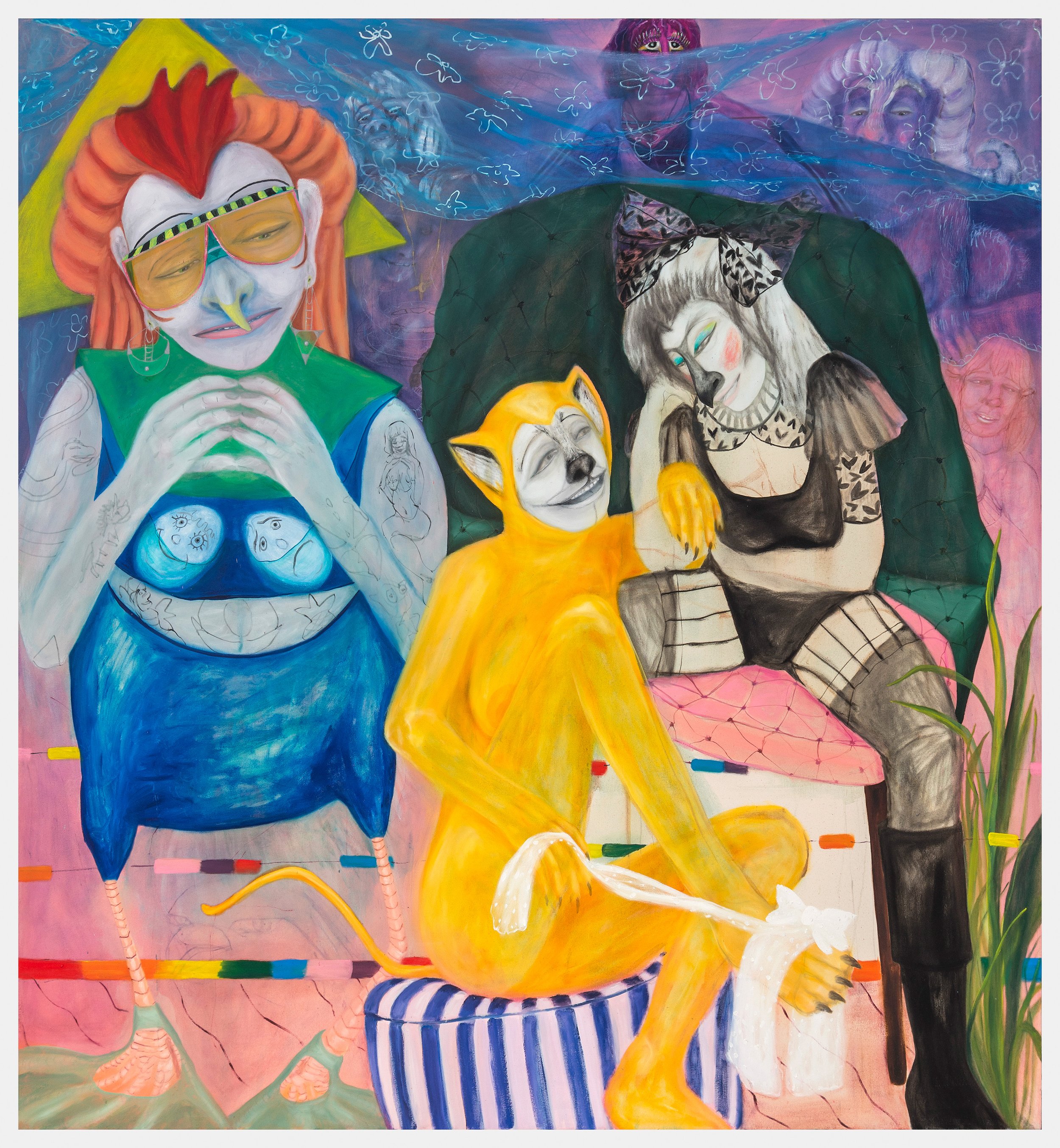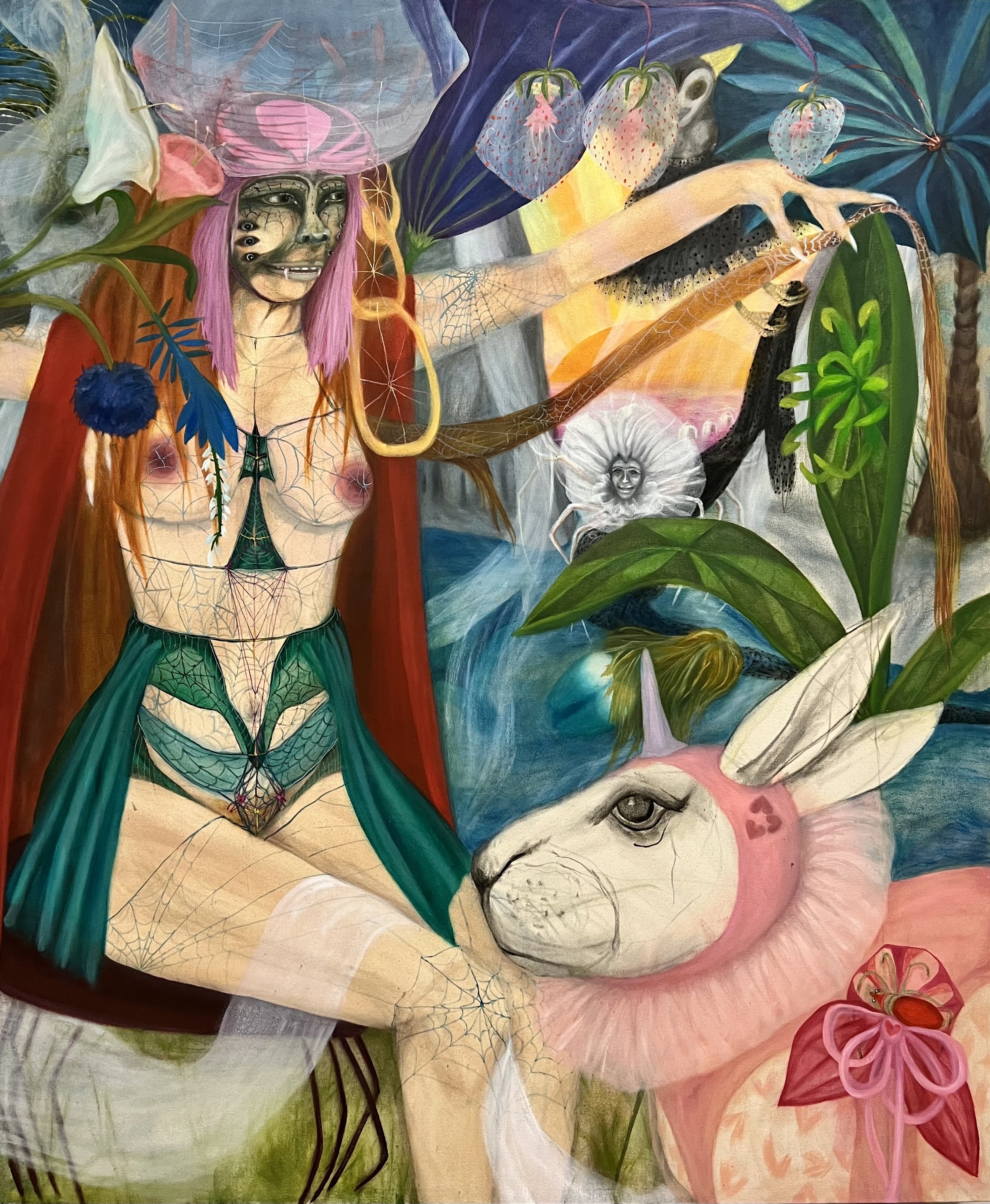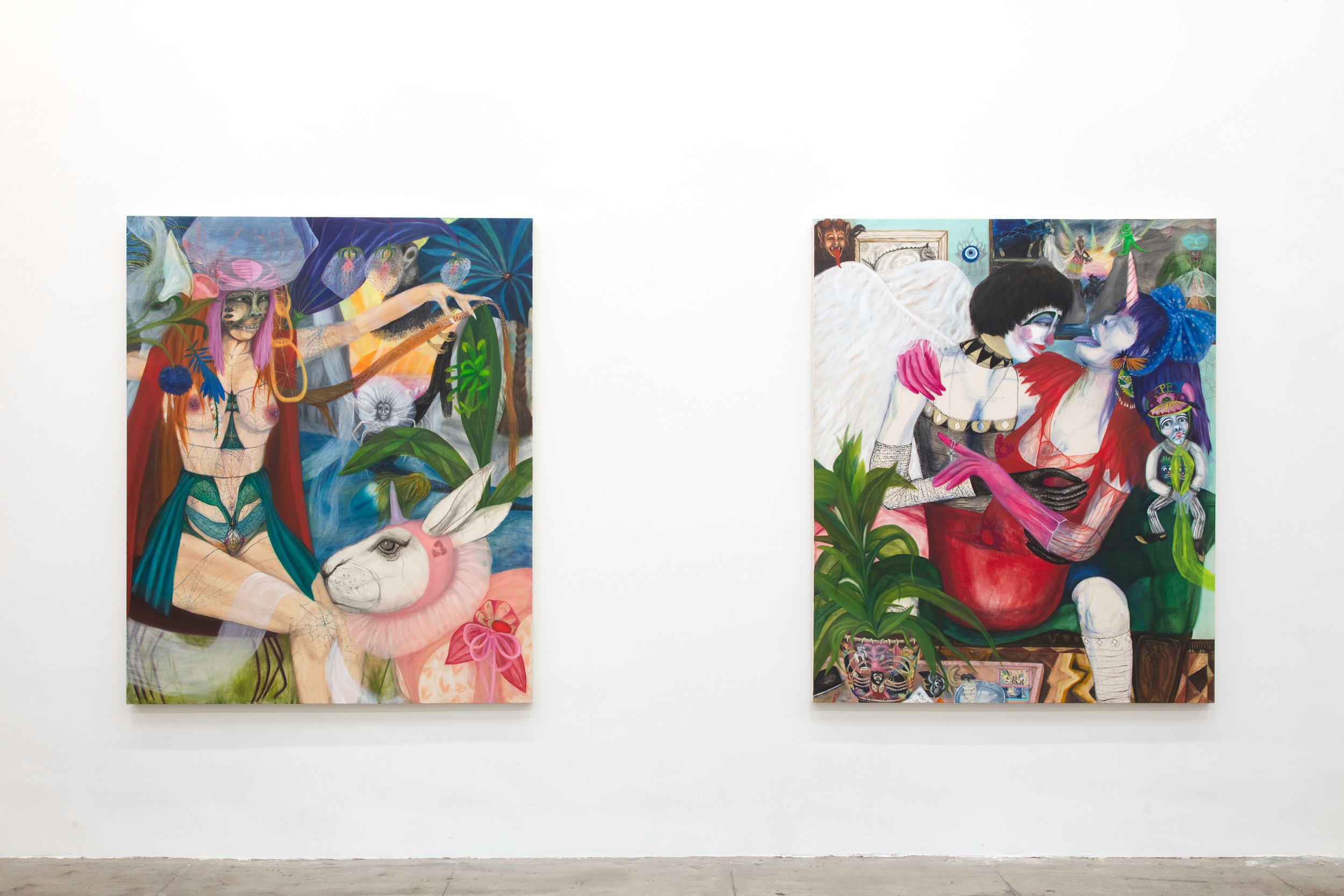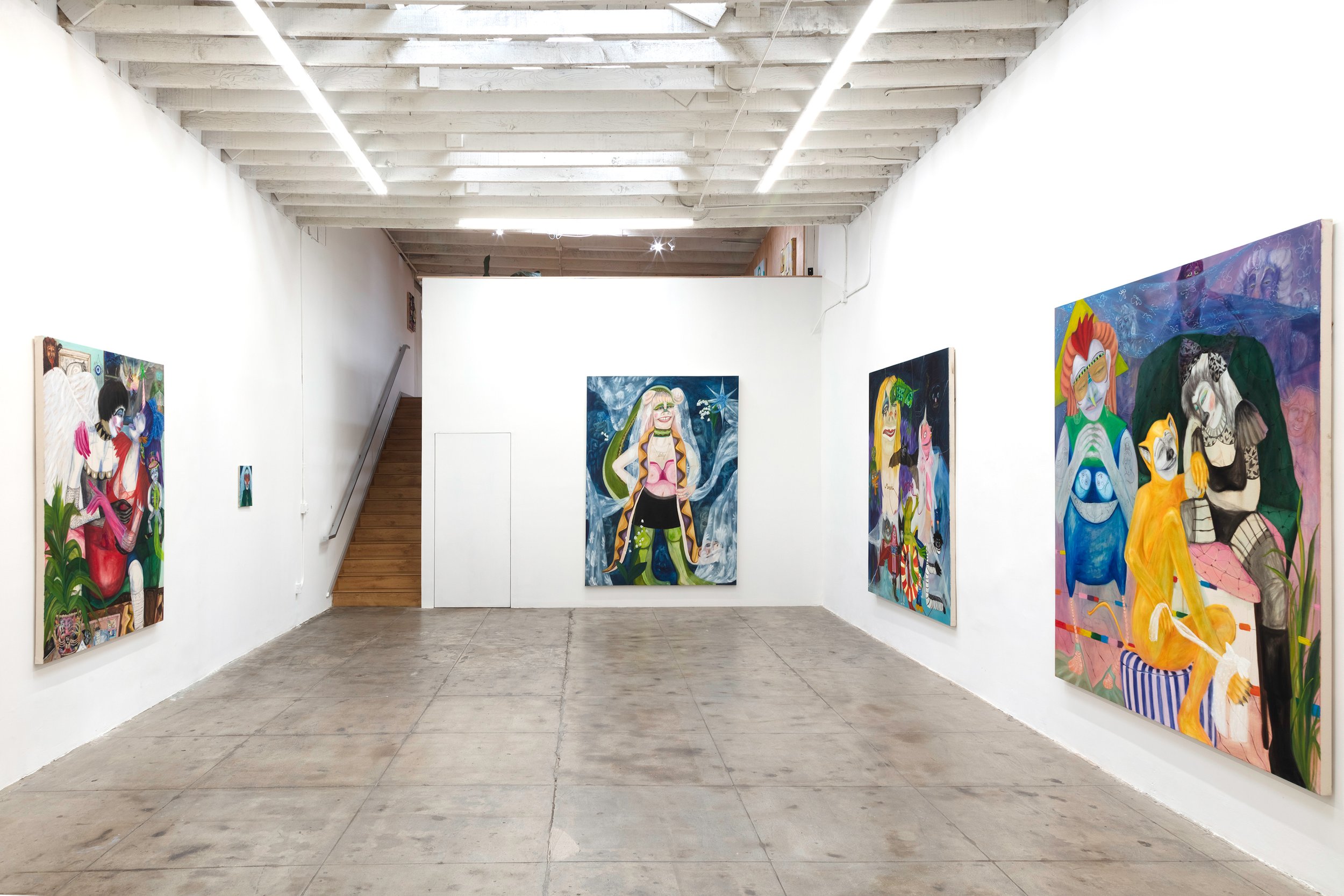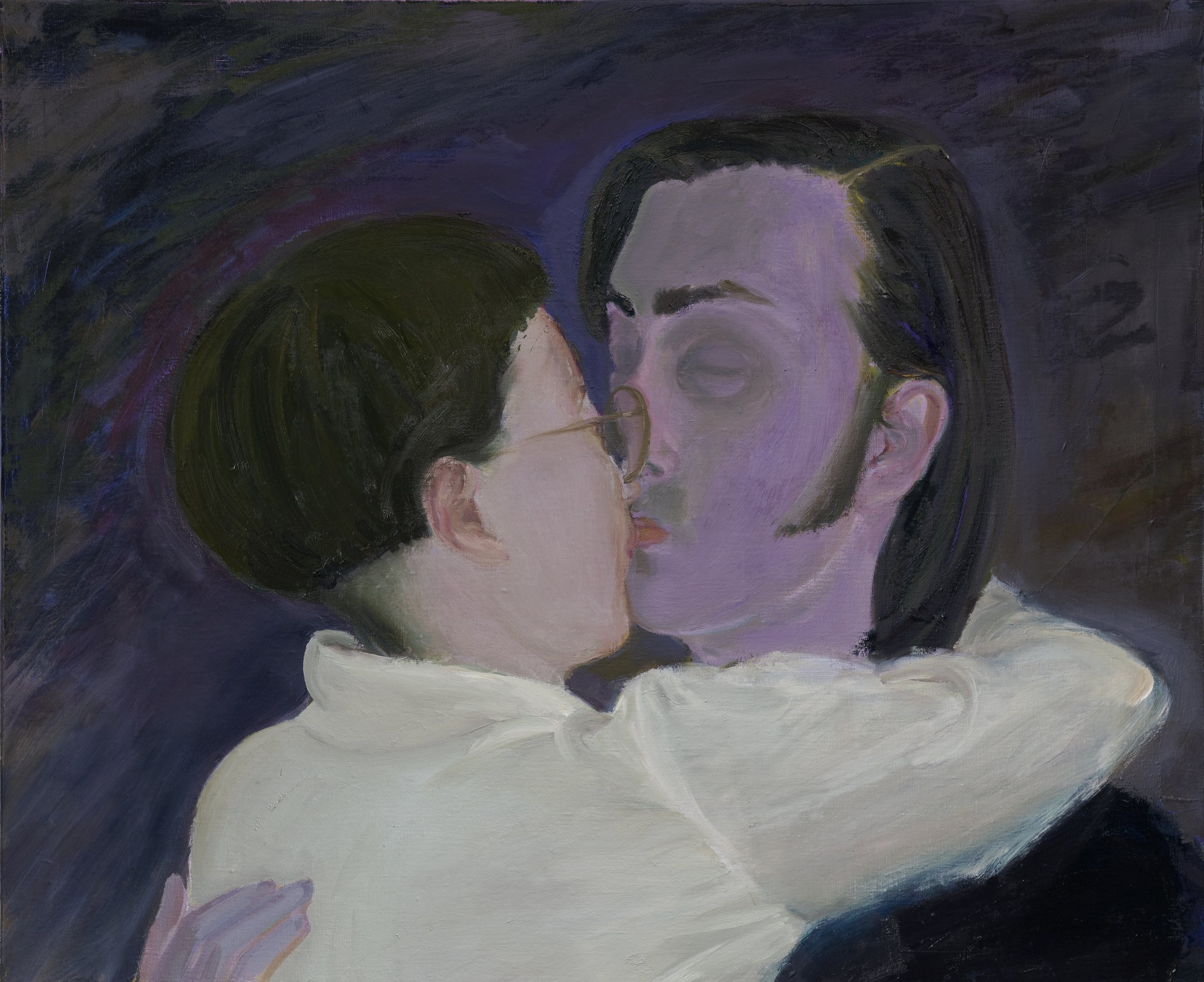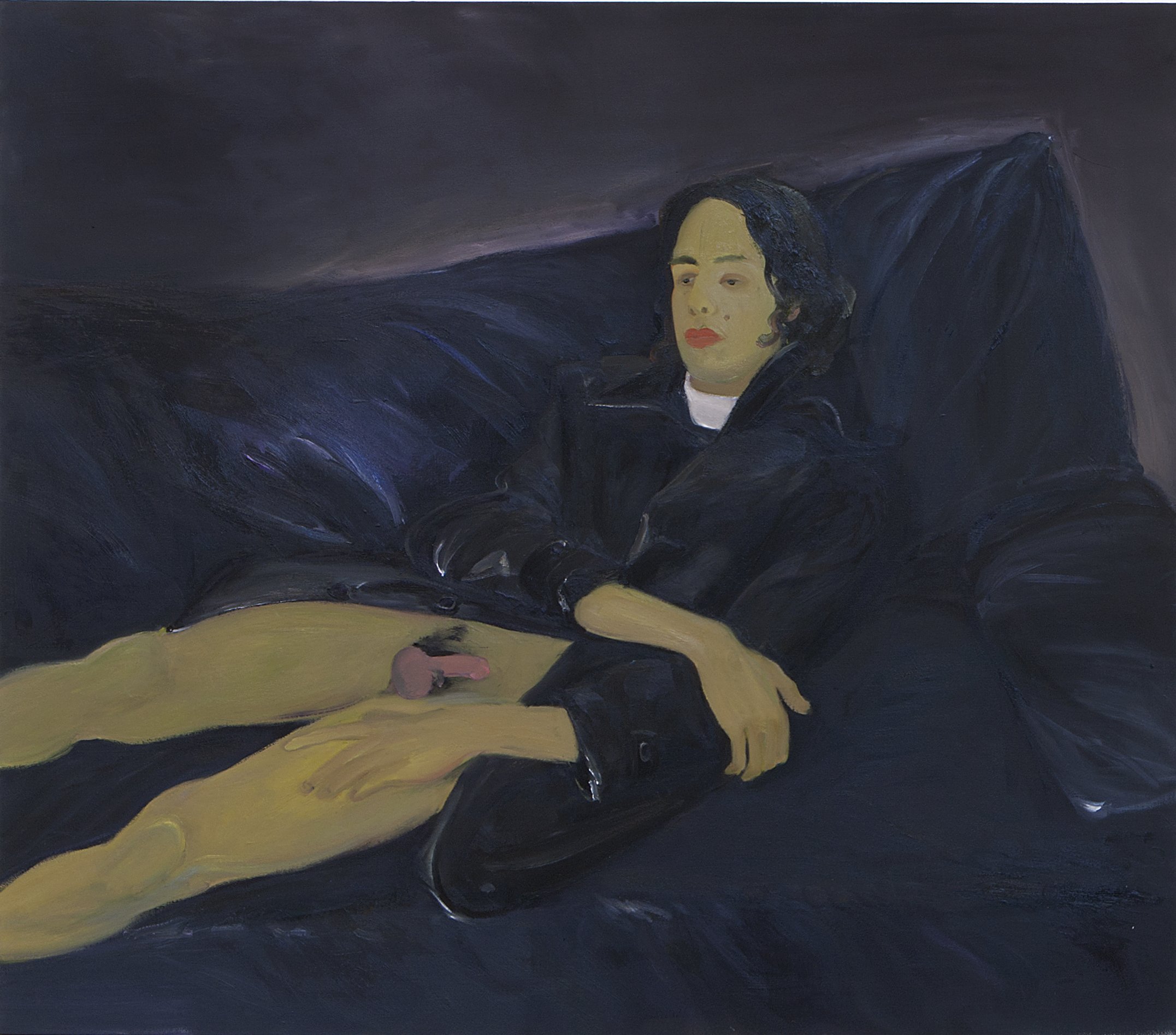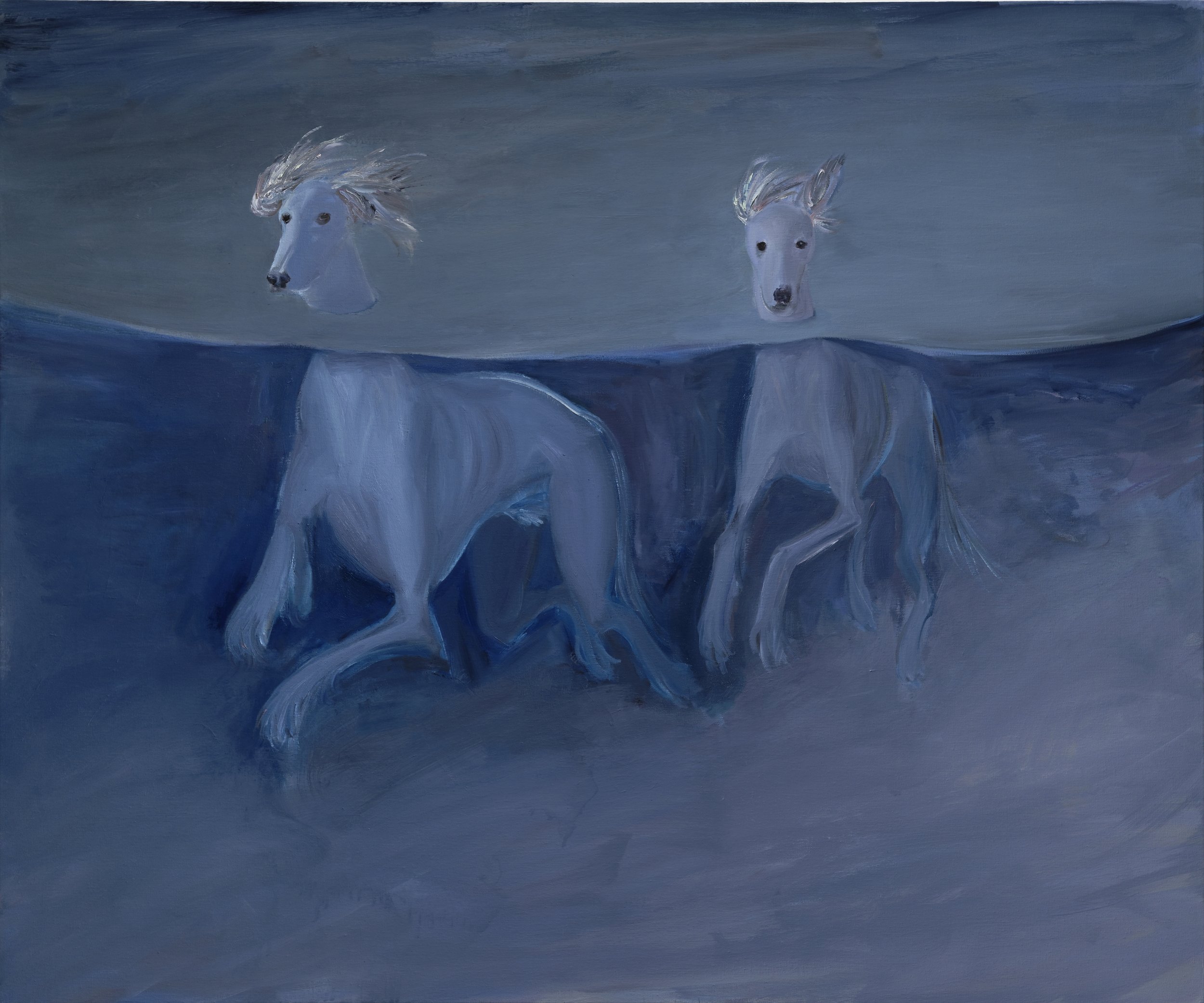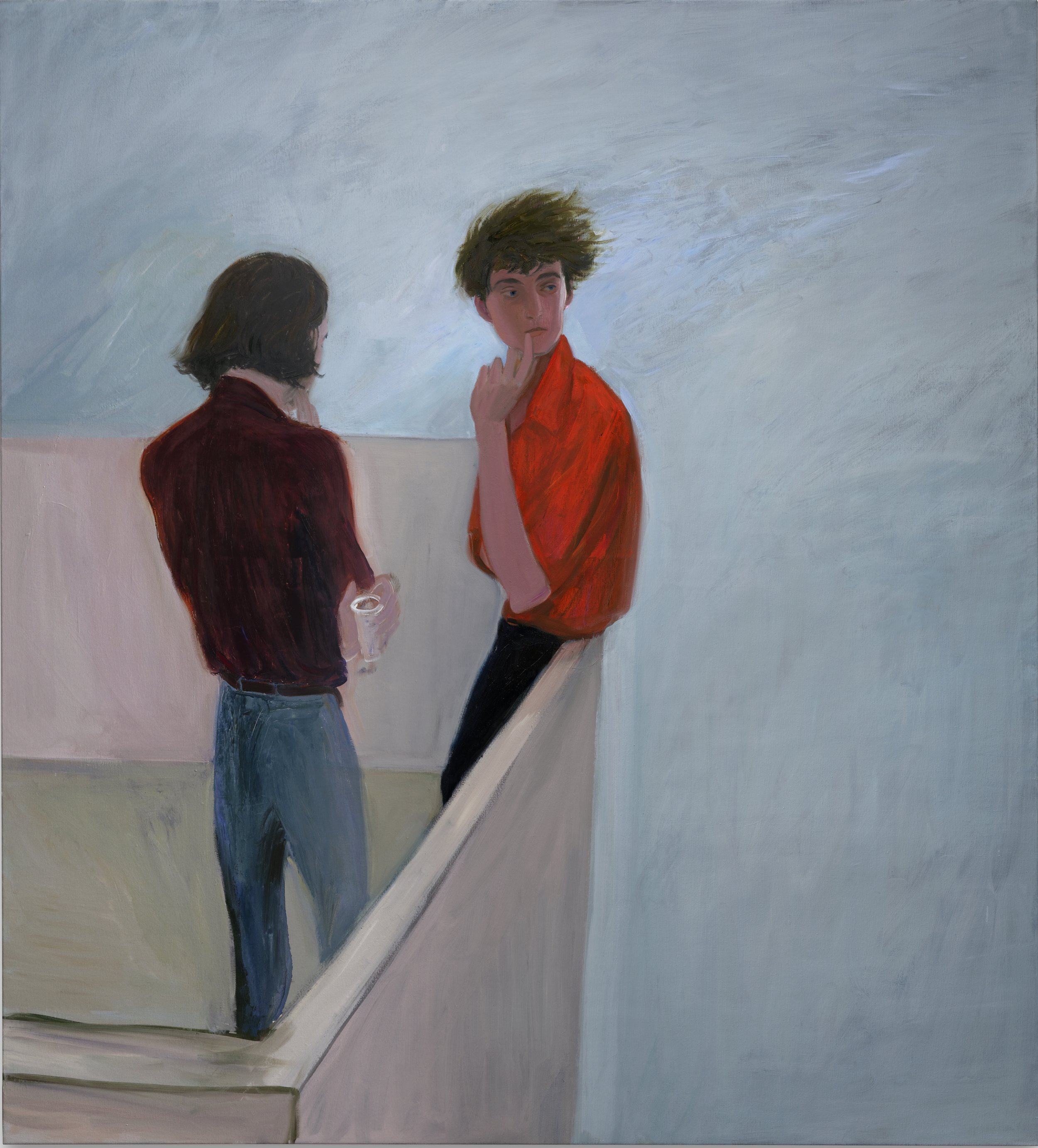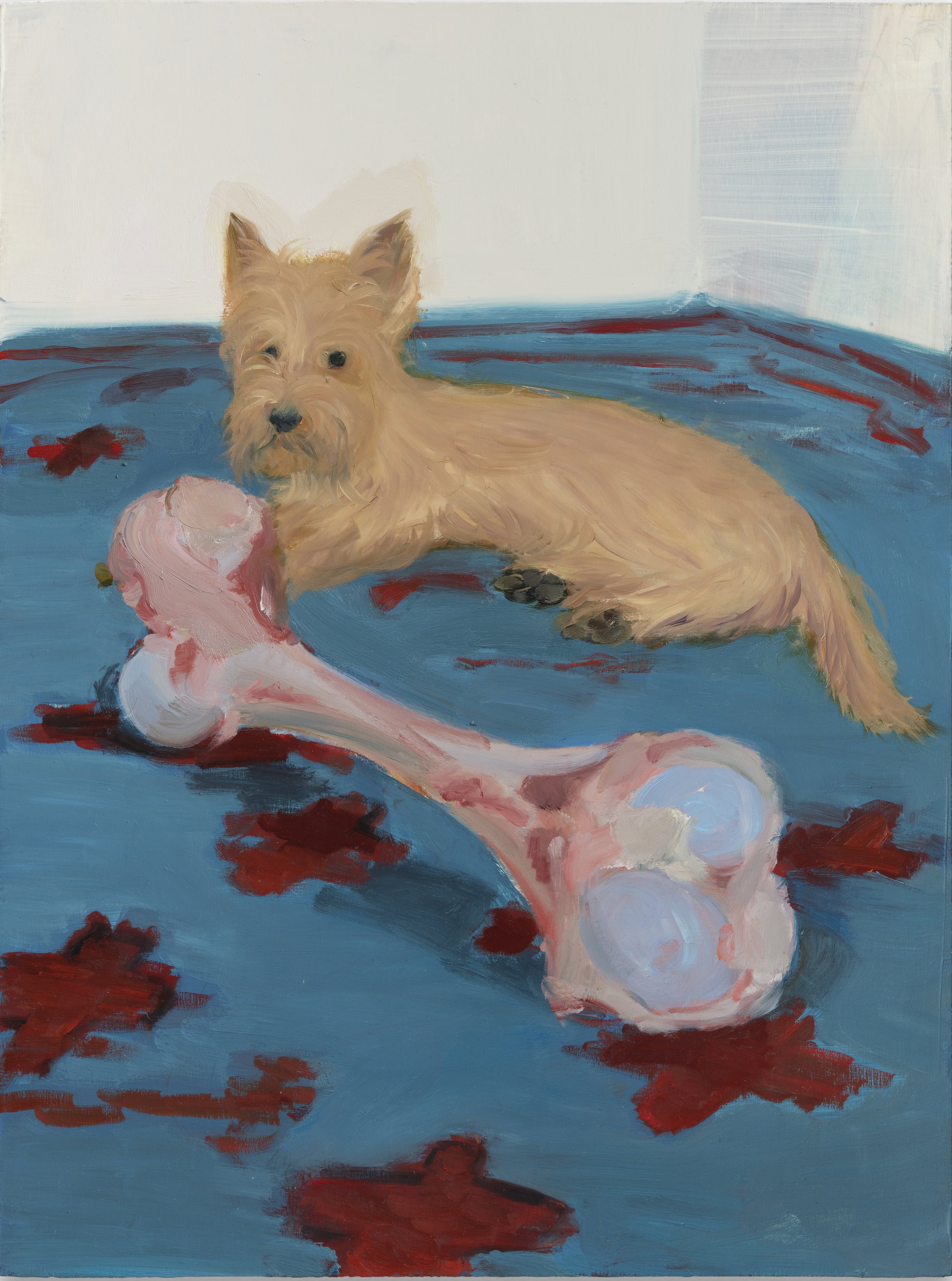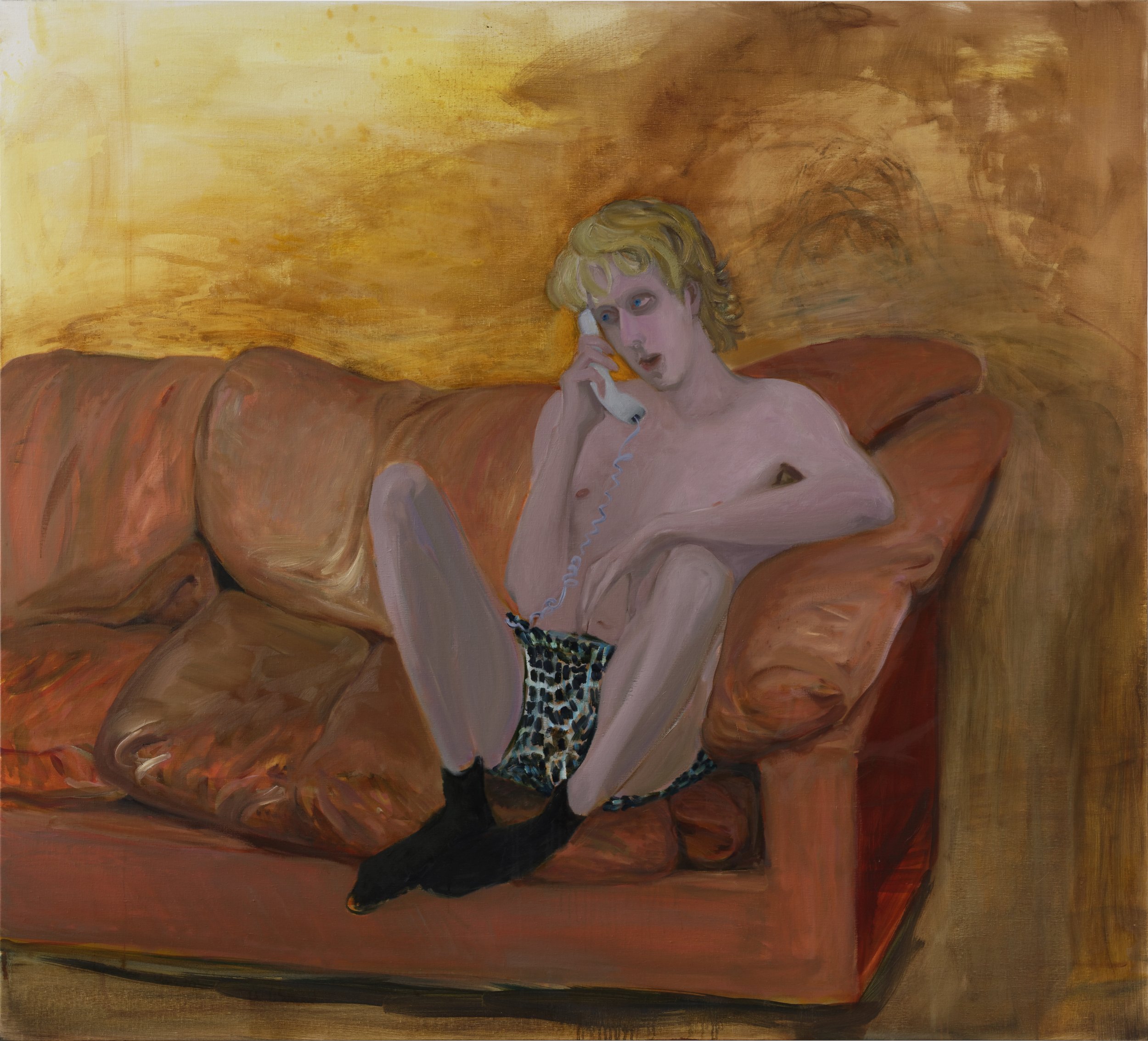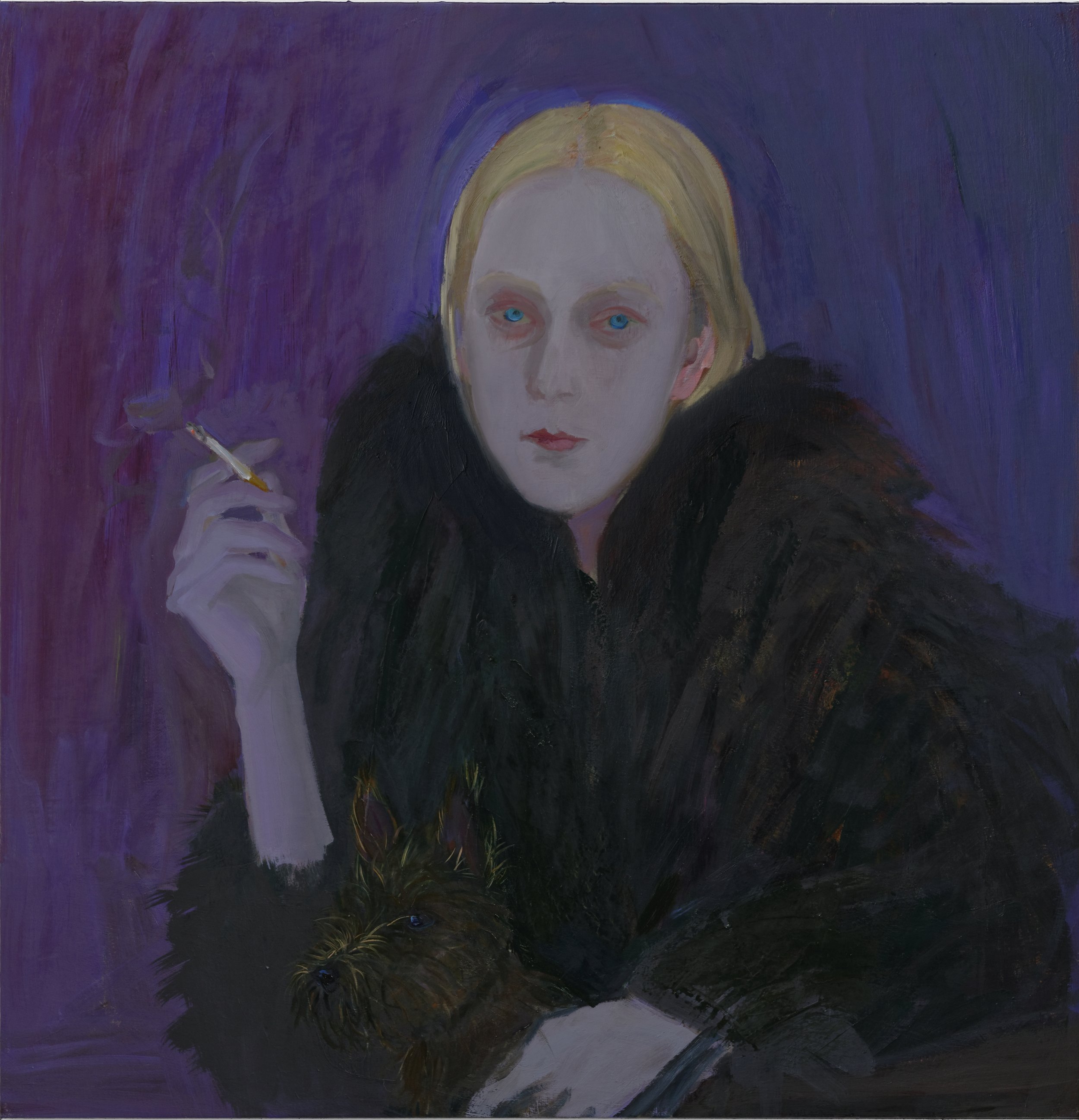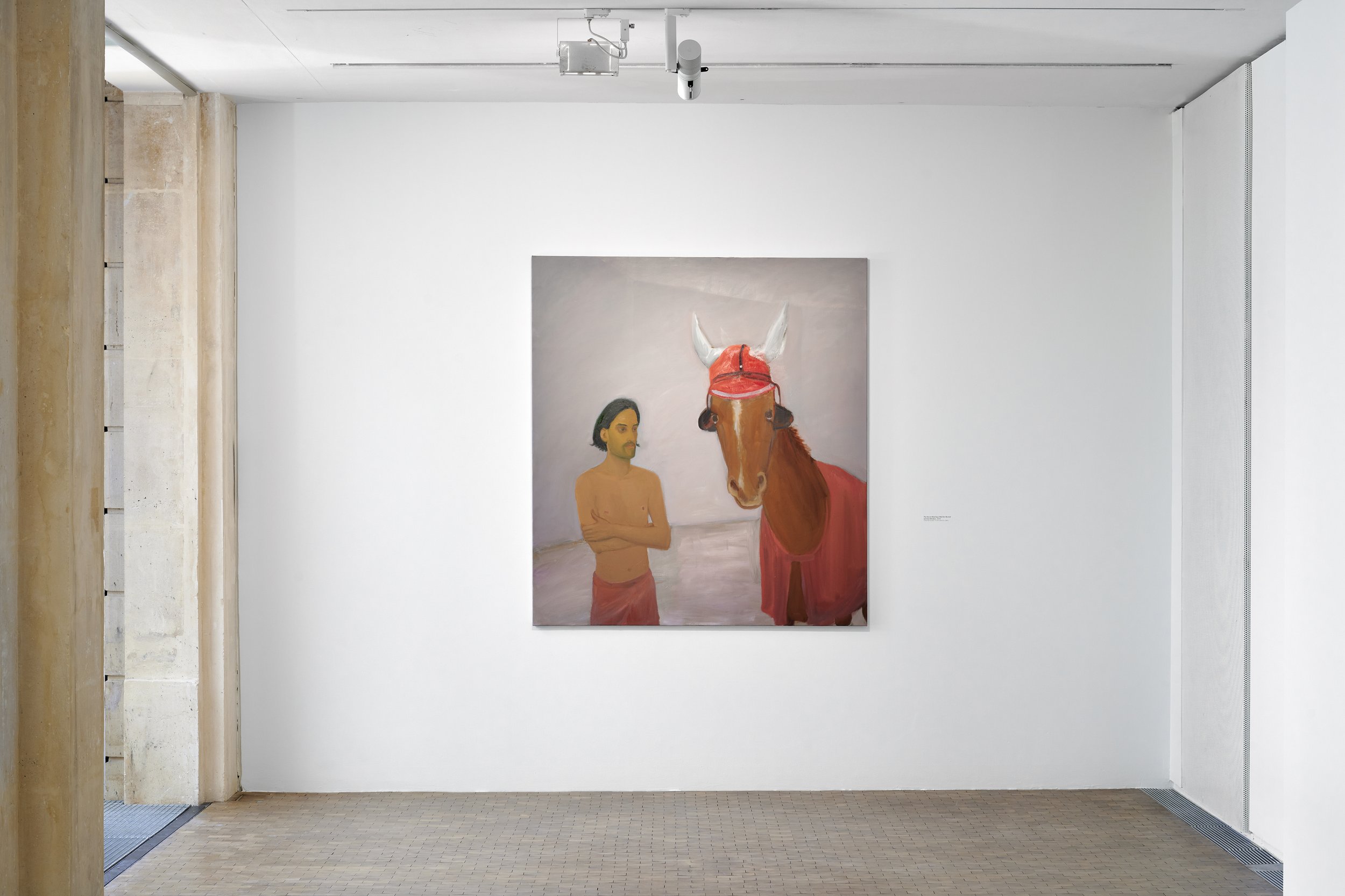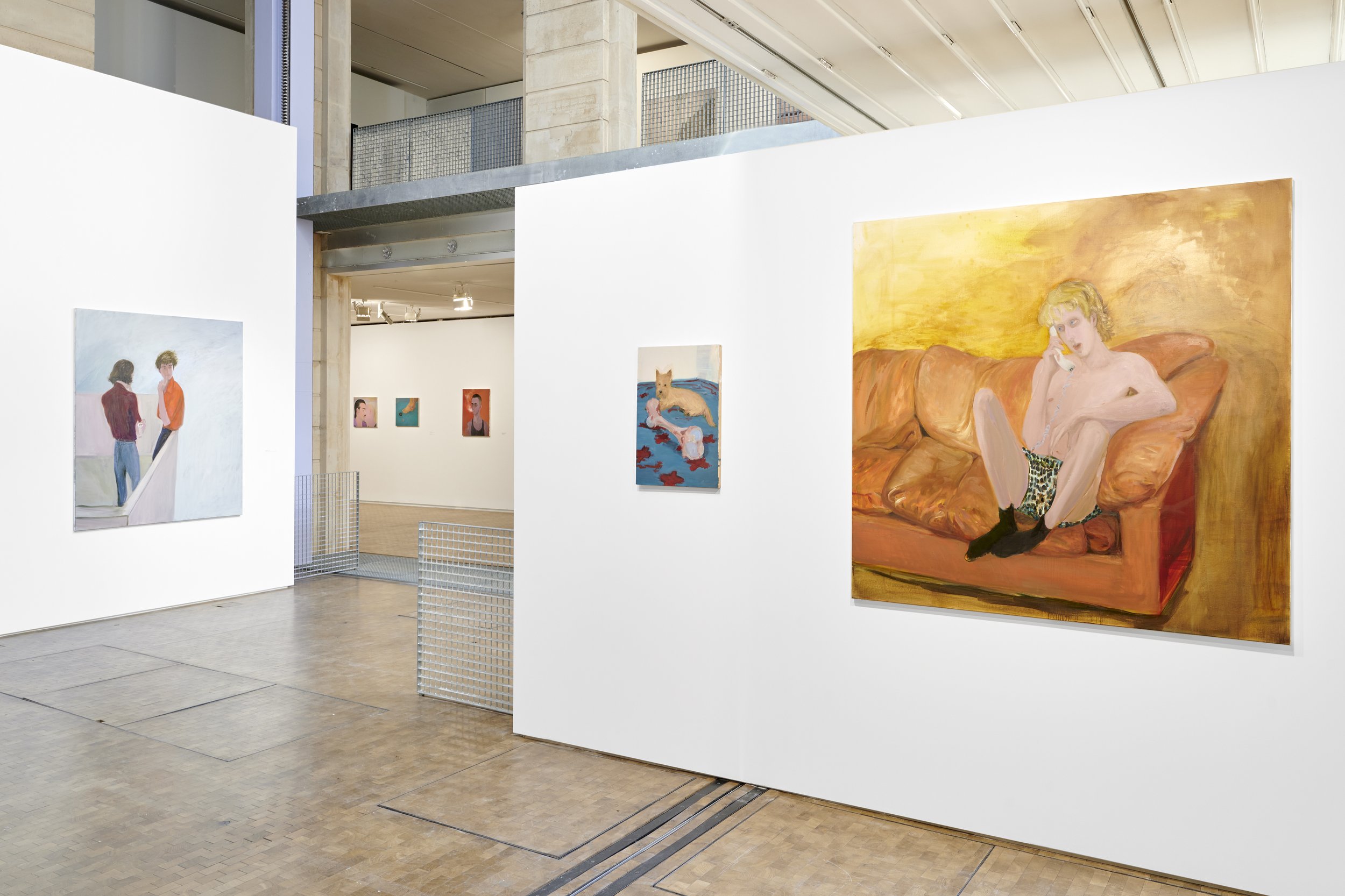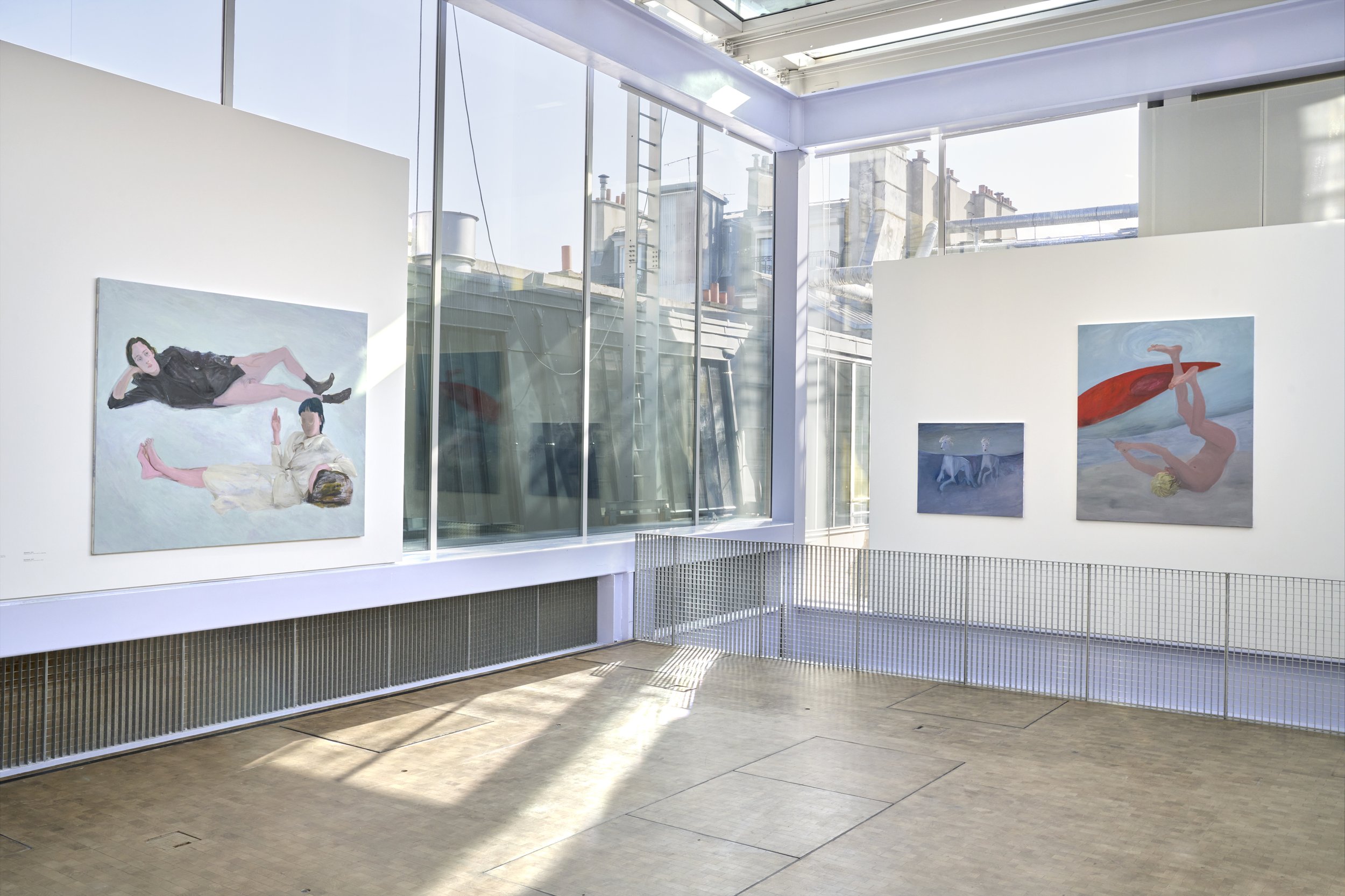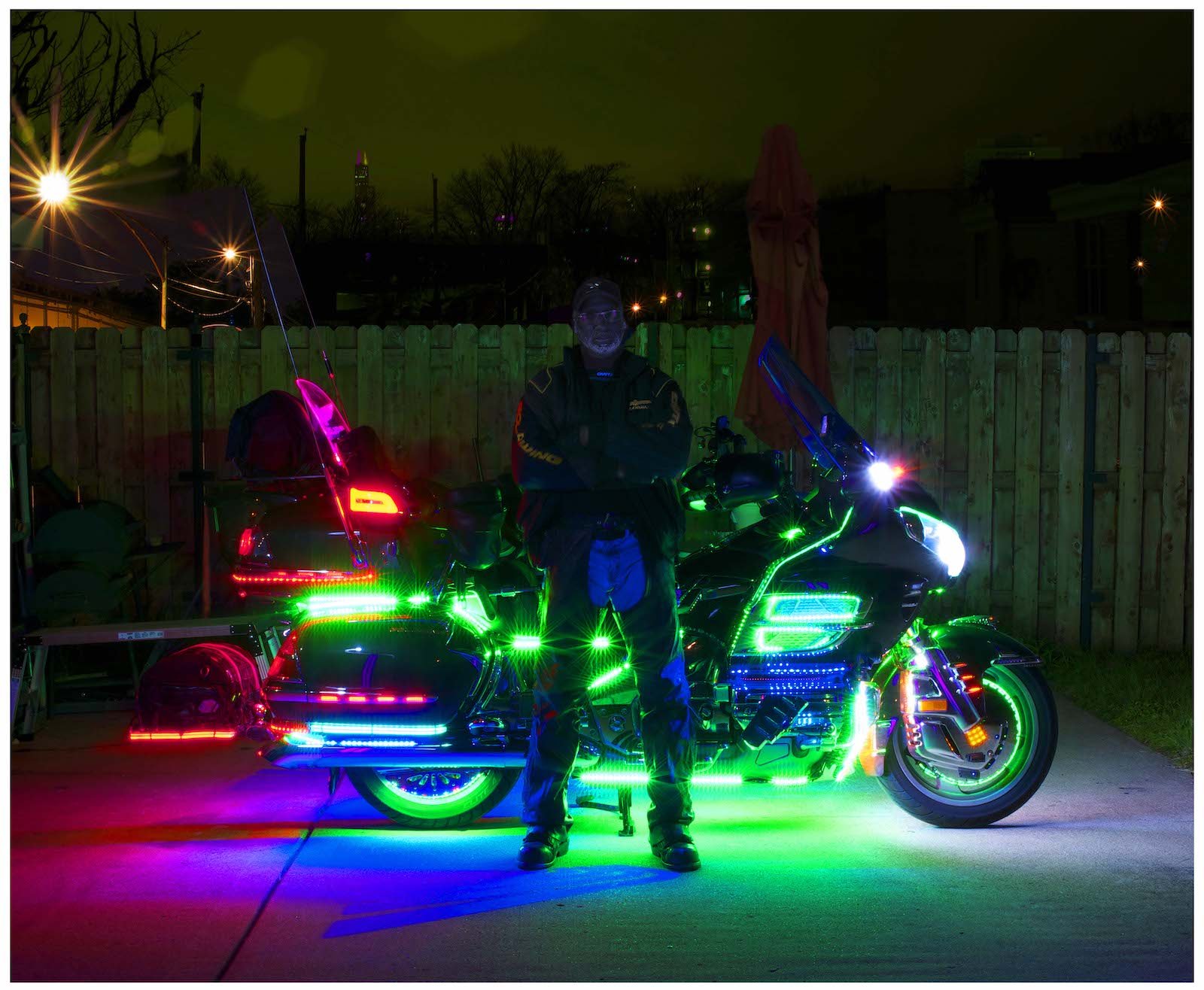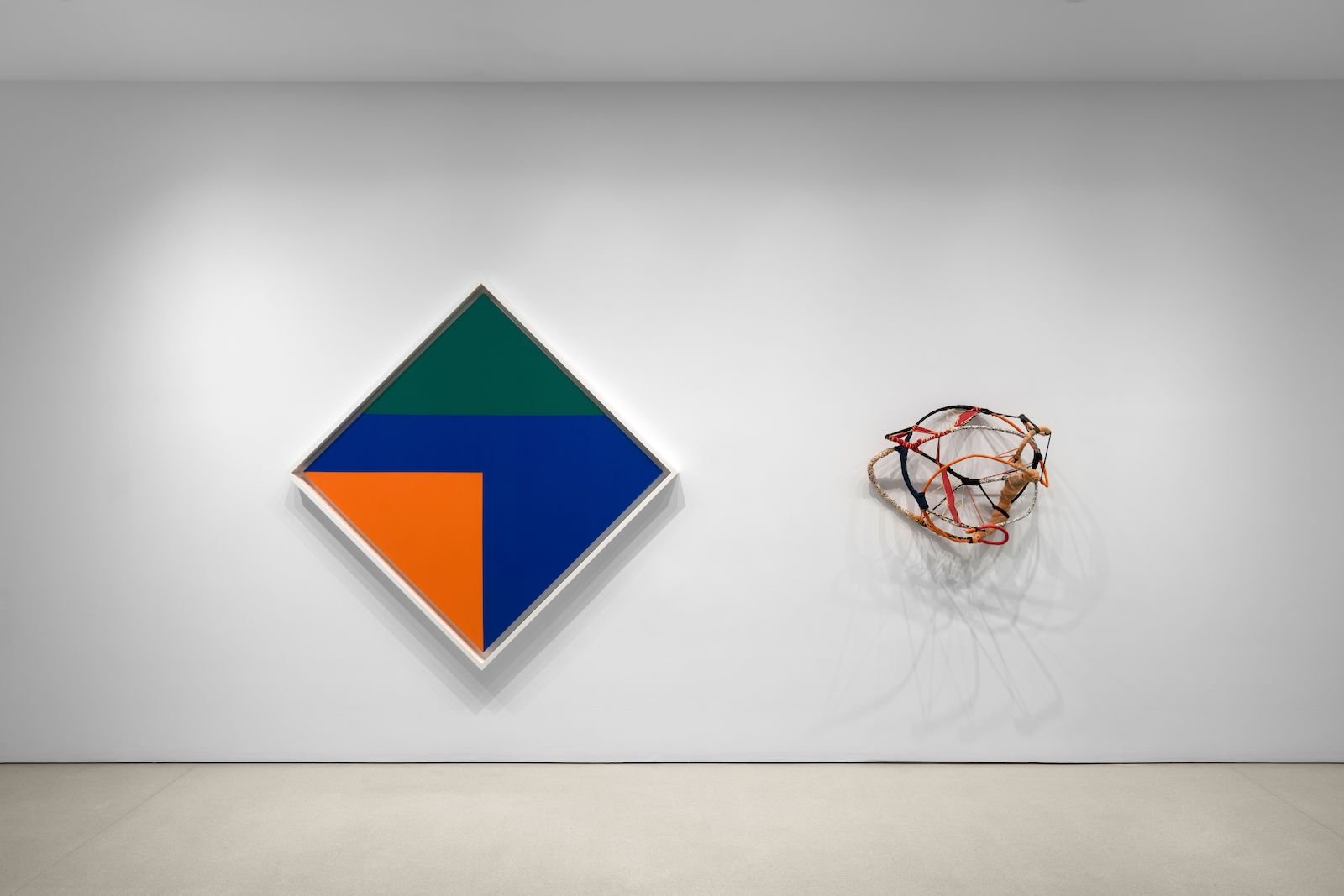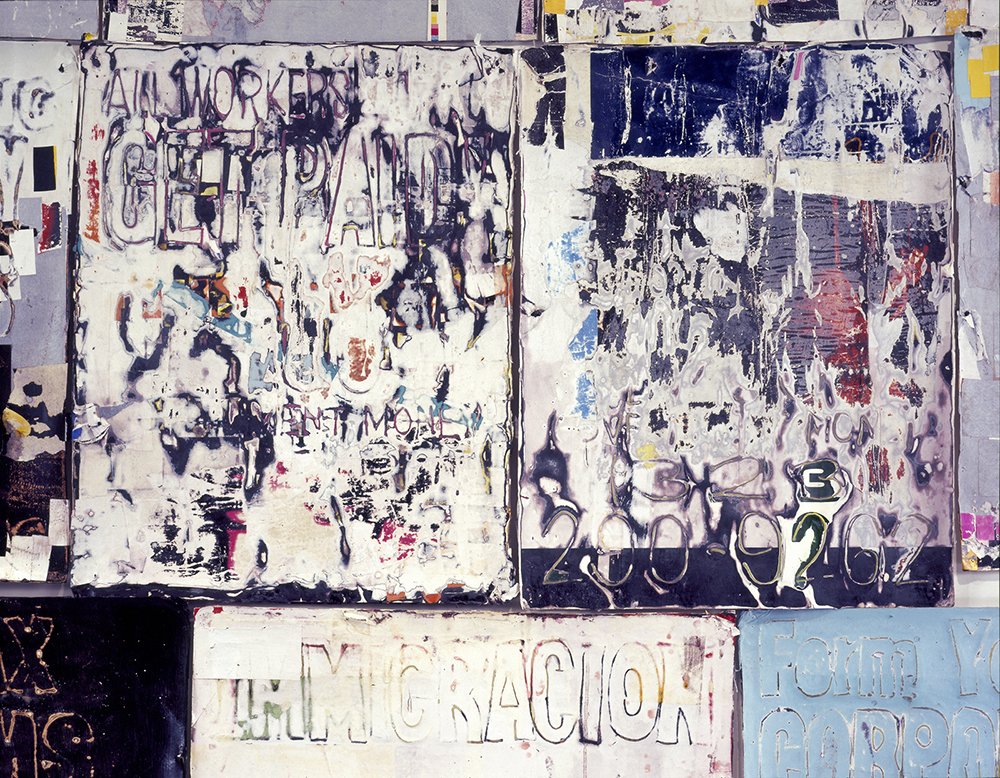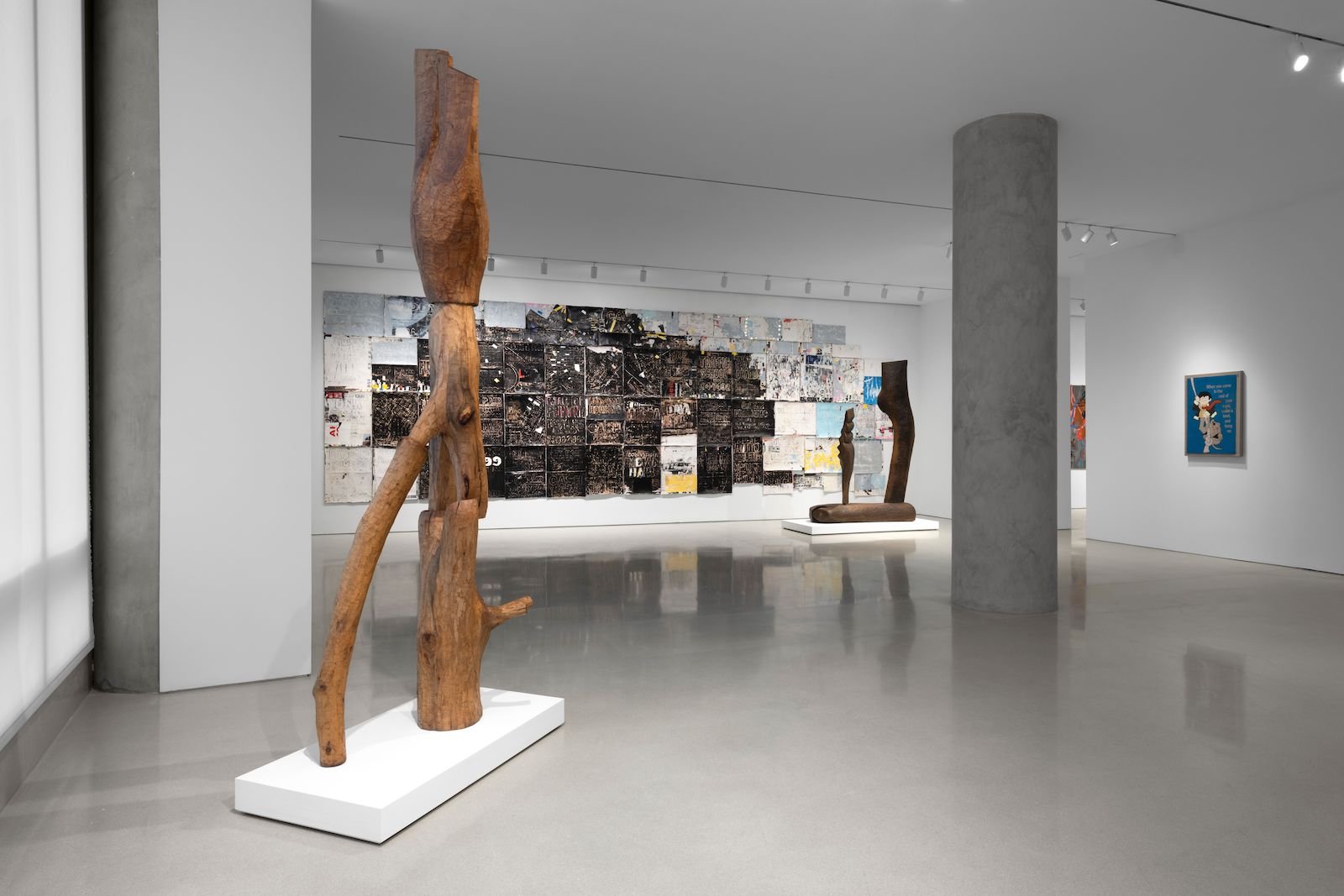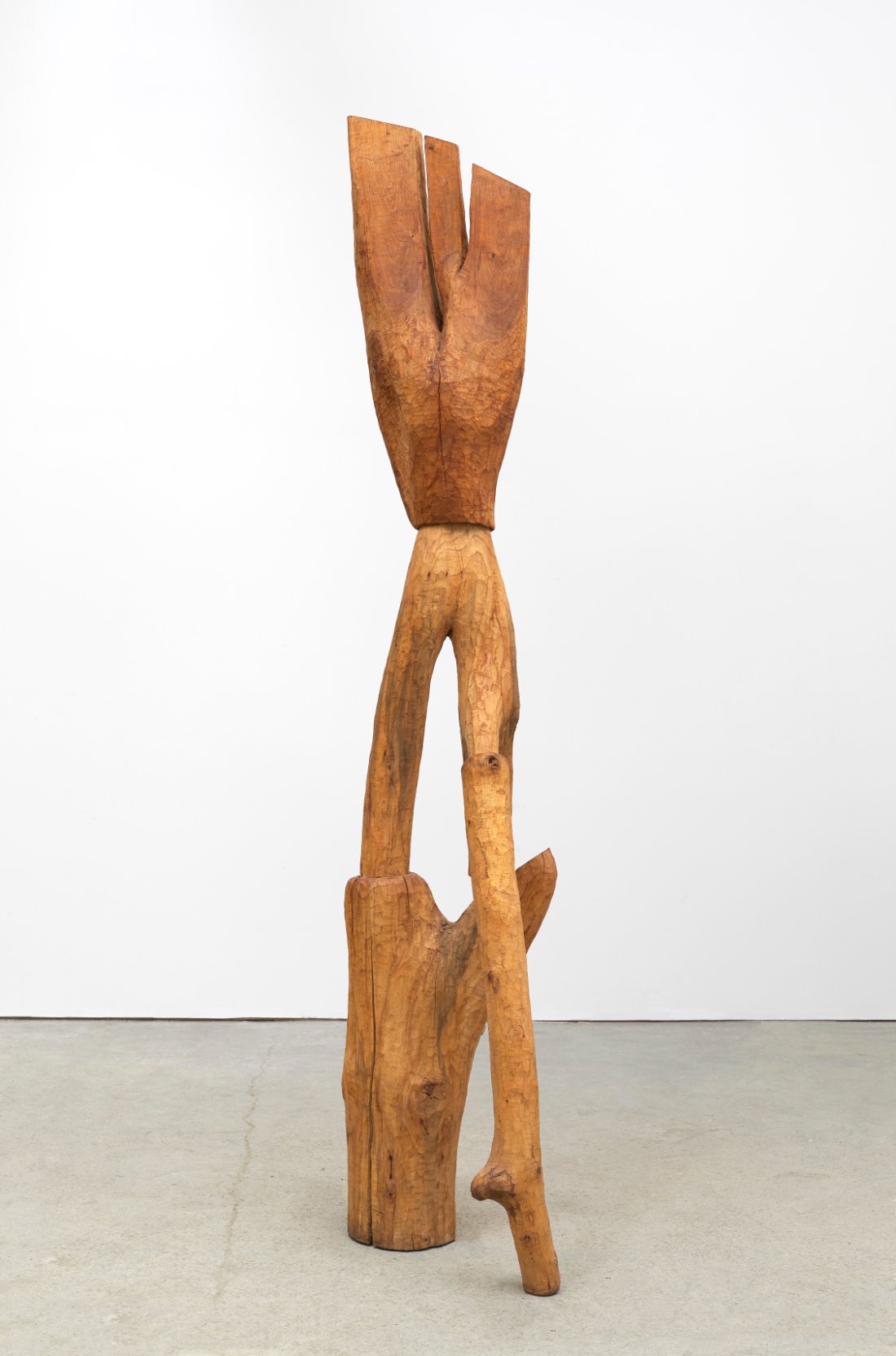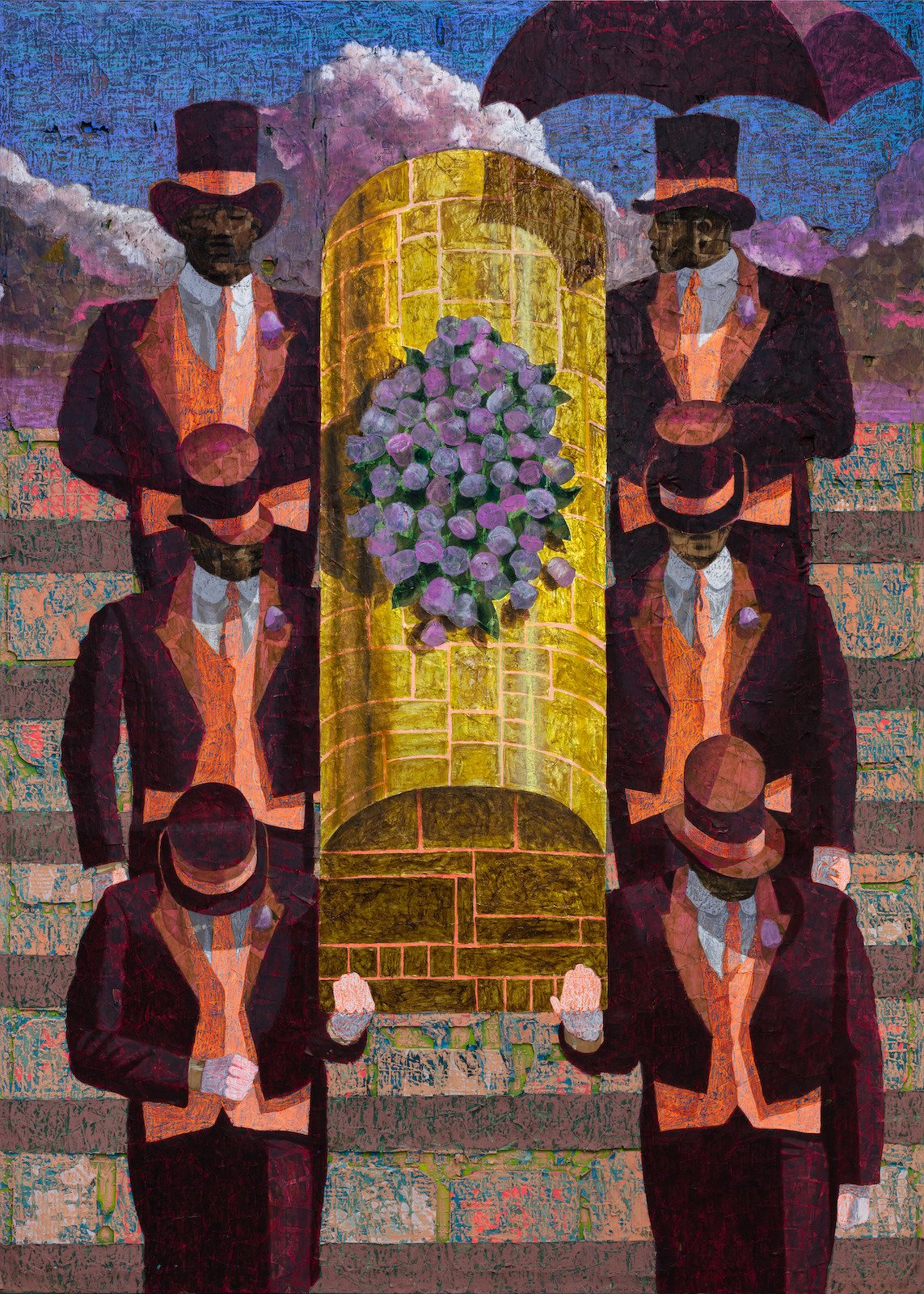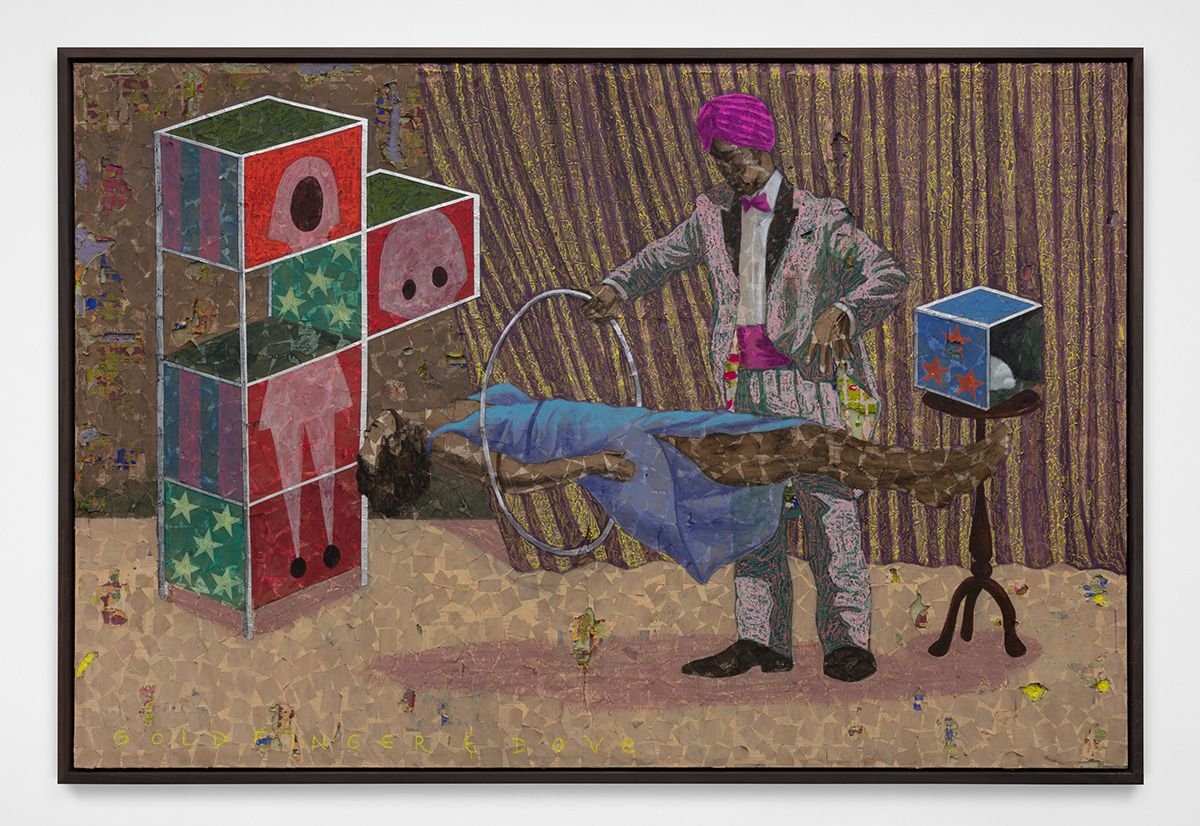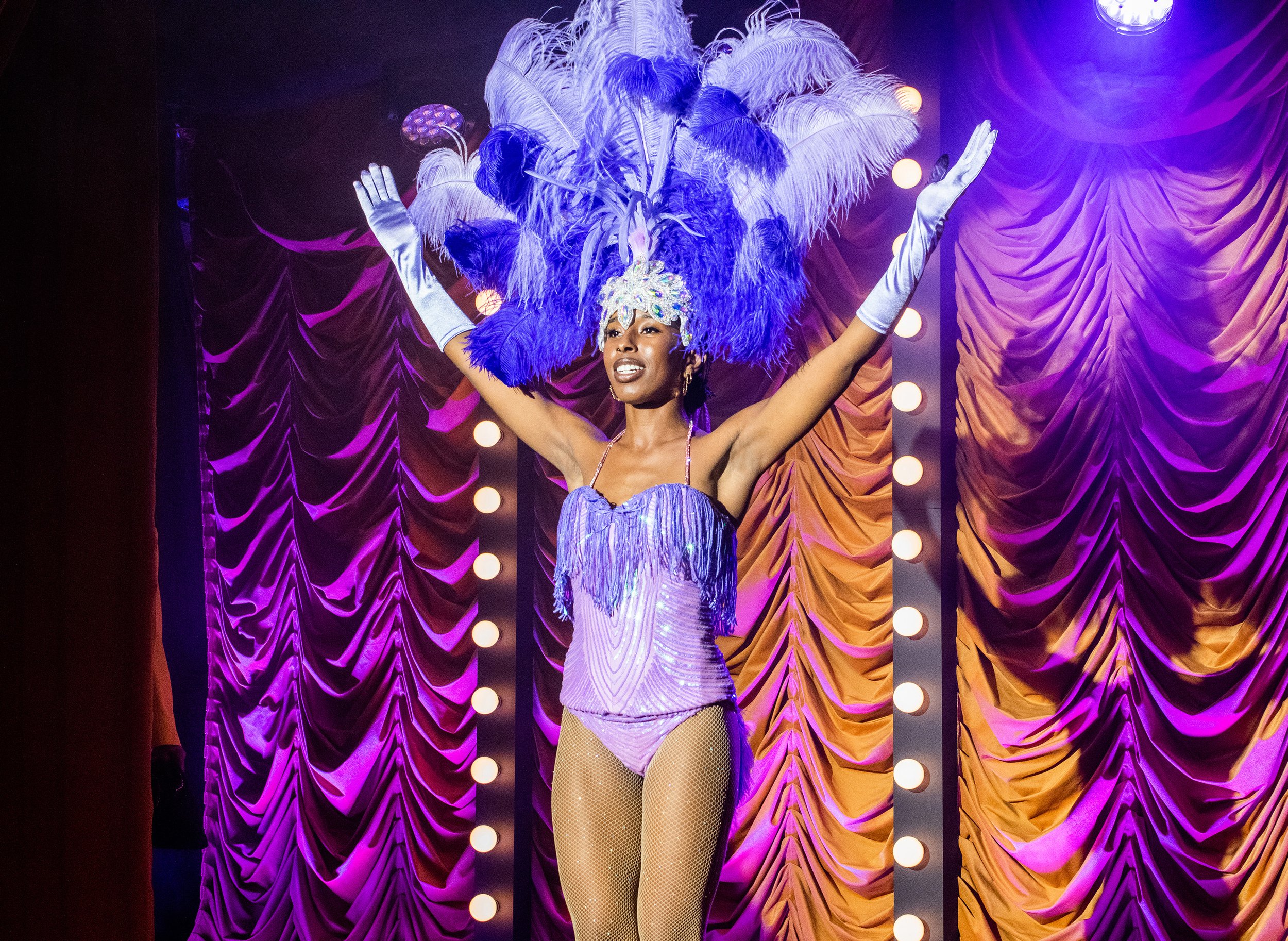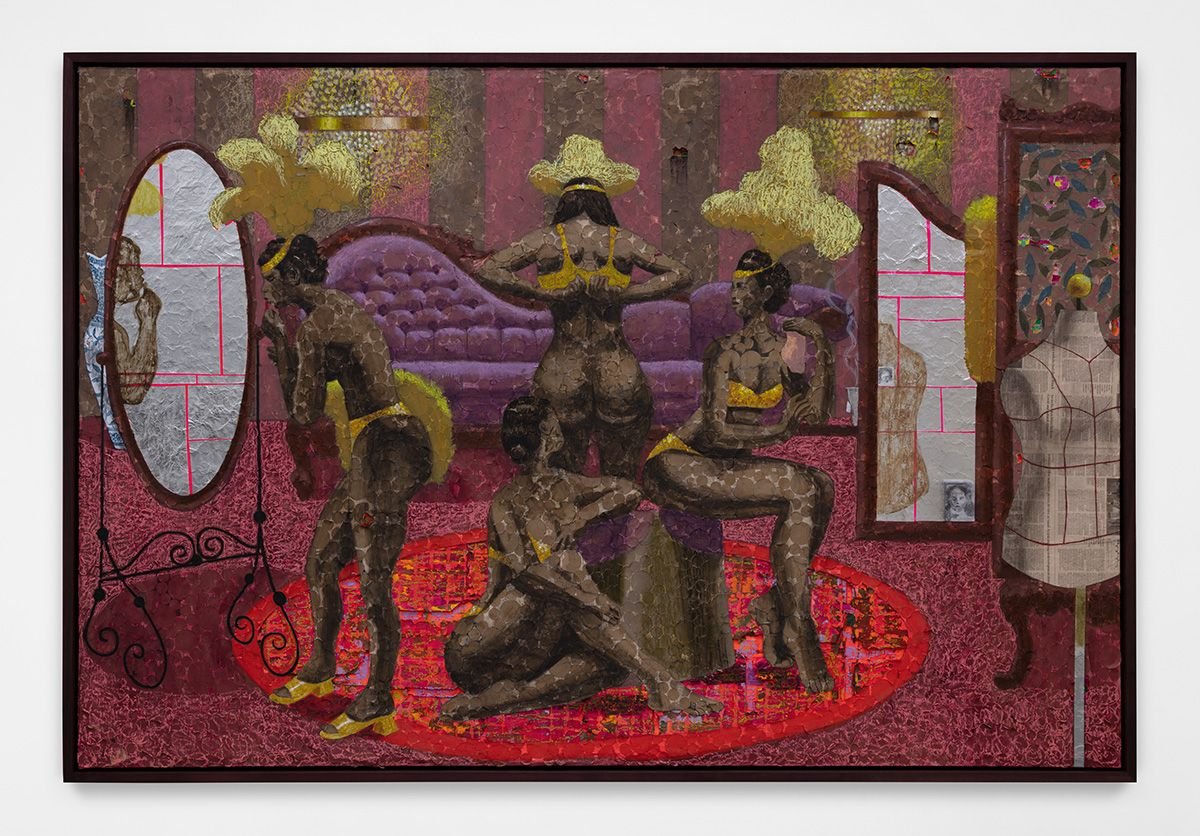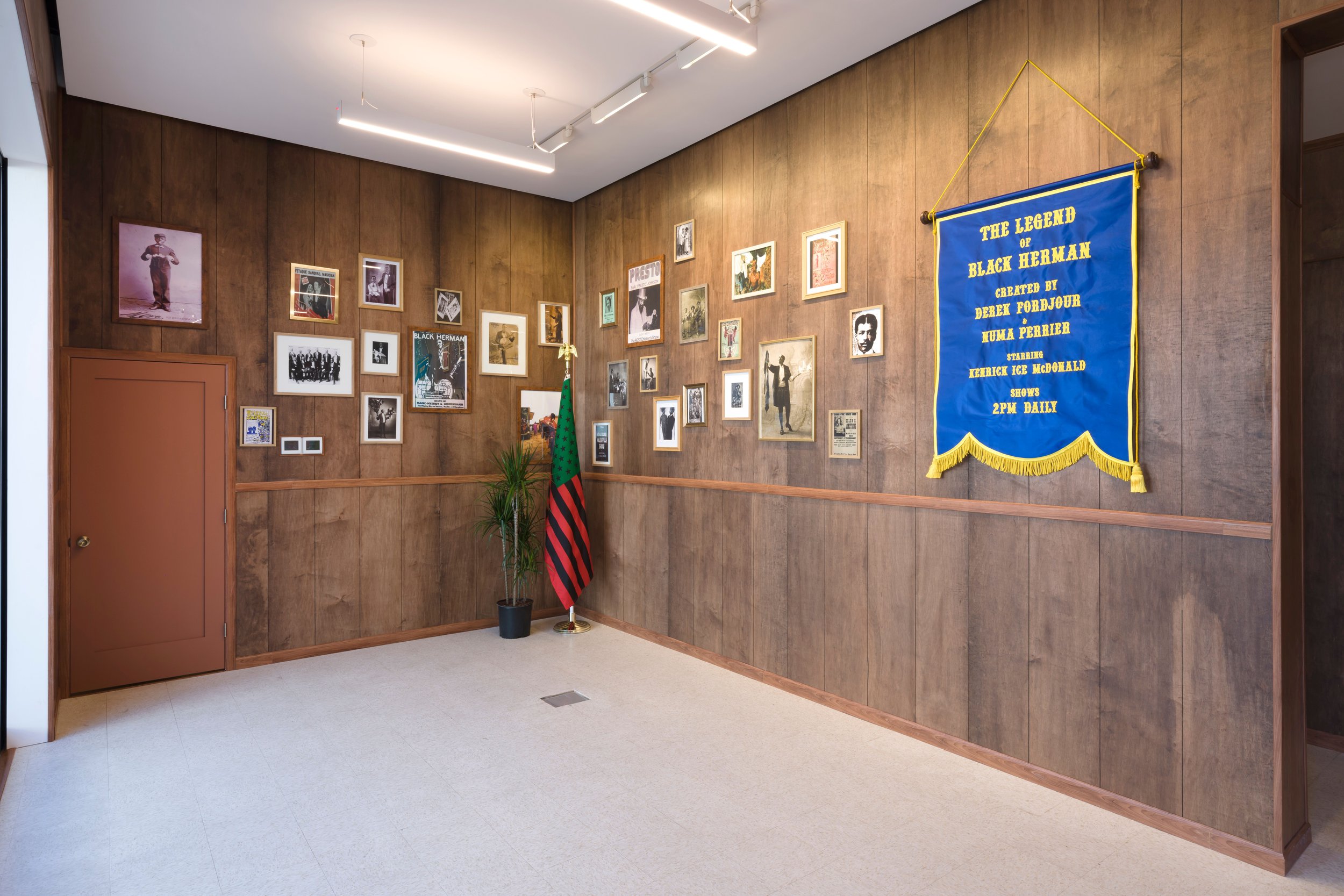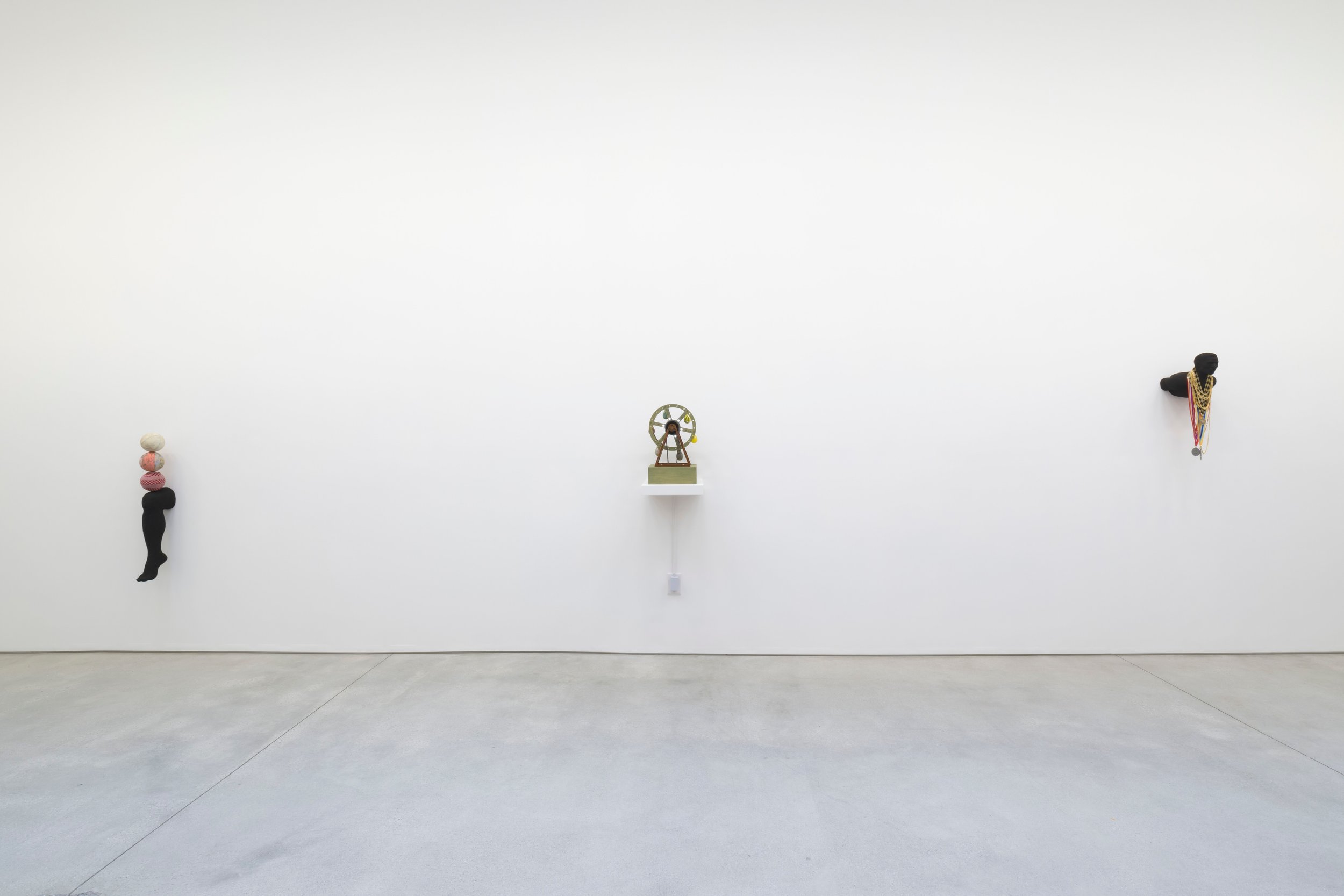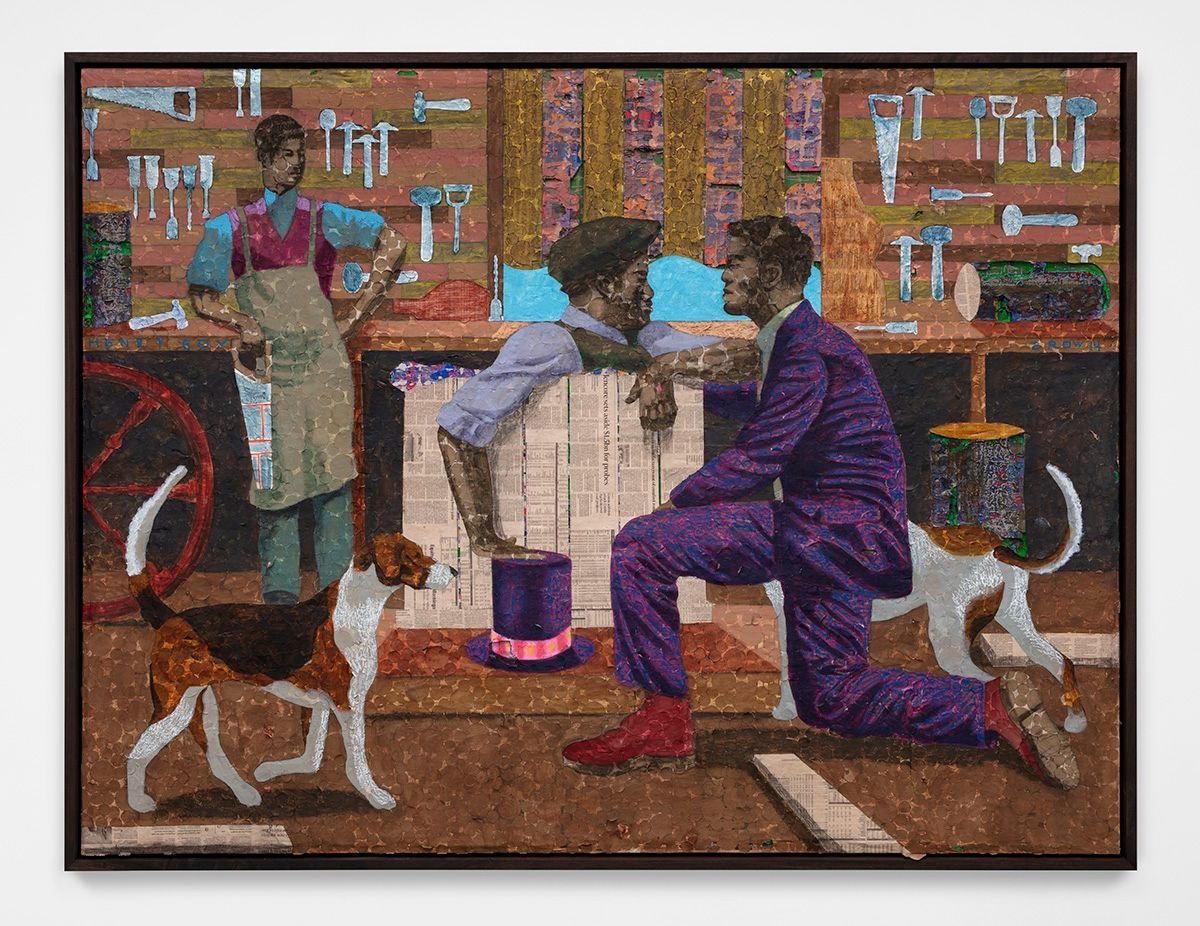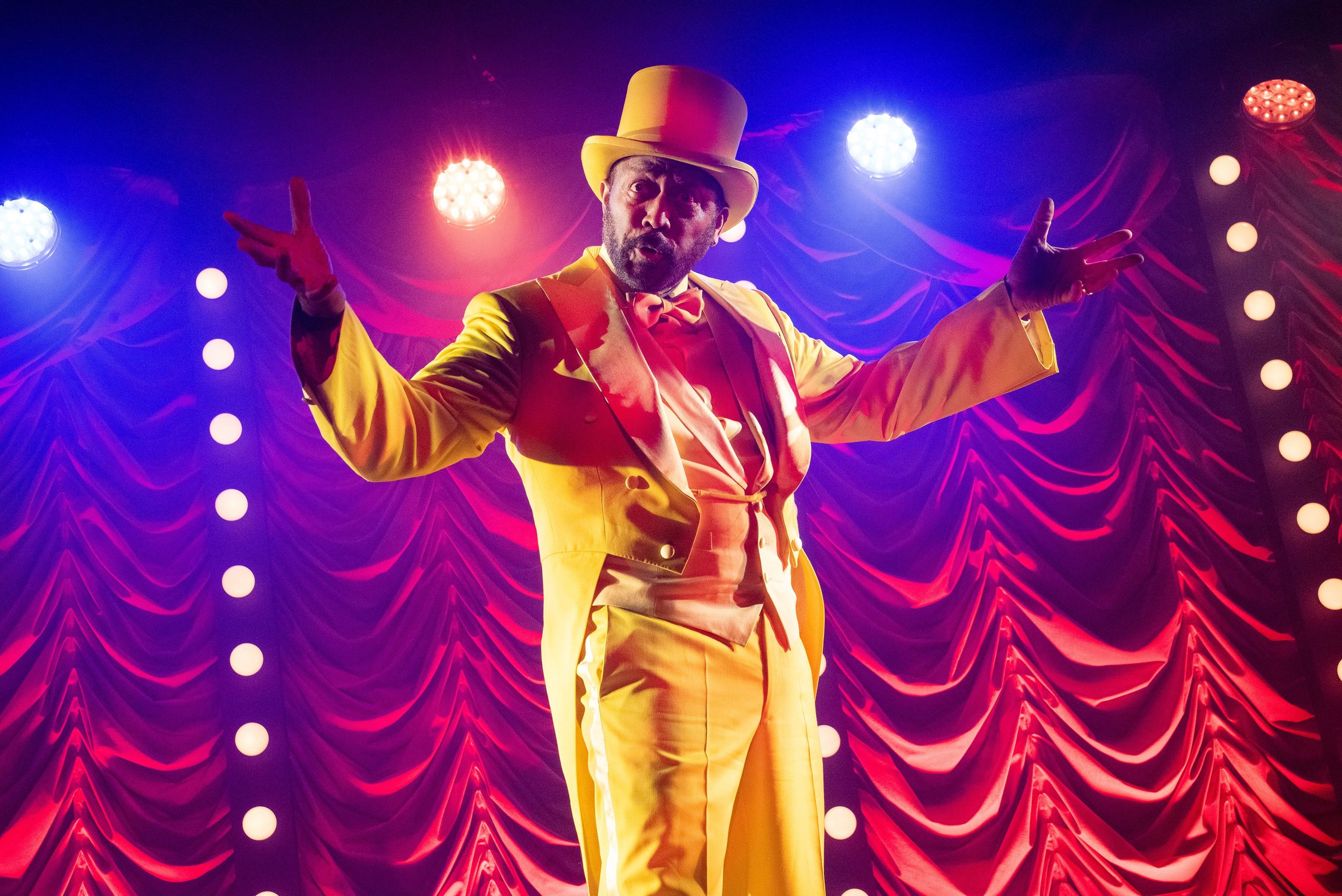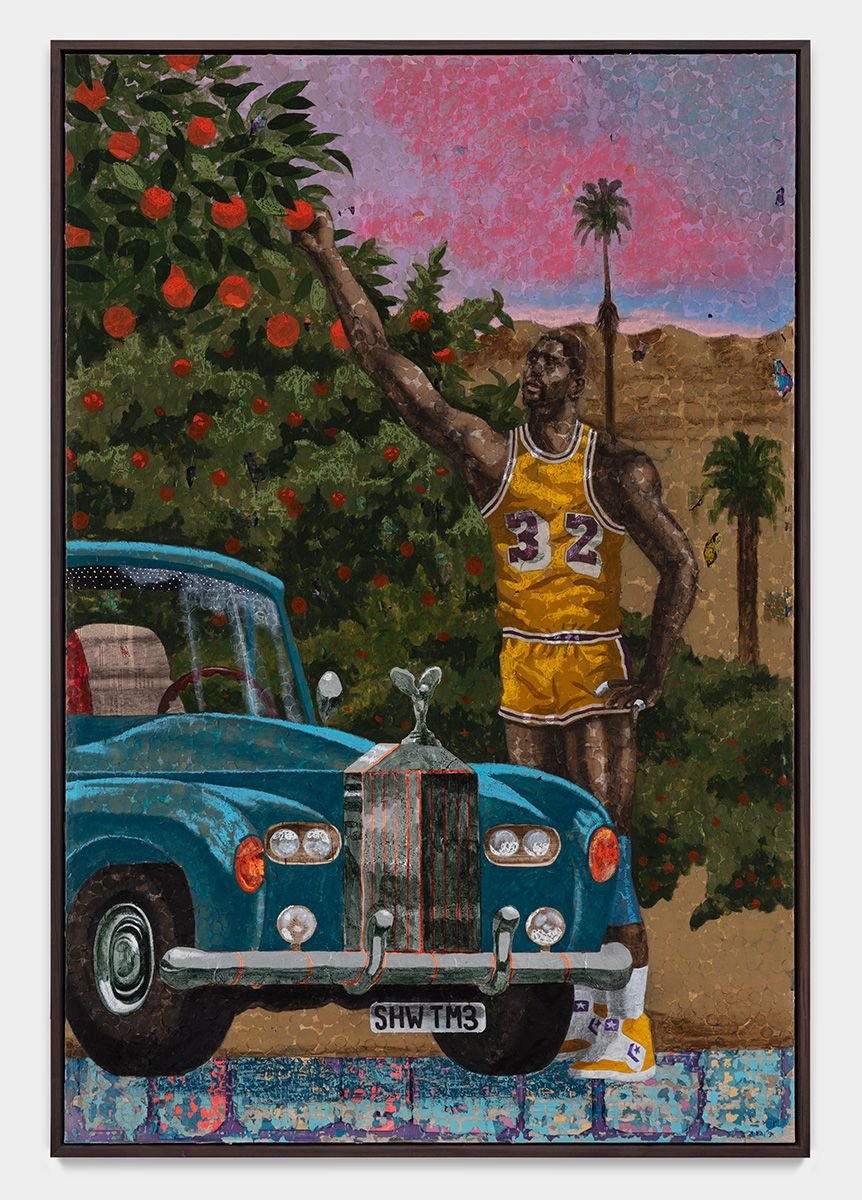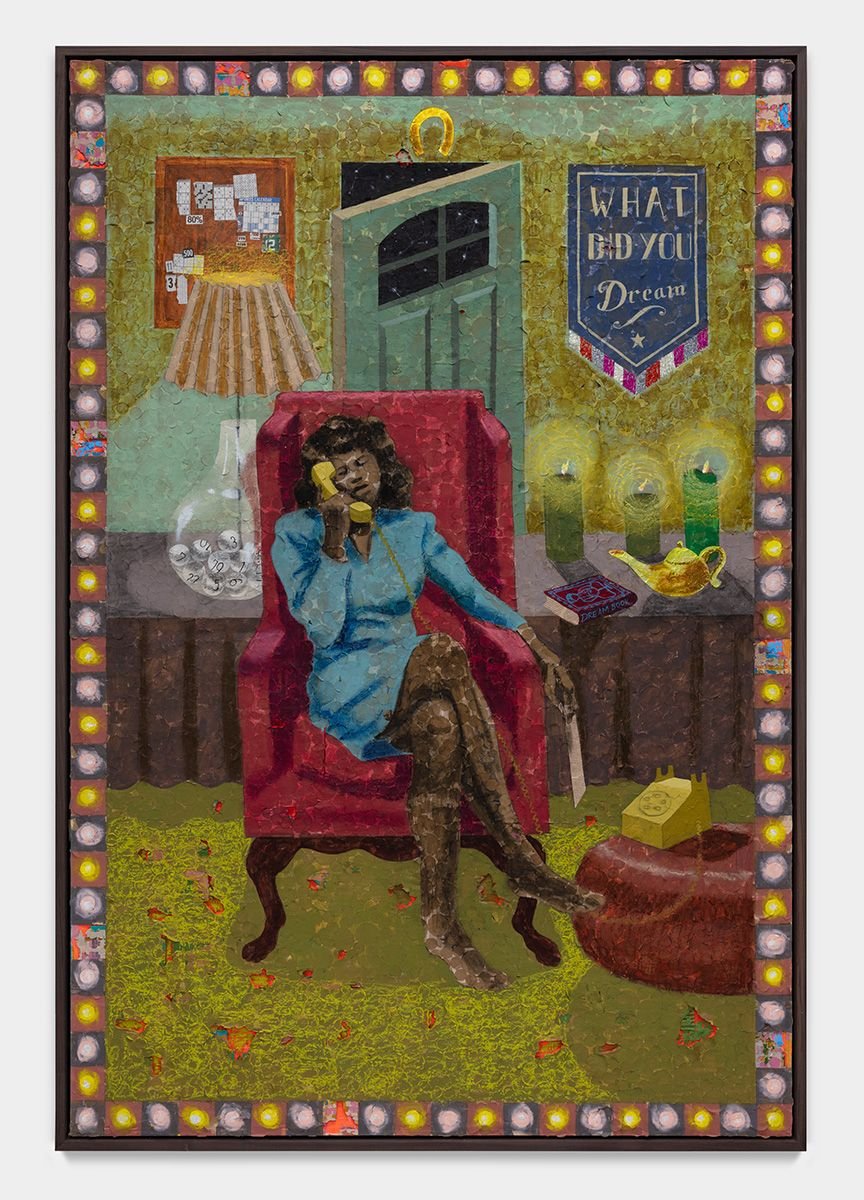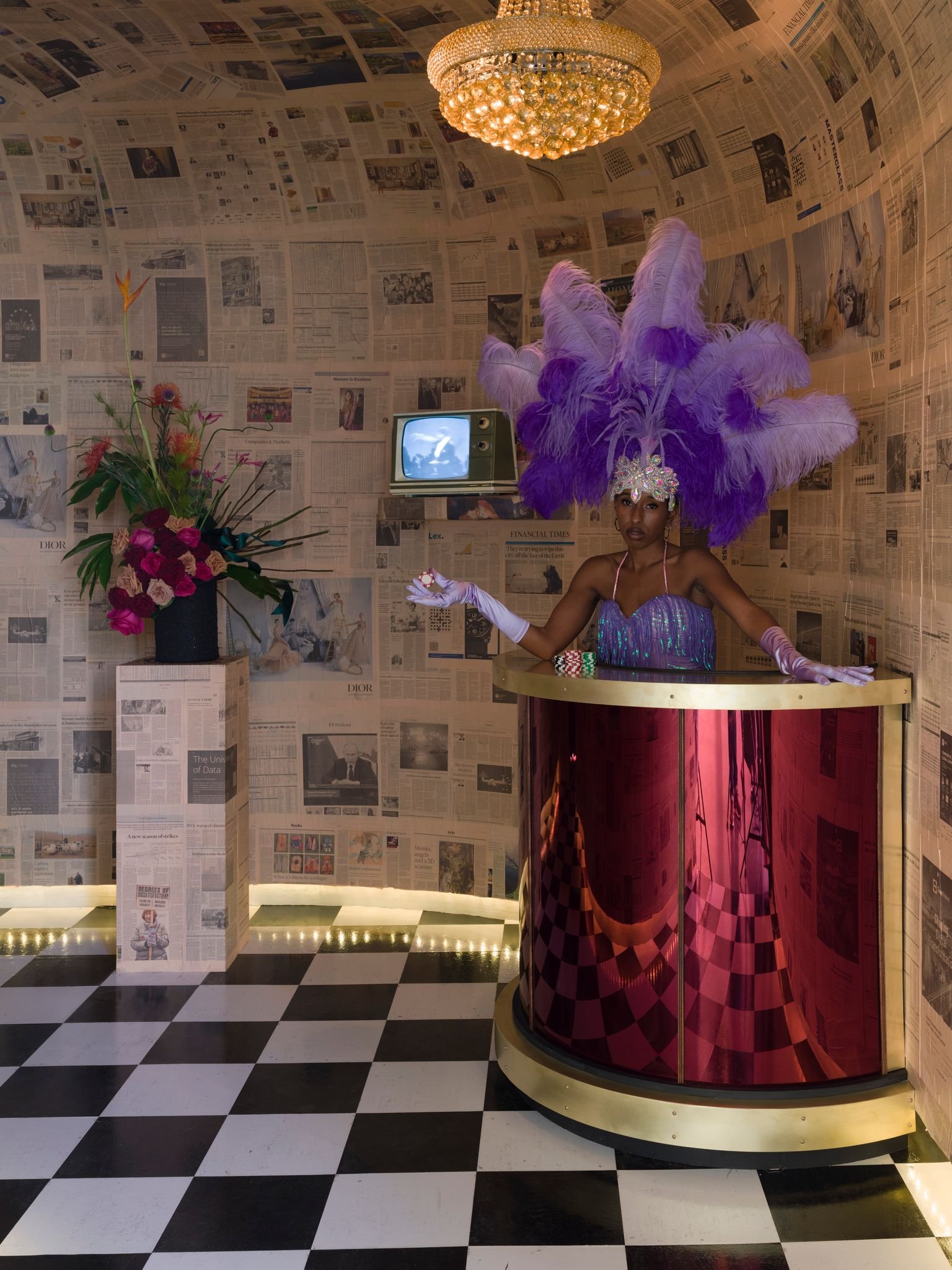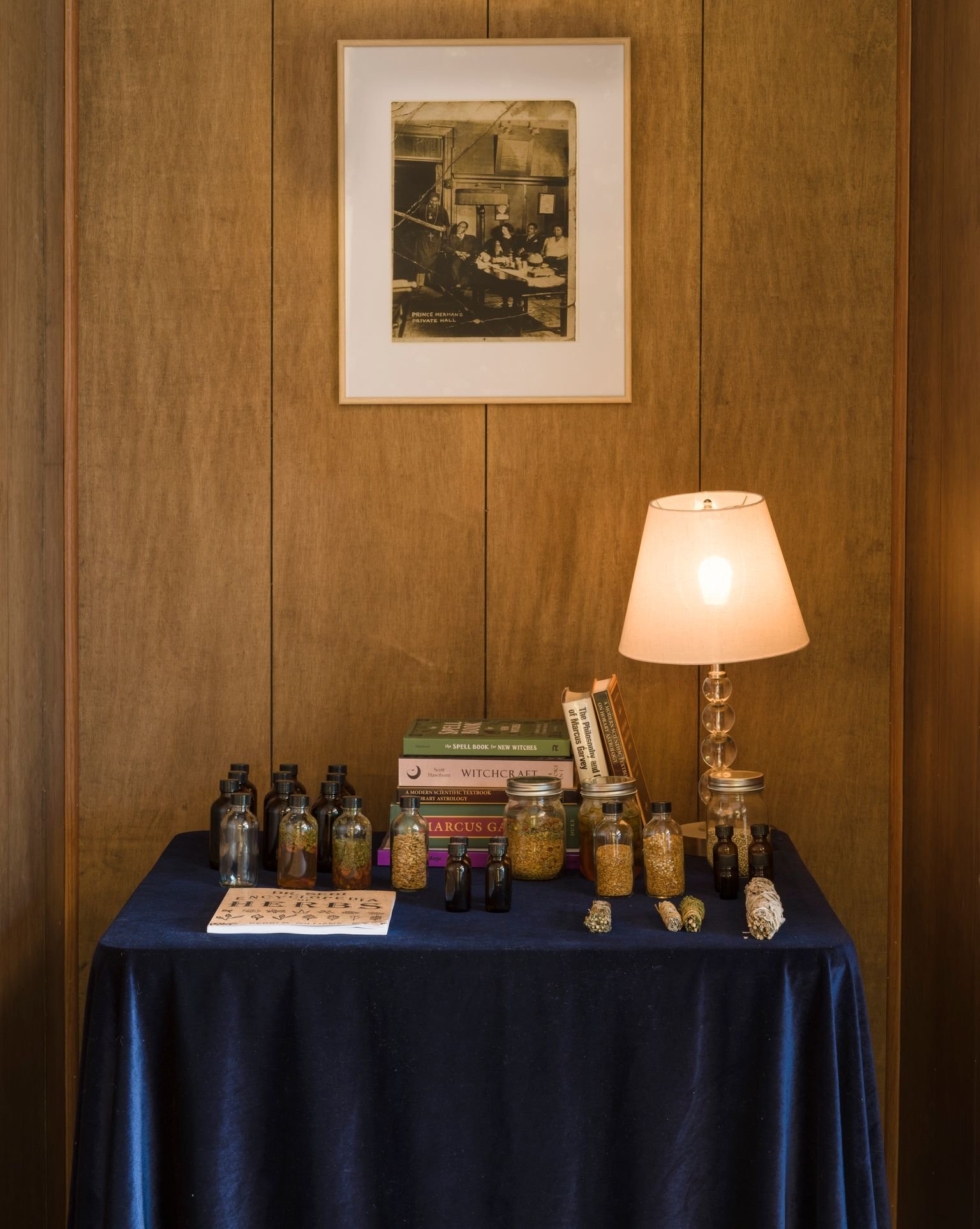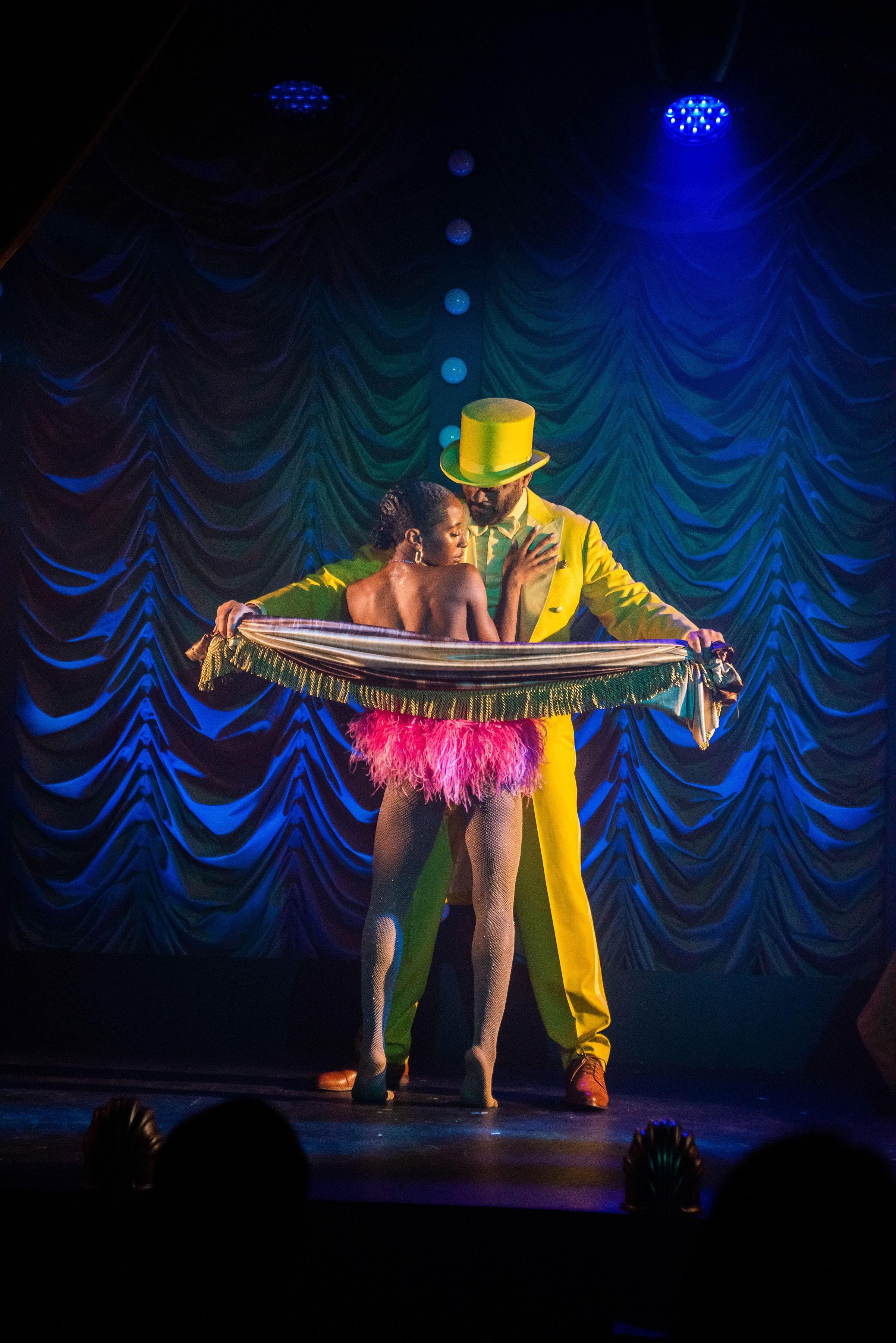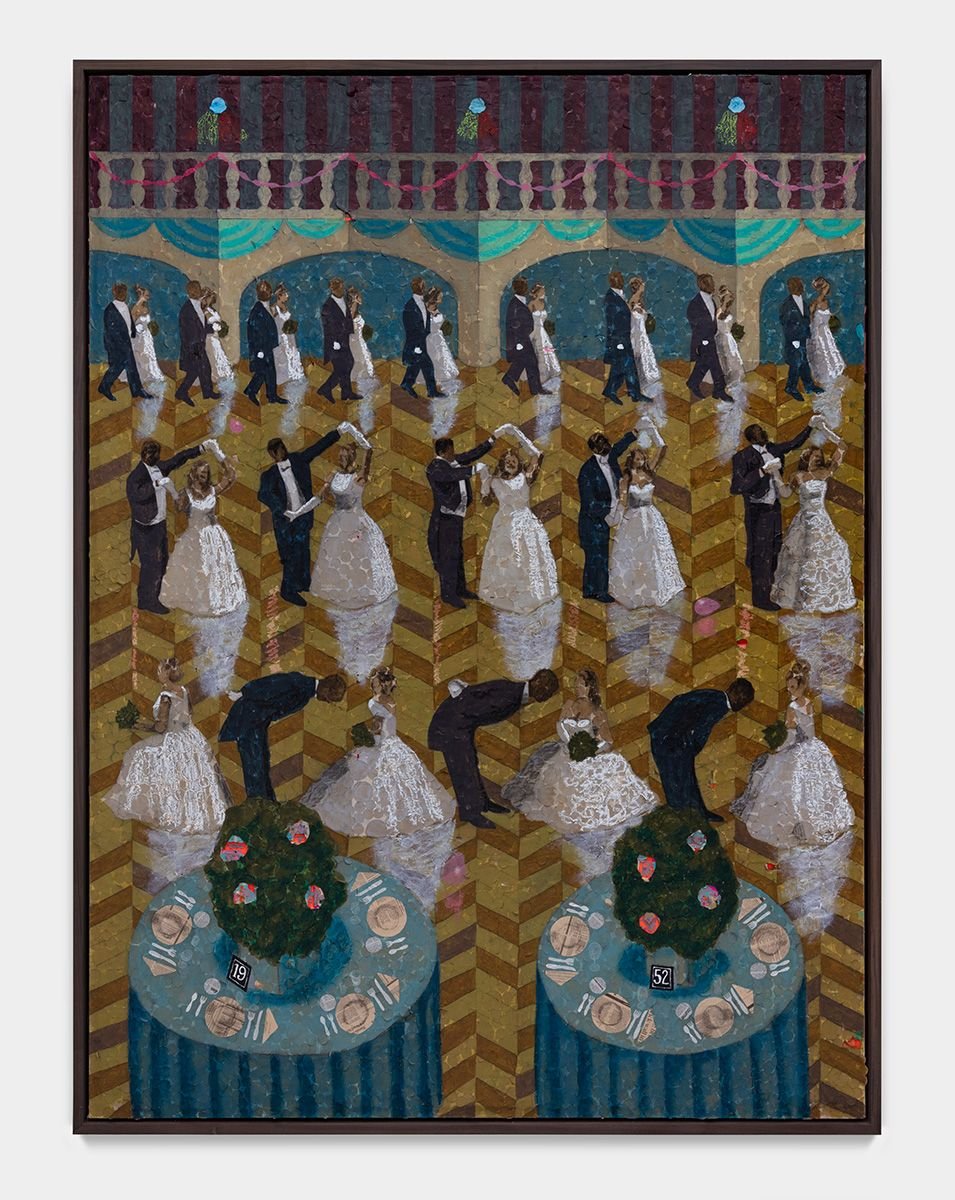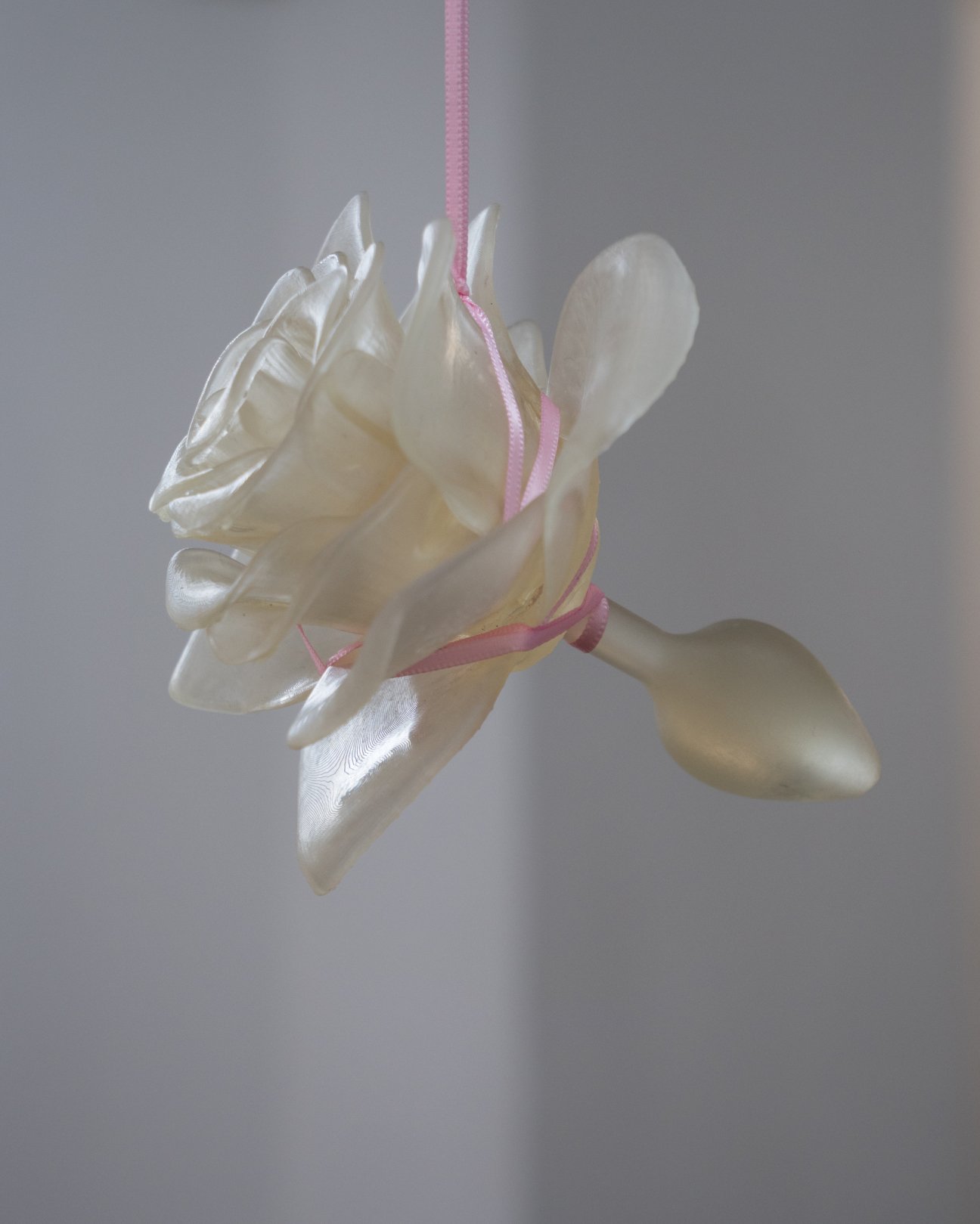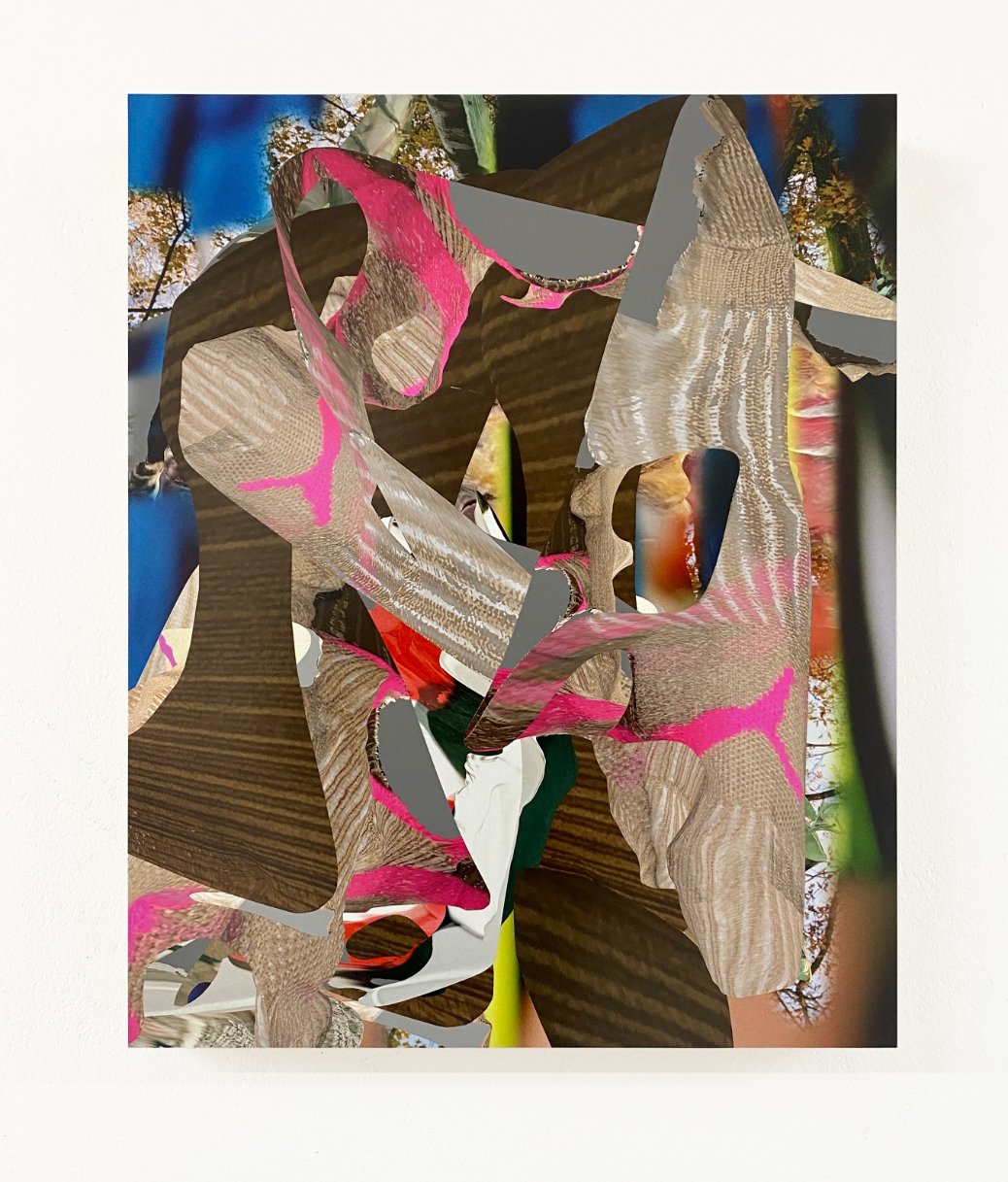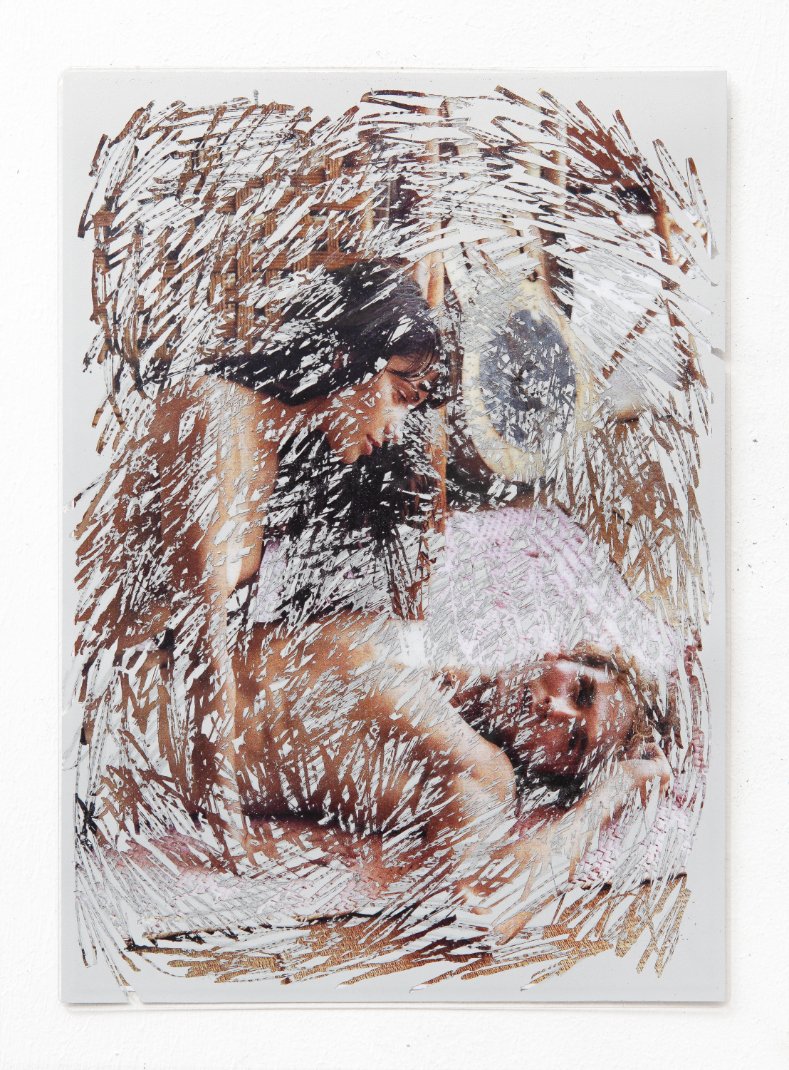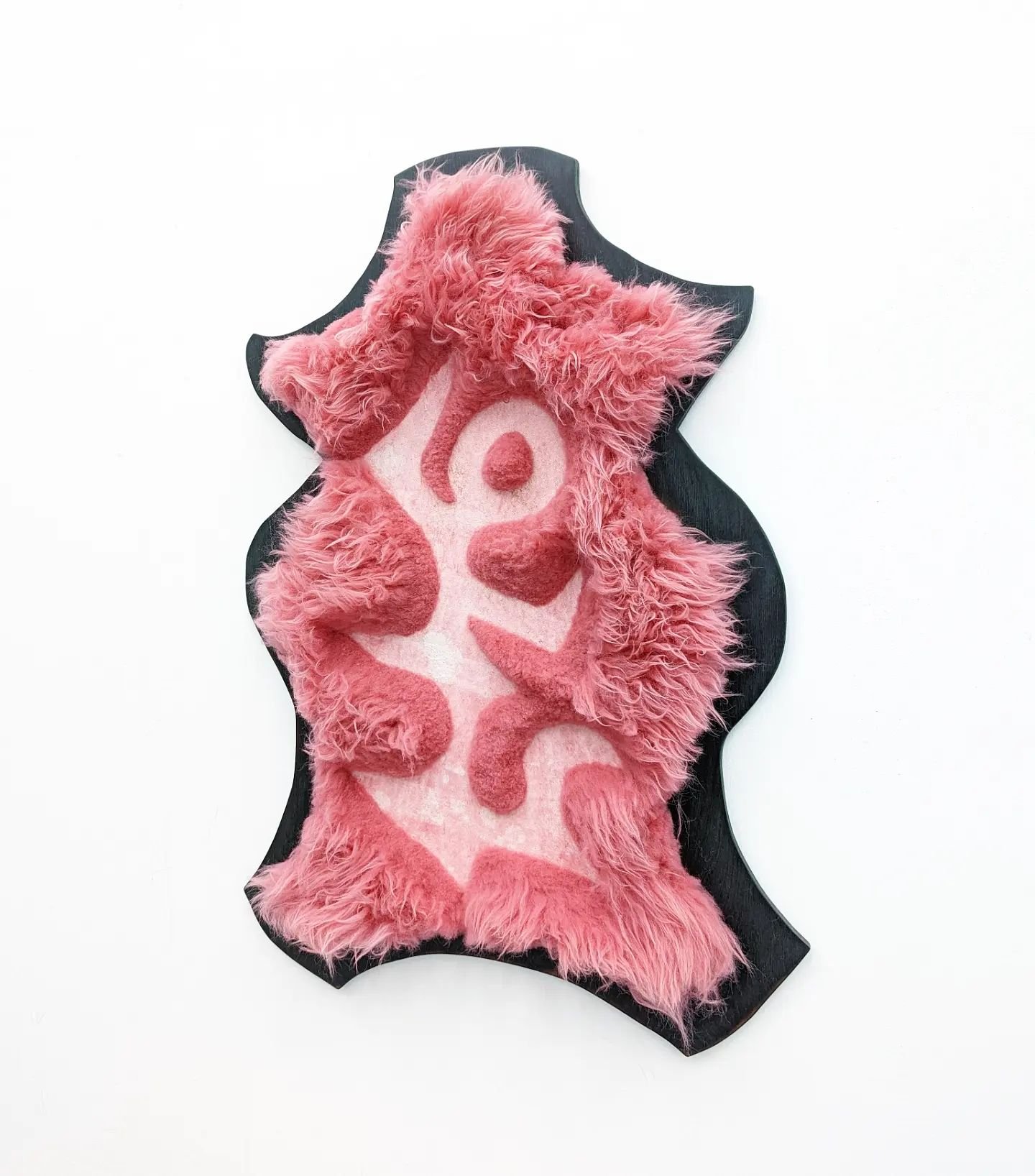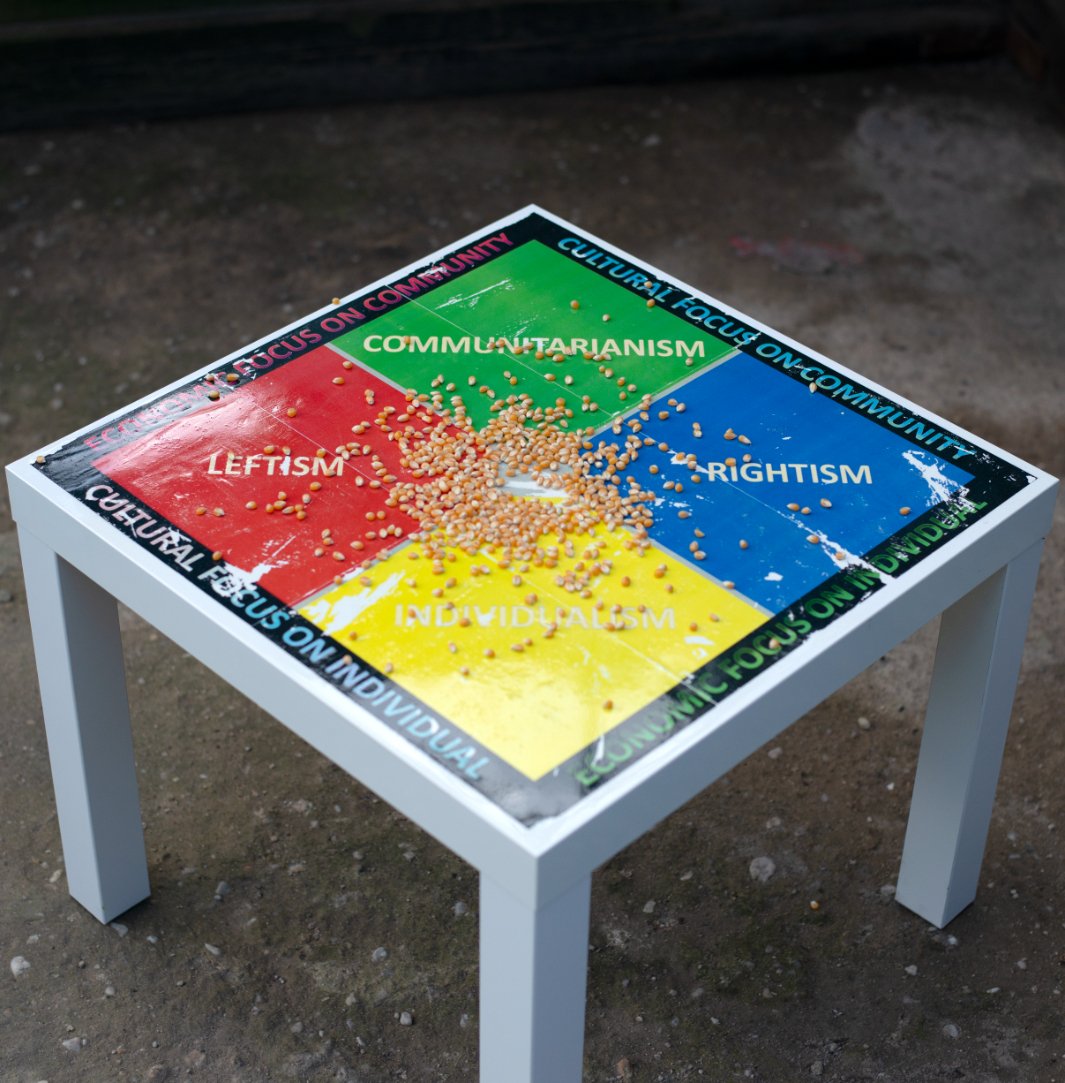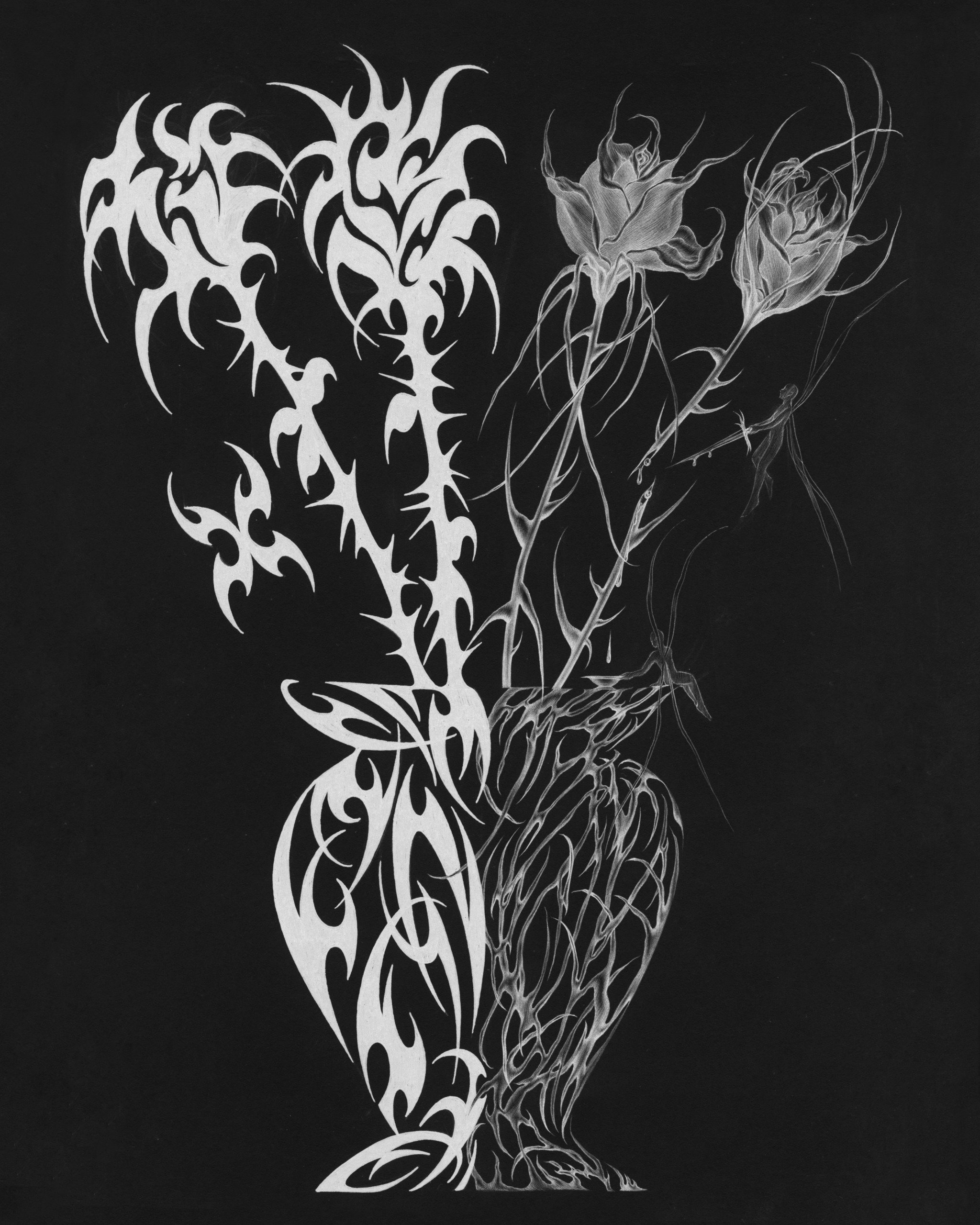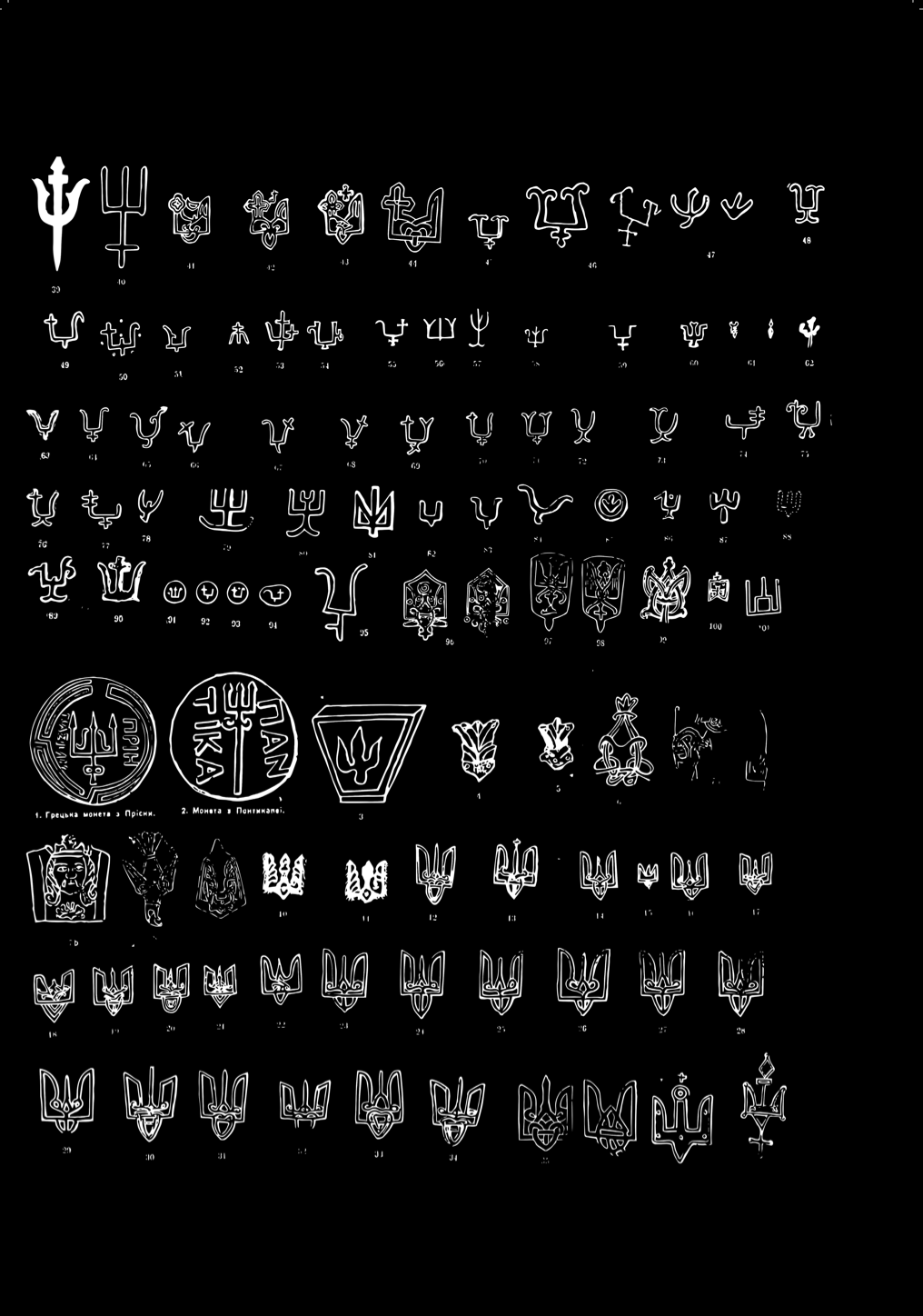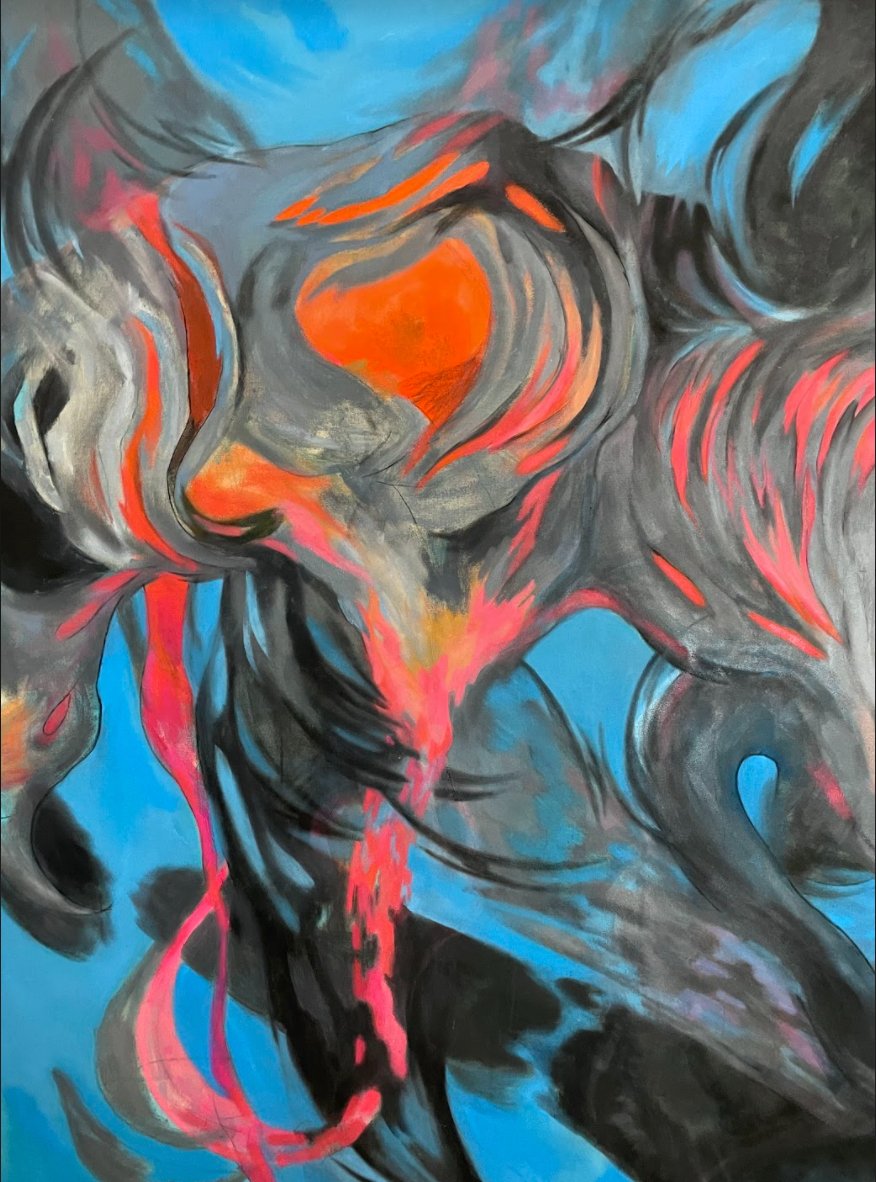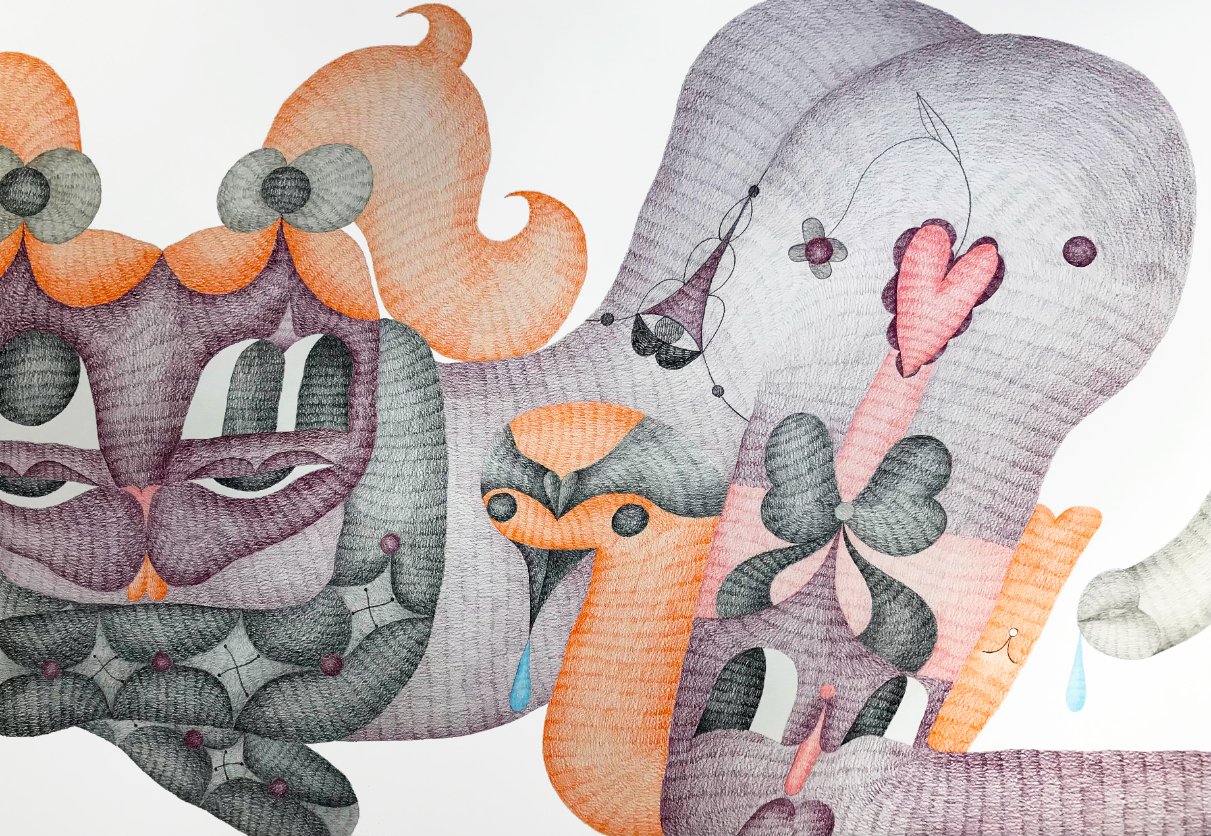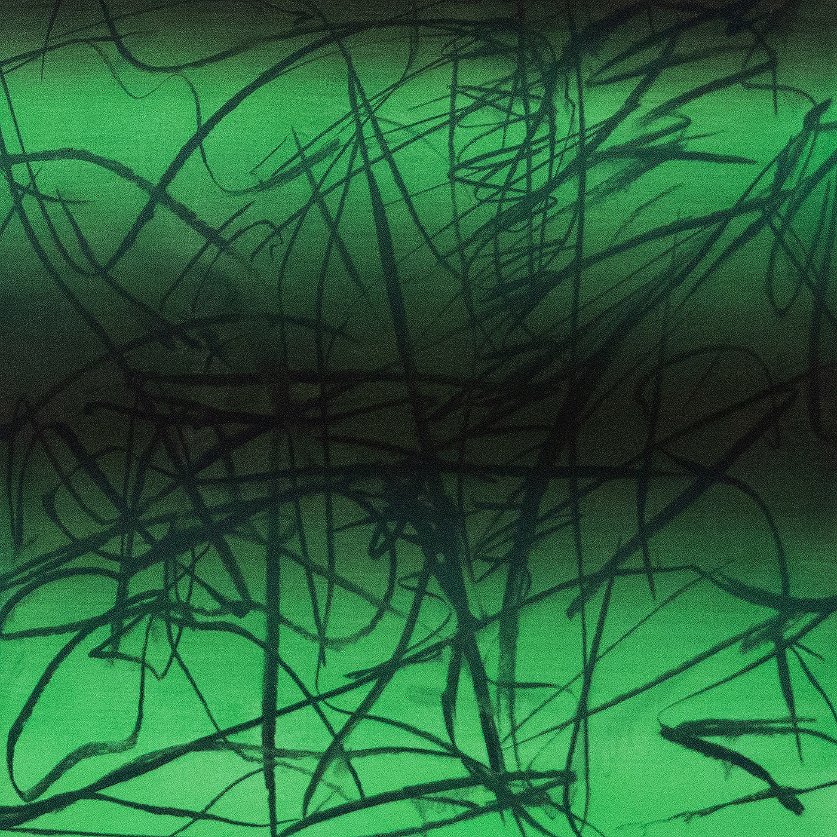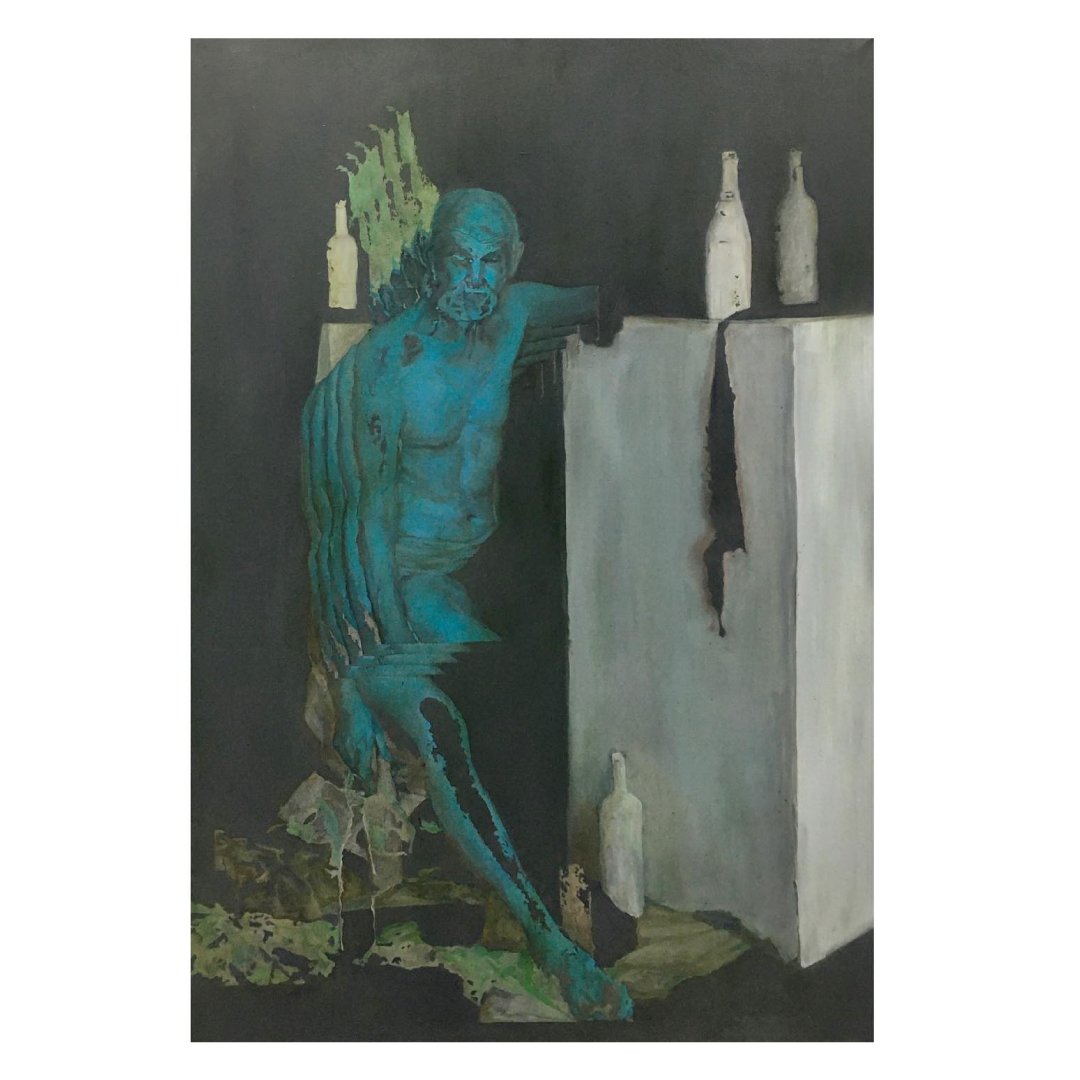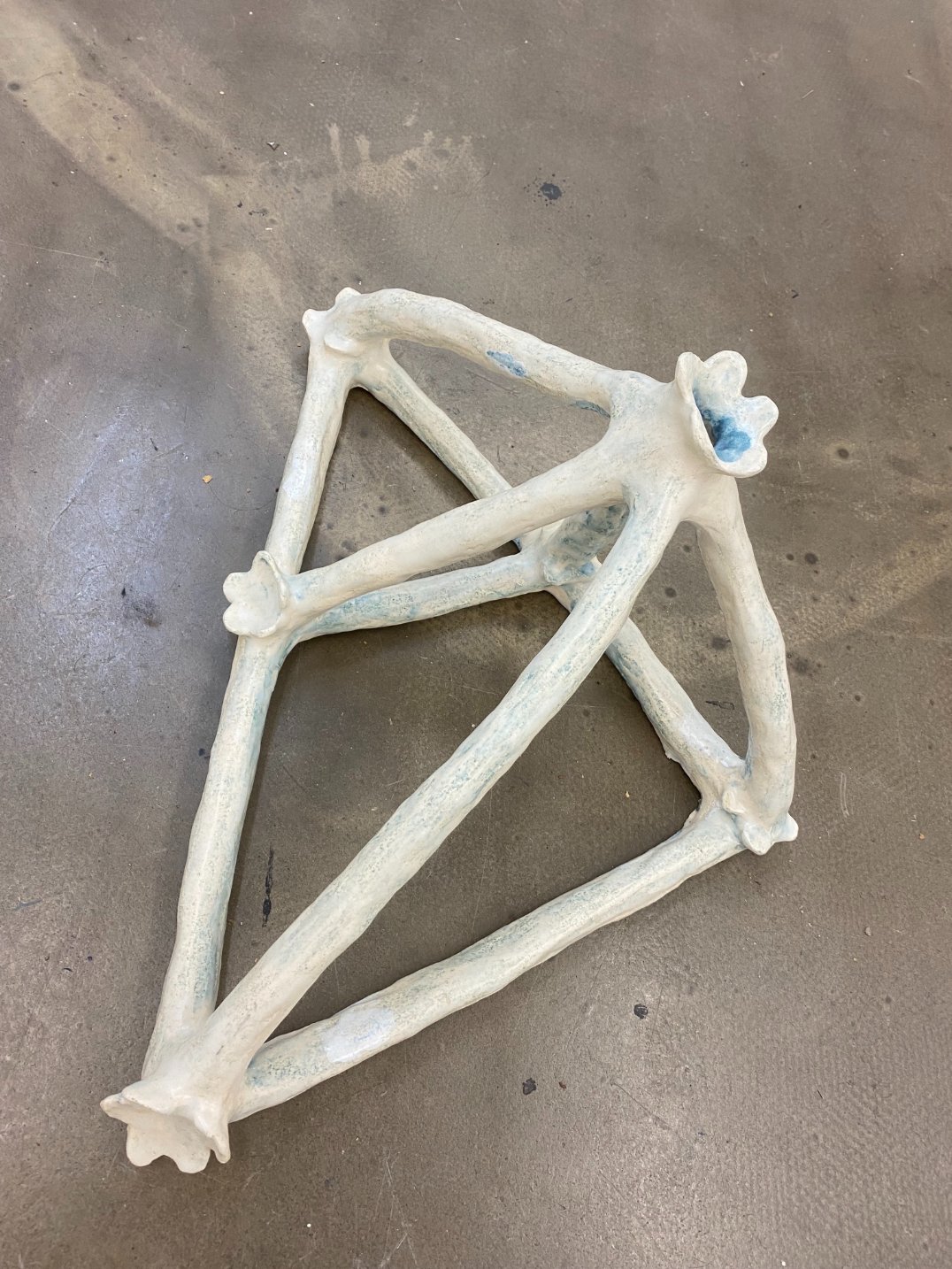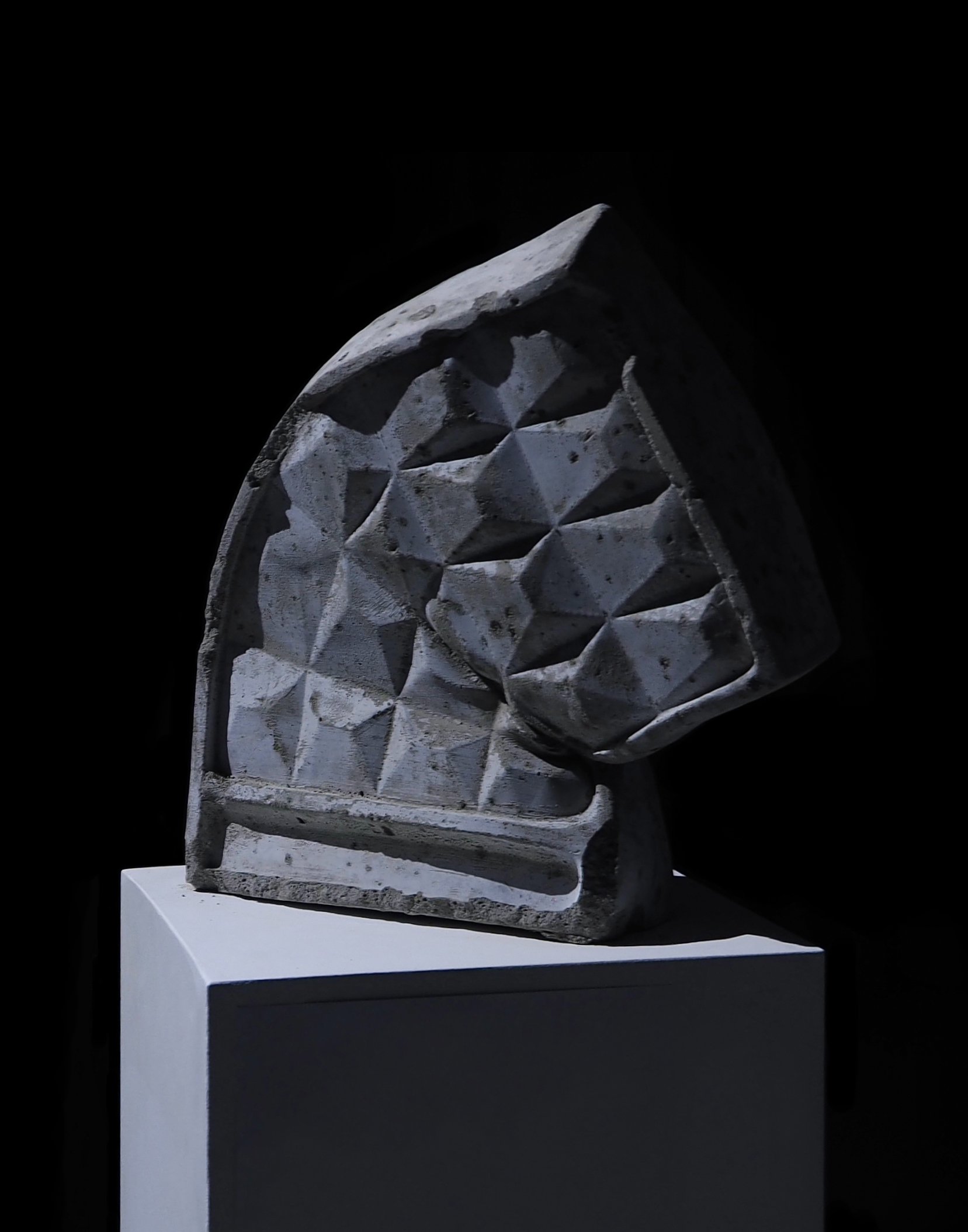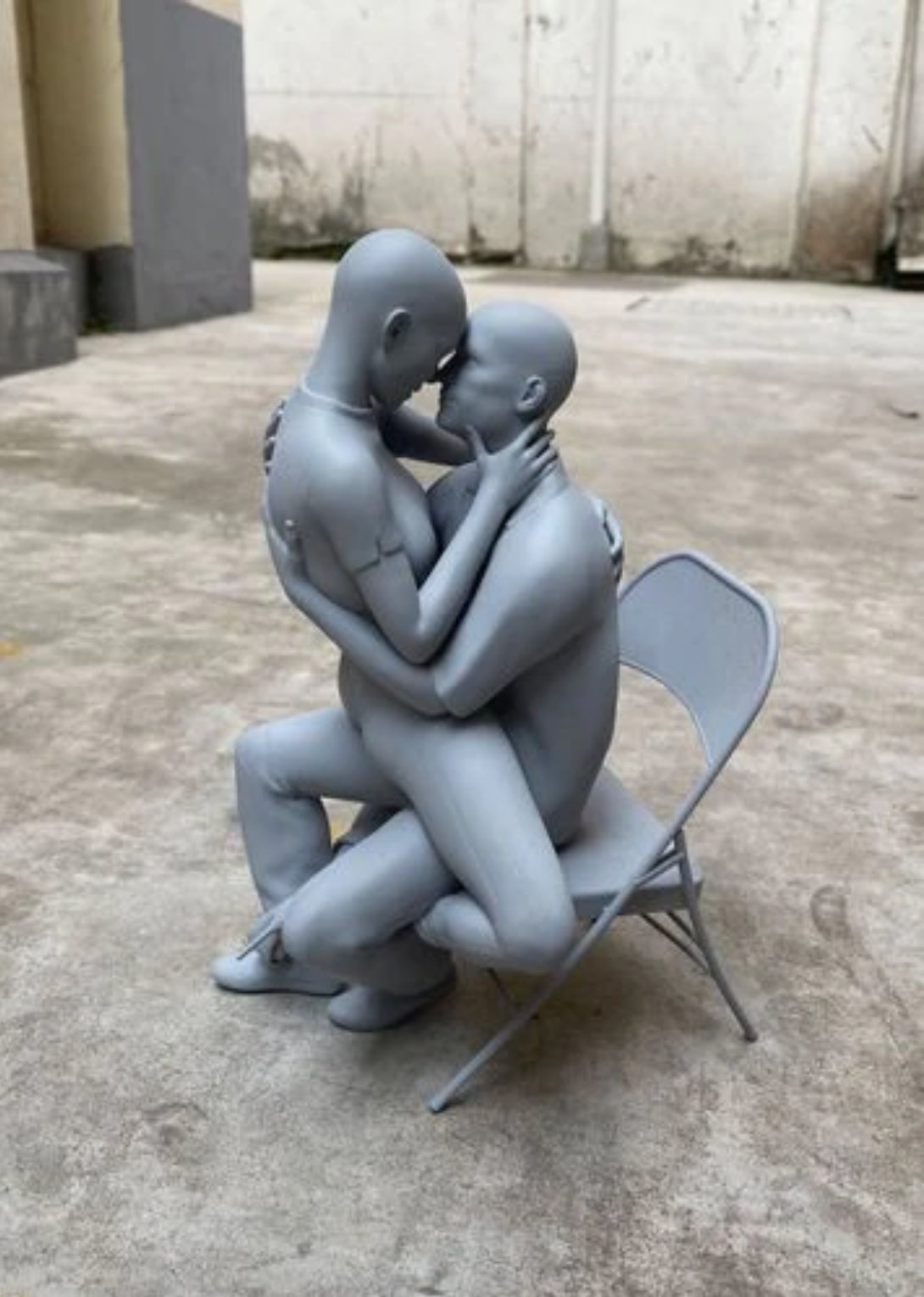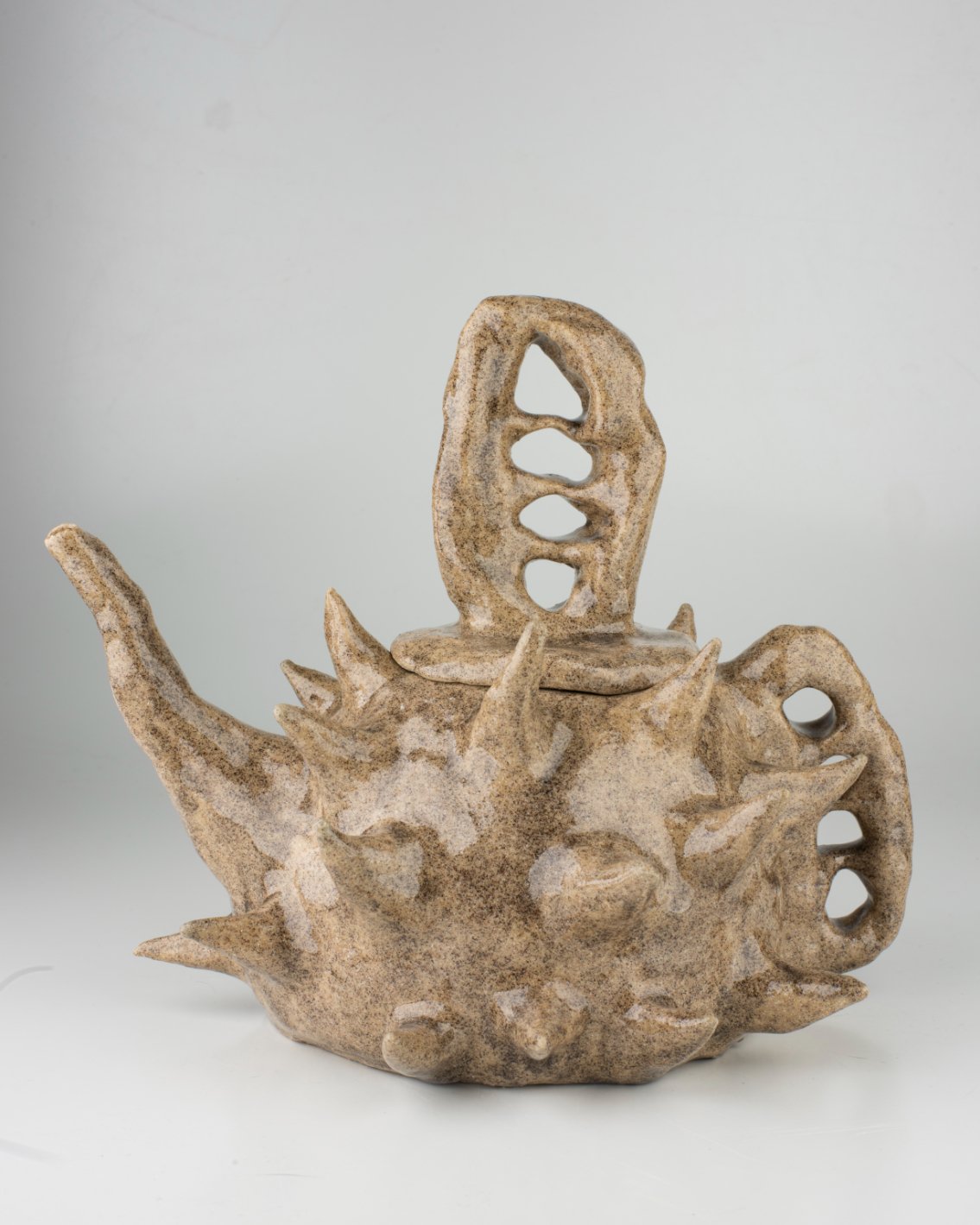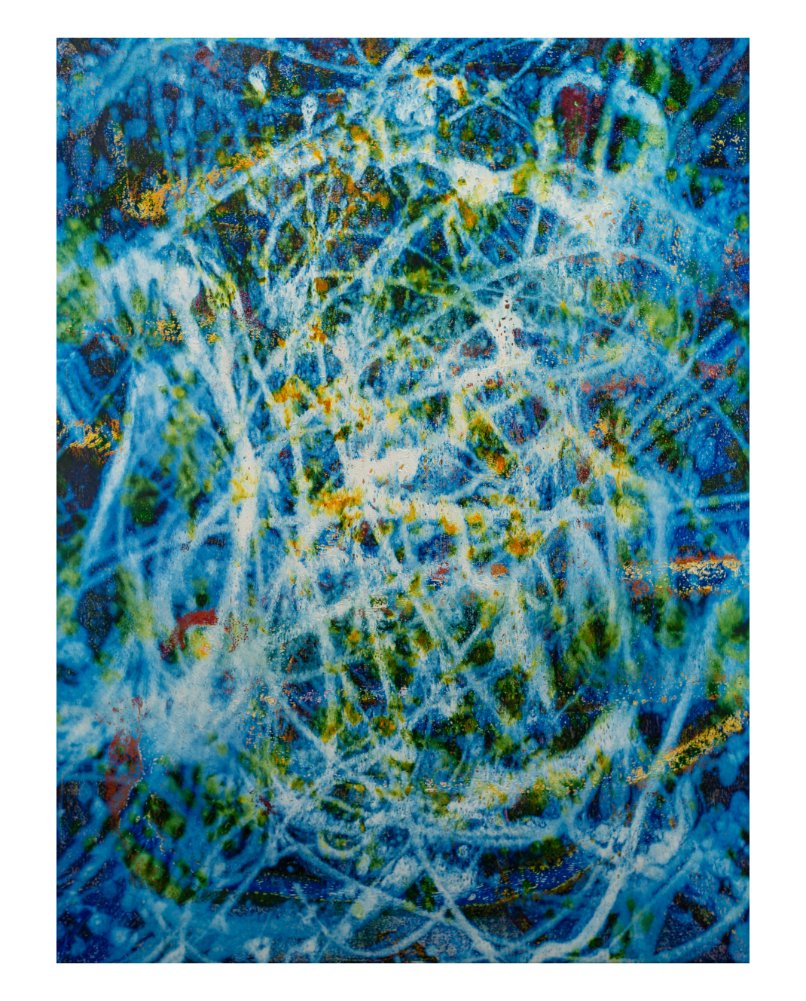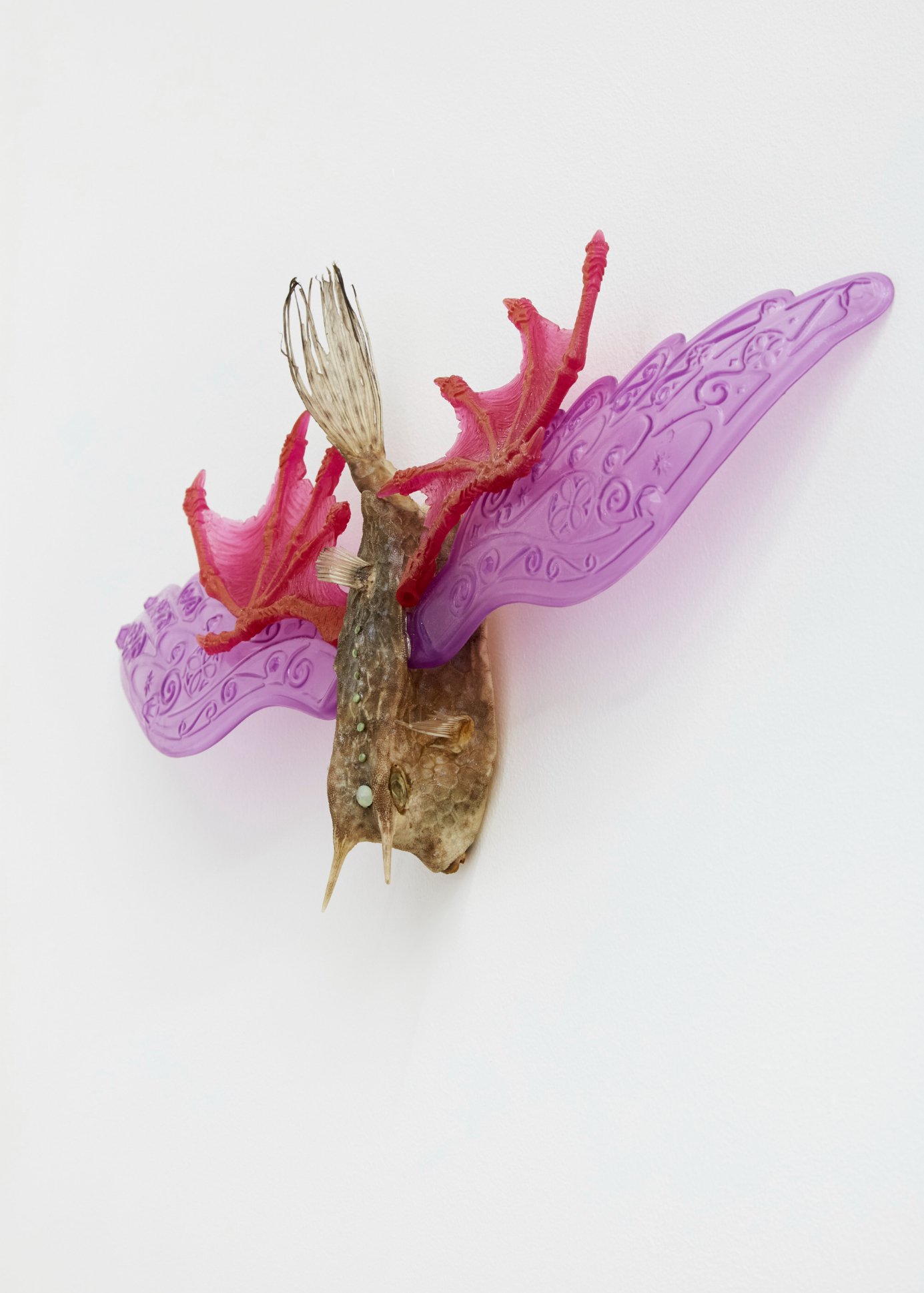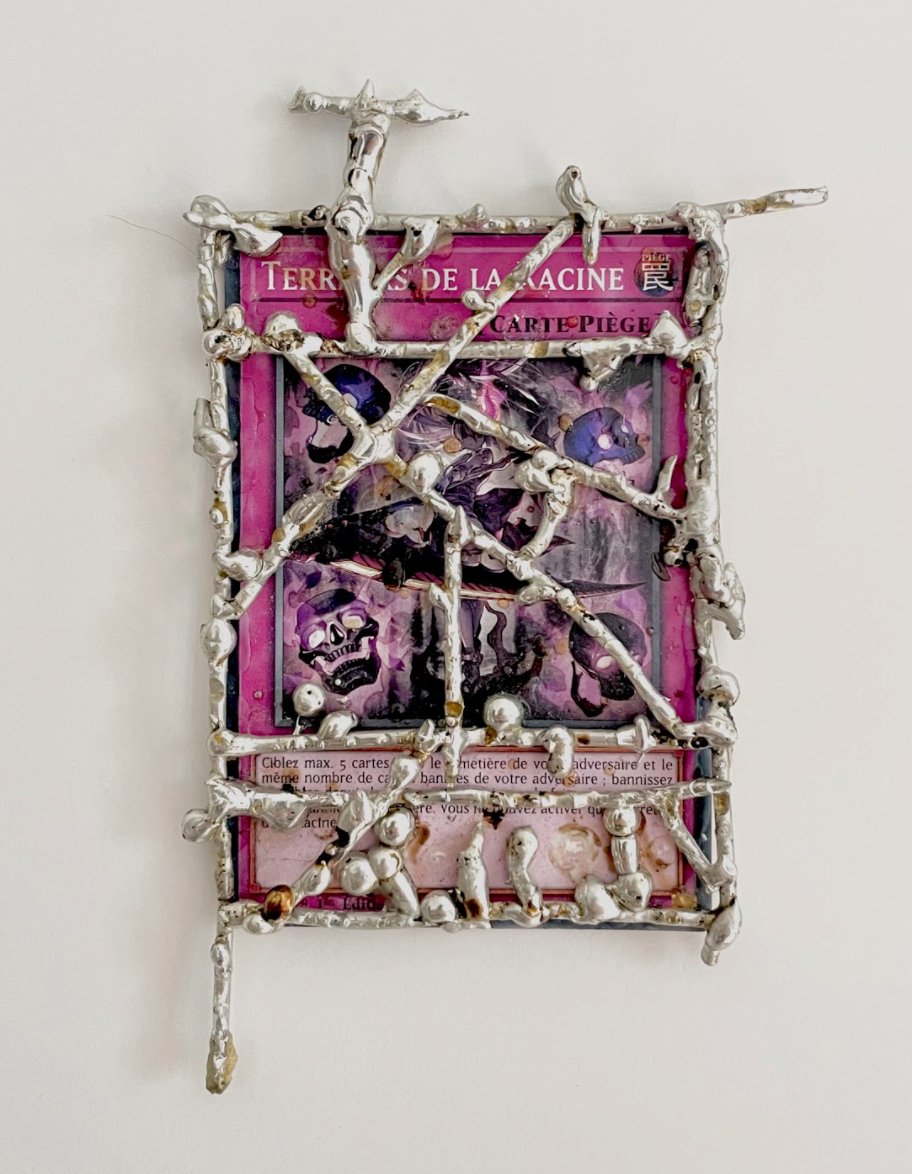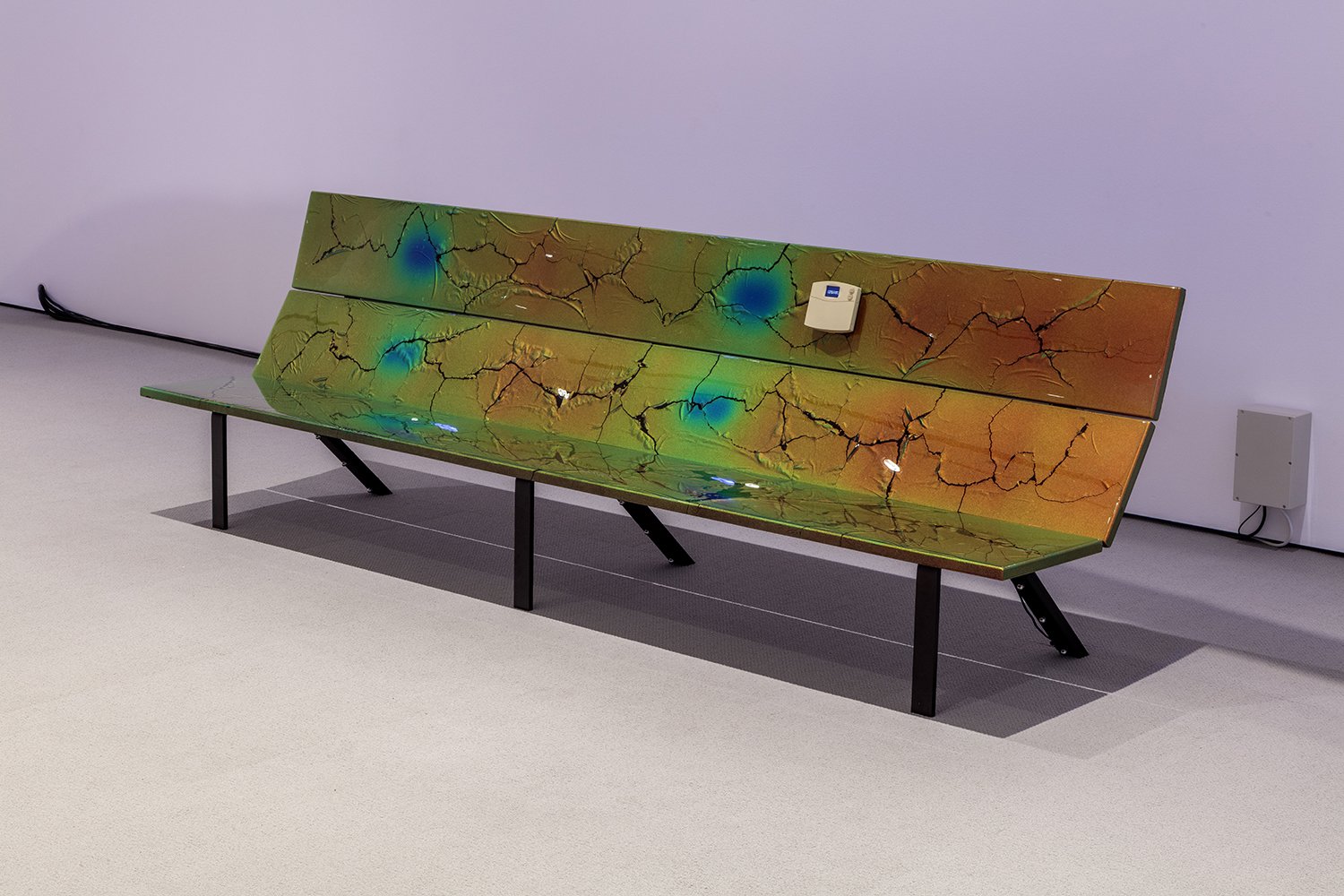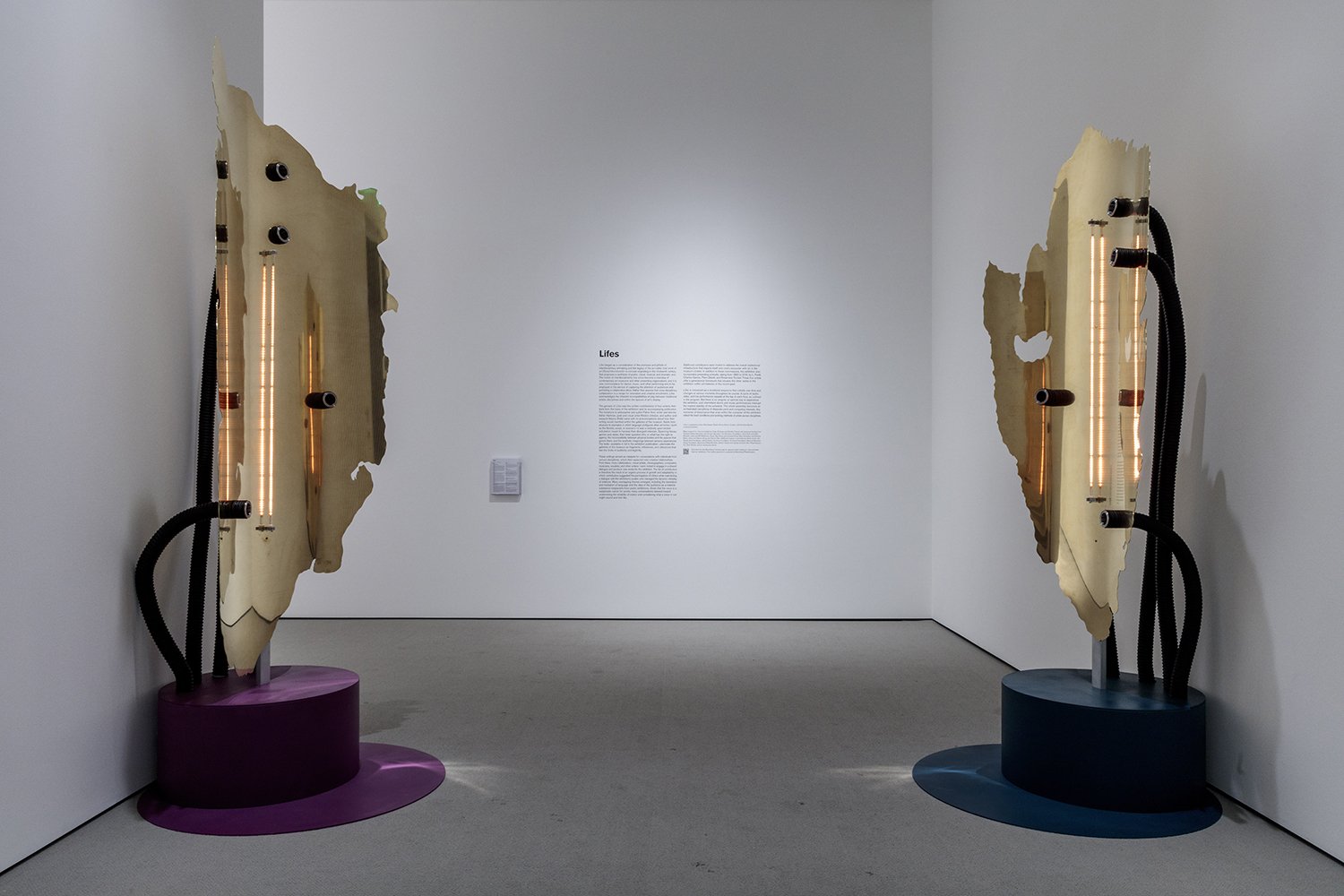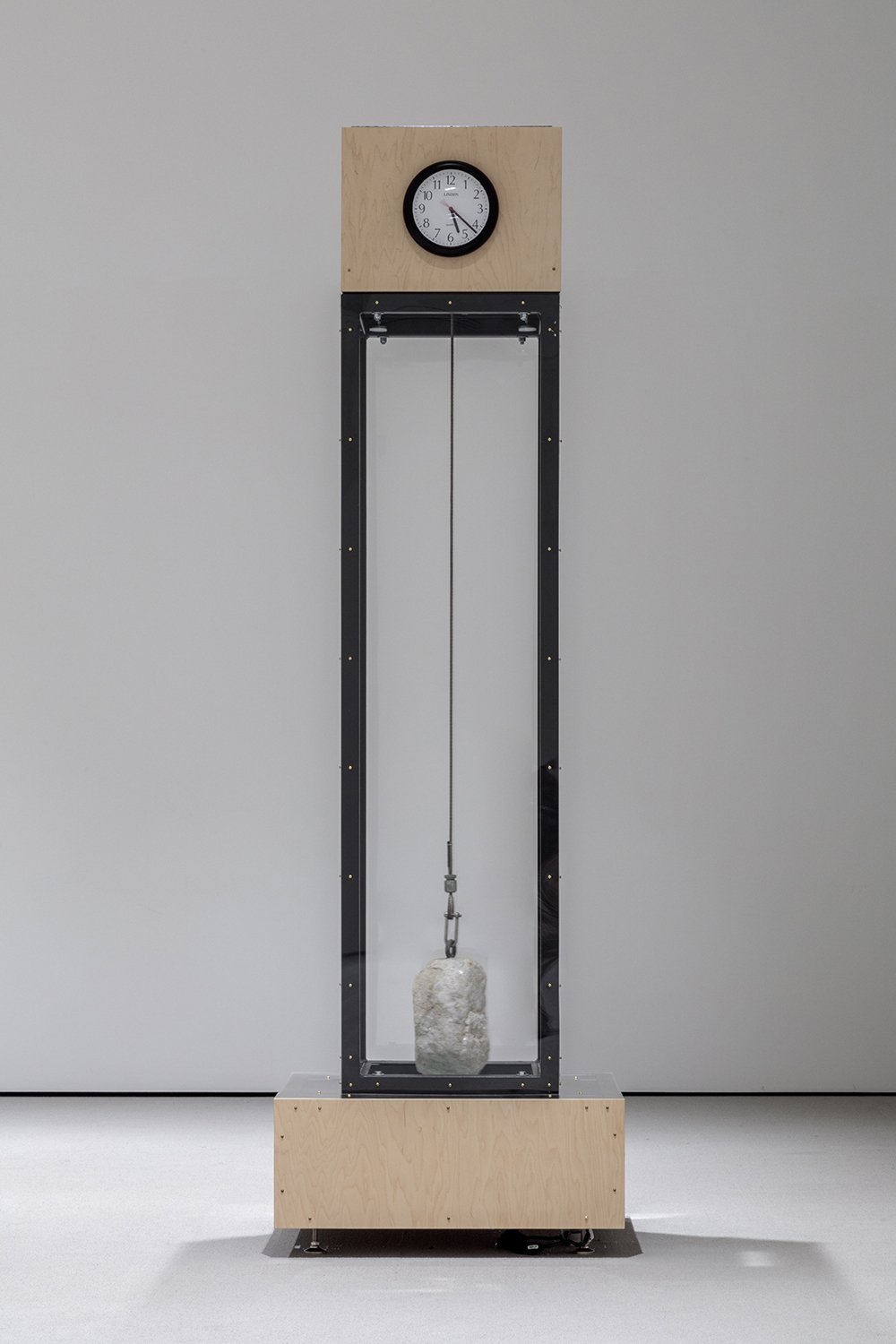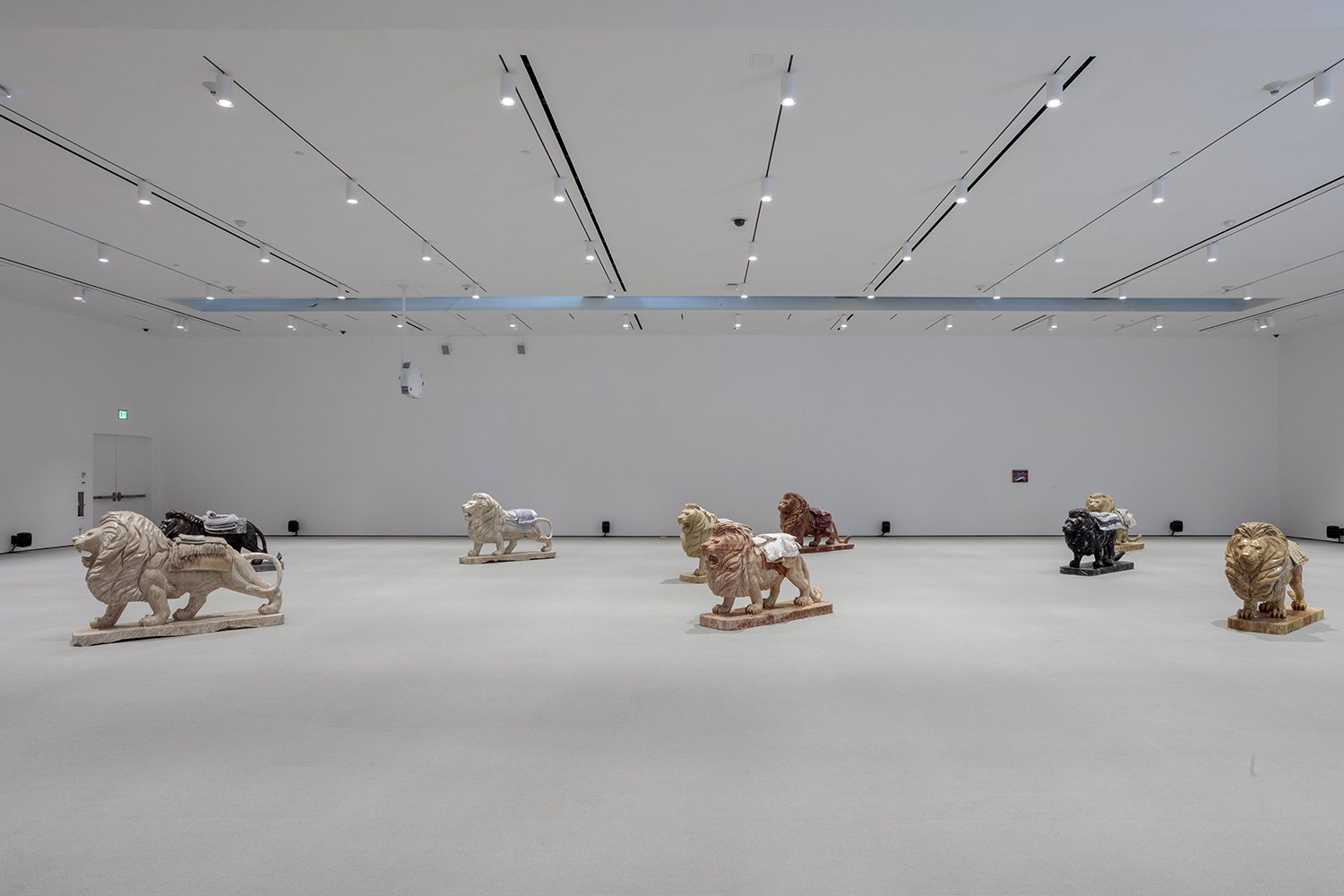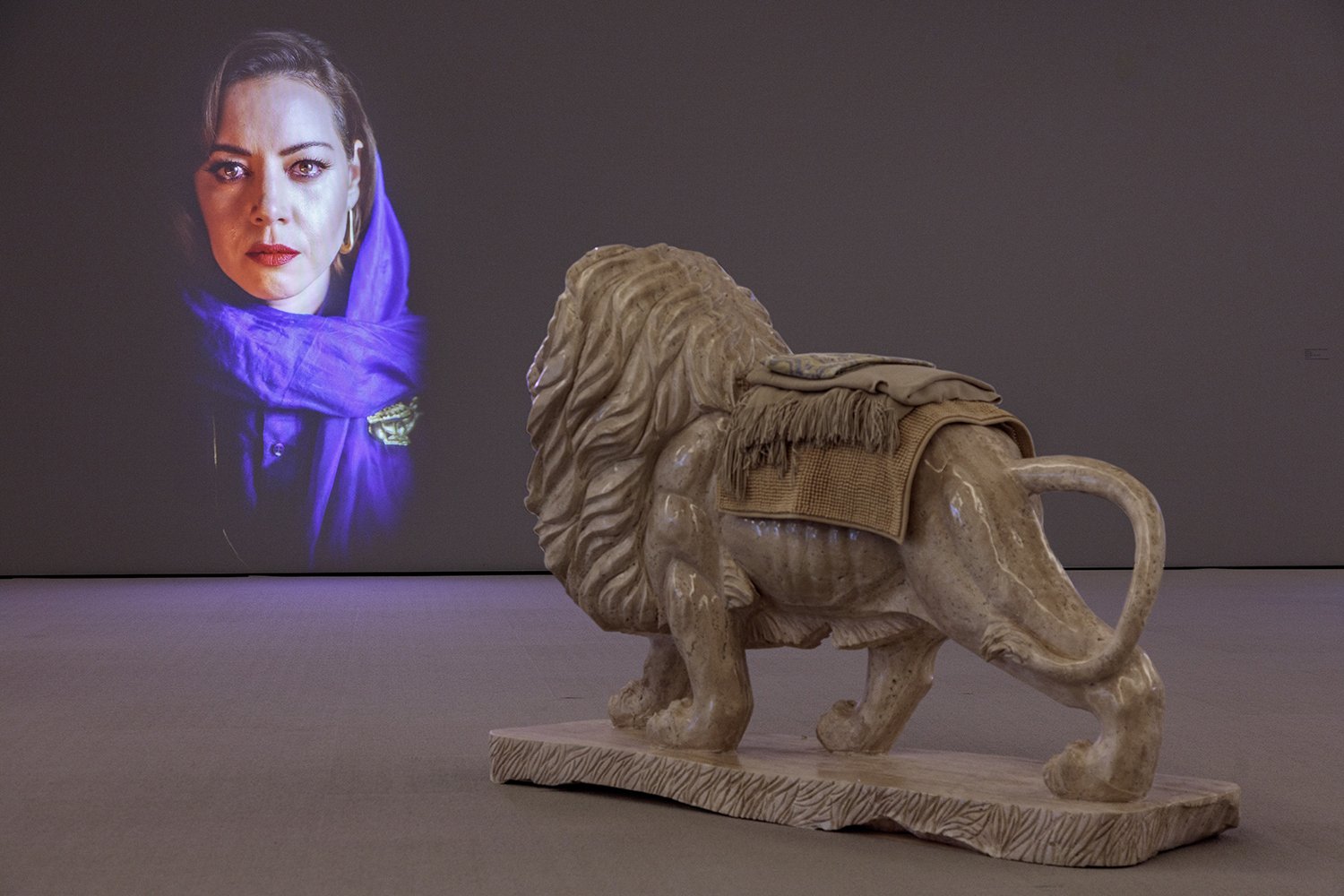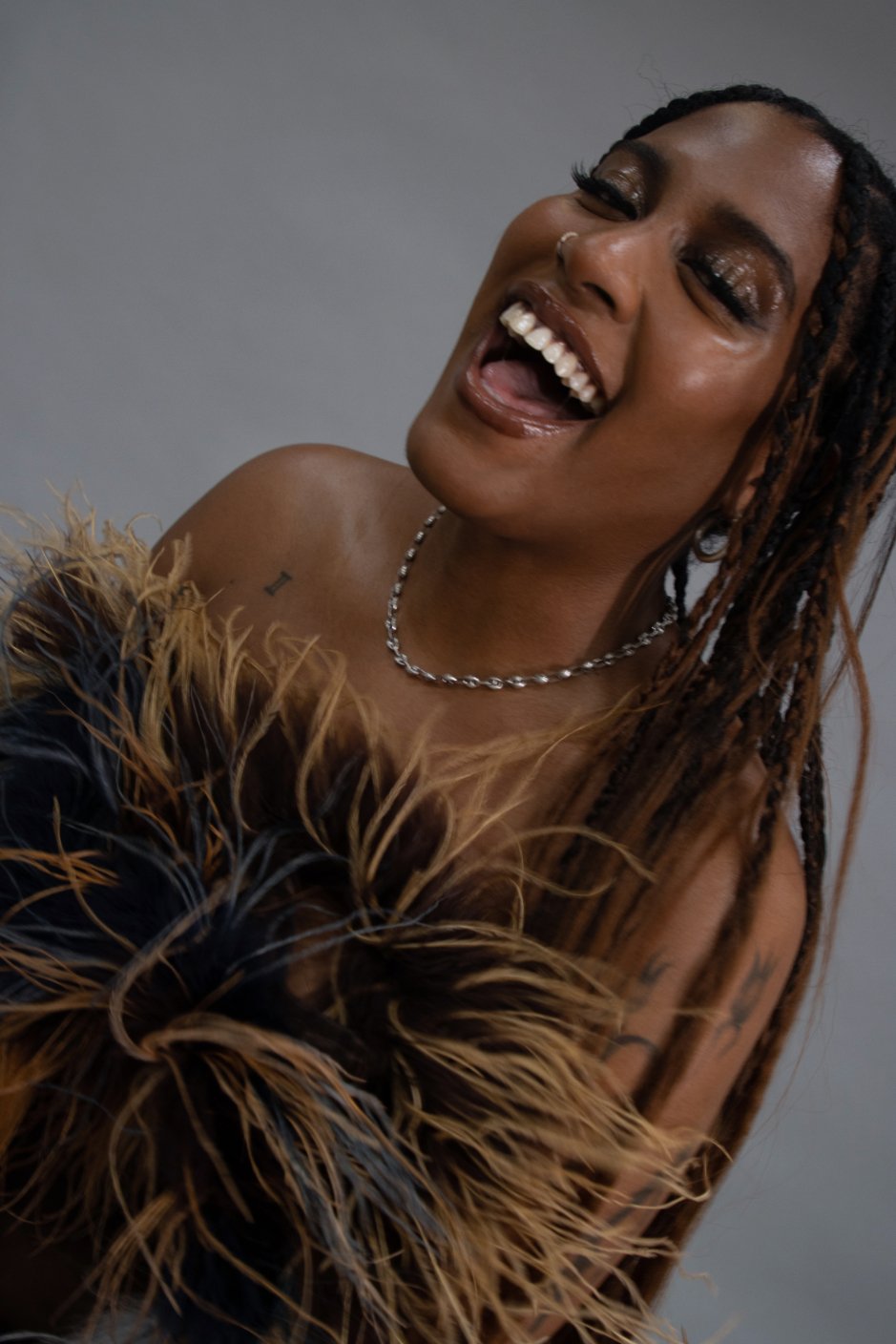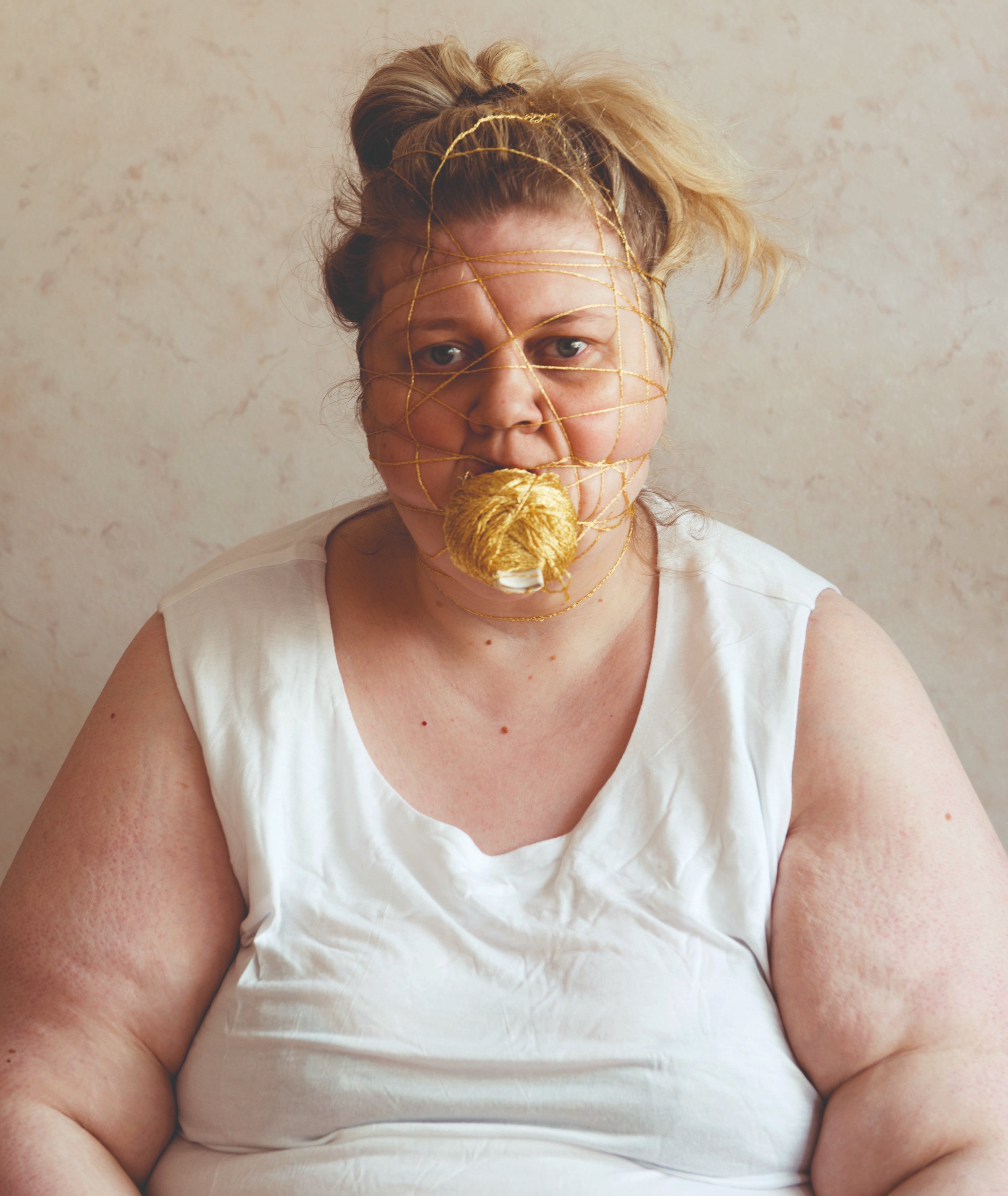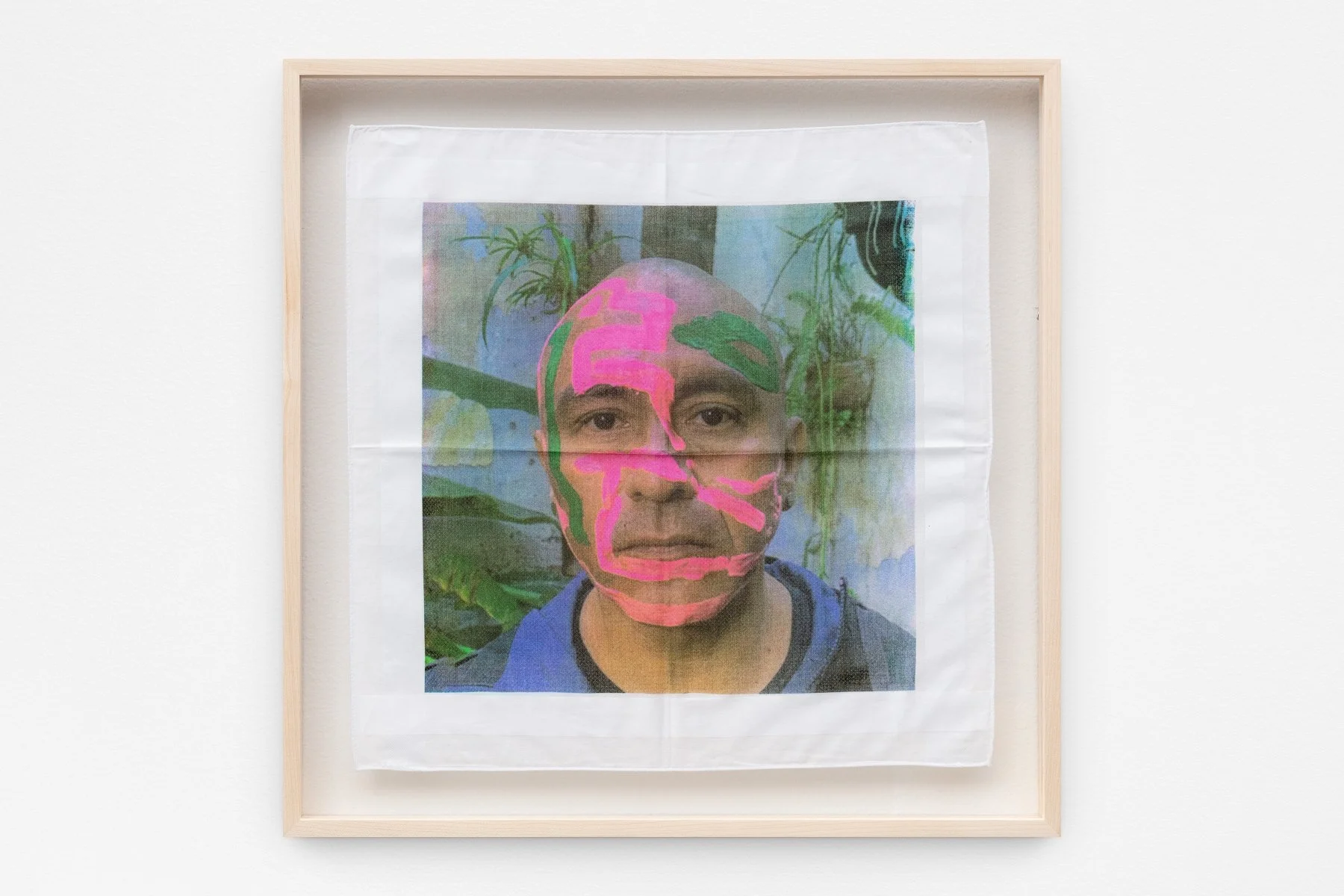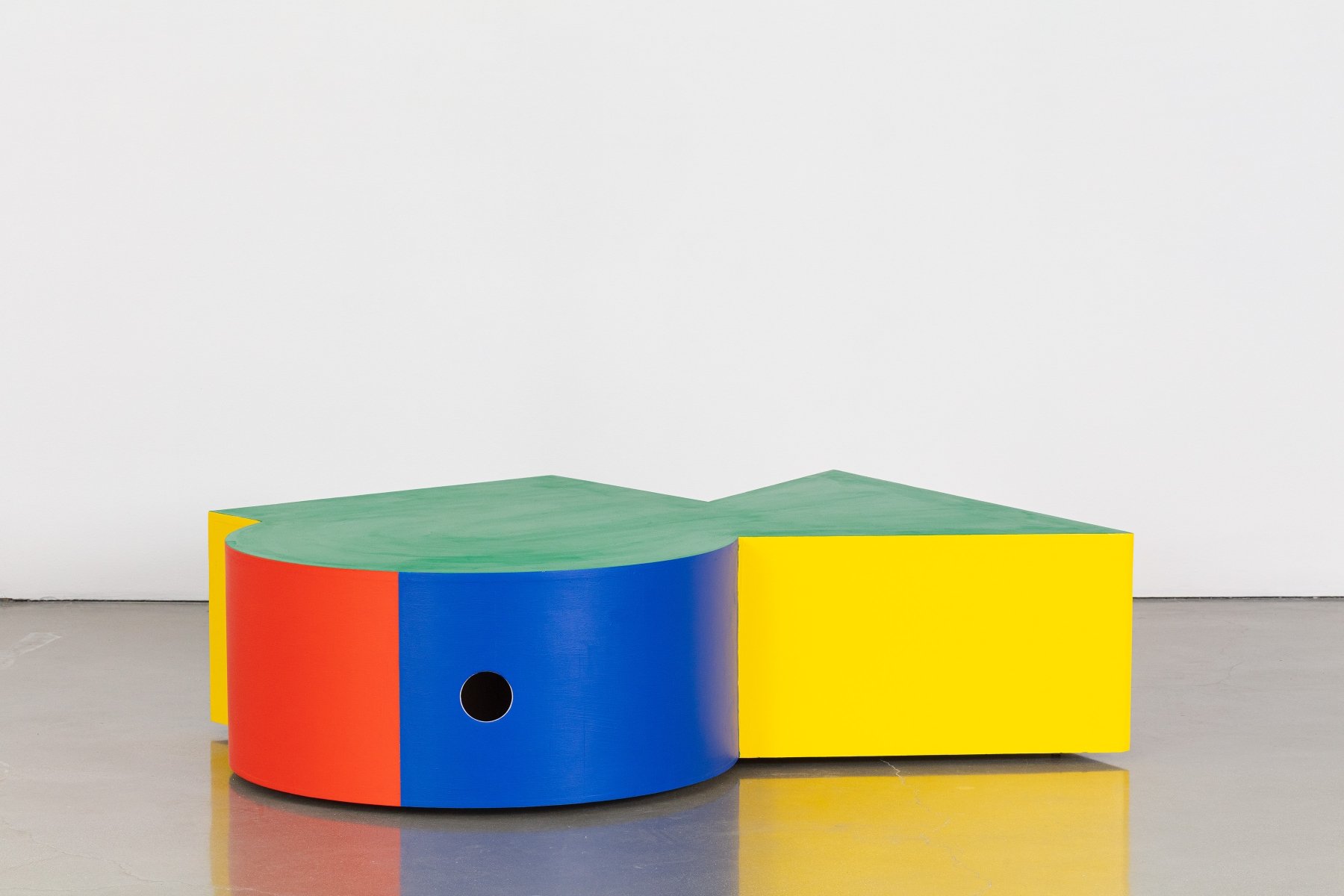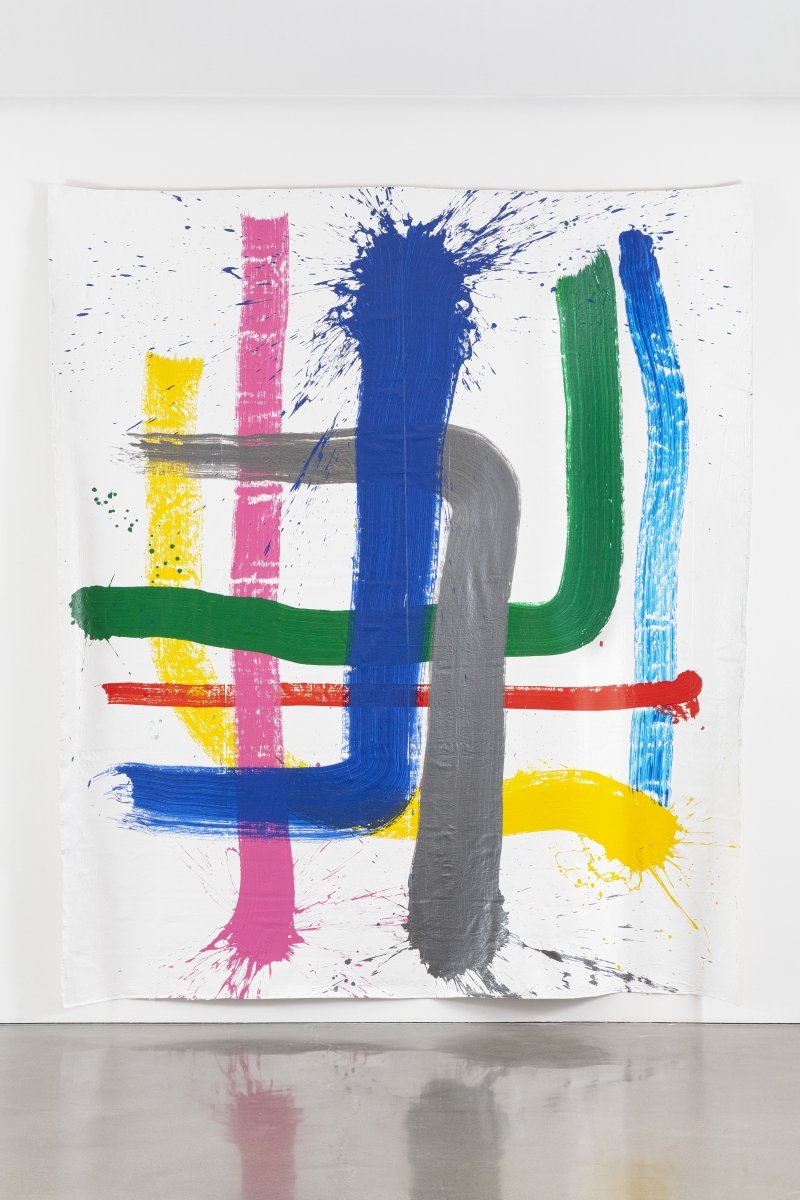Aryo Toh Djojo’s world is a crepuscular world where the distant buzz of alien spacecraft whirs like a high voltage transformer, arcing between coils with the secret blue language of electricity. This is also the language of Djojo’s paintings, which were recently on view at Sow & Tailor in Los Angeles. They are hard to pin down, they are elusive and evocative, which makes them hit that spot between nostalgia and eroticism. This is your brain on UFOs, weed, and the hot magnesium flash of lust. Inside the hinterlands of Djojo’s hyper-realistic airbrushed canvases, there is the feeling of eternal summer, but also alien abduction, which could be seen as a metaphor for the amnesia of youth—for the forgetting of yesterday to live for today.
House & Garden Is A World Of Domestic Bliss @ Stroll Garden In Los Angeles
Conceived as a singular installation, House & Garden welcomes viewers into a home of domestic items rendered in clay by Analuisa Corrigan and a garden of working ceramic fountains by Lily Clark, complimented by live plant vignettes created by Alice Lam of A.L. BASA. In recontextualizing the familiar, the artists invite a moment of pause to reengage our senses and reconsider our relationship to often overlooked elements of the everyday, both domestic and elemental. Corrigan creates organic, figurative forms that unite material exploration and personal expression. Corrigan’s pieces are deceptively labor intensive, taking up to a month to make. After sketching and prototyping, each is carefully built up through a coil technique, then dried and sanded to achieve the desired silhouette. The resulting work feels simultaneously robust and delicate.
Whereas Corrigan works intuitively, Clark’s process embraces precision, reflecting her interest in engineering. After drafting a design, she rolls slabs of clay and cuts using a template, then carefully joins the seams. The surface is left unglazed to contrast with the water’s luster. For her large-scale fountains, Clark incorporates stones that she spent six months sourcing from the Whitewater quarry just outside of Palm Springs, fine tuning the design to achieve her desired water flow and sound. Clark’s fountains are arranged within an “indoor garden” by Alice Lam, whose Los Angeles-based creative studio A.L. BASA specializes in sculptural floral installations. Lam’s site-specific design references Buddhist Zen gardens created around works by Isamu Noguchi, as well as plants that are representative of California’s biodiversity. Immersive and temporal, House & Garden contemplates notions of interior and exterior — both somatic and psychological, experienced and subjective.
House & Garden is on view through June 11 @ Stroll Garden 7380 Beverly Boulevard.
Kate MccGwire Mines Tension Between Nature & the Manmade World In Undertow @ galerie Les filles du Calvaire in Paris
Known for her muscular, writhing forms made with feathers, and reminiscent of Classical sculpture and creatures from mythology, Kate MccGwire’s works explore dualities of aesthetics, being simultaneously seductive and repulsive; form, being both organic and abstract; and movement, appearing fluid yet being static. As she has noted, “I am interested in the interplay of opposites which runs like a leitmotif through everything I do. It is as if the work needs that tension to create its own internal equilibrium; it is an expression for me of the duality I see all around me and the materials I choose need to be able to physically embody this.”
Influenced by the cycles, patterns and currents of water, these works explore conflicting relationship between nature and the manmade world. Observing the dichotomies of nature on her daily wild swims and walks, MccGwire makes work inspired by visual rhythms and sequencing observed in flowing water, but also its rupture, control and diversion through human interference with dams and weirs.
The artist’s process of creation begins with the intense and repetitive method of collecting and preparing the feathers, each of them carefully examined and classified according to its size, shape and natural color. In a compelling and meditative process, MccGwire arranges the feathers to mimic the overall form and patterning of the pieces informed and inspired by the anatomy of birds’ wings. Discarded, impermanent and overlooked materials have always fascinated the artist. In her piece TAINT she contrasted lead sheet with intricately arranged feathers, creating an anaemic, skin-like surface. In the visceral forms of UNDERTOW, the artist is seduced by the beauty, flow, power and turbulence of flowing water and ultimately drawn to the danger that lies beneath the surface.
Undertow is on view through May 7 @ galerie Les filles du calvaire 17 rue des Filles-du-Calvaire, 75003 Paris
Kate MccGwire
Making of SASSE/SLUICE, 2018
Photo : Jo Scott
Linda Stojak Paints Memories Like Ghosts In It's ok to do nothing @ Lowell Ryan Projects In Los Angeles
Linda Stojak’s It’s ok to do nothing is a series of solitary female figures painted in an ambiguous space between identity and anonymity. While personal in nature, these works allow for a range of interpretation and emotional response. Stojak’s works conjure a feeling of remembrance and the uncertainty that can come when time has passed—layers of memory that shift with a perspective that only age and time can bring. They are enigmatic renderings of women, lushly executed and textured by the build up of paint—methodical applications with the palette knife, layers of washes, and considered brushstrokes. A kind of burnishing effect emerges that creates a luminous glow in the surfaces. Each painting provides a journey for the viewer, but within the realm of this expressionist figurative painter there is also the emergence of a portrait—unfinished, evolving and transforming. Stojak’s figures are often incomplete in nature. The eyes, or often the whole face, smudged or blurred creating a feeling of recalling the memory of a loved one, while the shape of the hair, the color of lipstick or gesture of the body remain—a floating image or “stillness” as Stojak says. “These paintings deal with moments in time where you cannot move forward and you cannot move backward.” The figures read less as individuals, but instead as timeless memories that hover on the canvas like ghosts.
It’s ok to do nothing is on view through May 7 @ Lowell Ryan Projects 4619 W. Washington Boulevard.
Transmundane Economies: Queerness, Spirituality & Heritage Overlap in the Work of Theodoulos Polyviou →
Theodoulos Polyviou is an artist whose practice explores the multilayered spaces where queerness, spirituality, and cultural heritage overlap across physical and digital worlds. Often utilizing virtual reality (VR) technology, Theo’s work also features architectural and sculptural elements, text, and sound, resulting in installations that are at once intellectually deep and sensuous to experience. He has participated in numerous exhibitions and residencies throughout Europe, and has a forthcoming project in Lecce, Italy, later this year. I met Theo on the occasion of his recent exhibition Transmundane Economies at Künstlerhaus Bethanien in Berlin, where he has pursued a long-term artist residency. As an art critic, I’m usually hesitant and skeptical regarding the experience of art in virtual reality. But I found how Theo uses VR in Transmundane Economies to construct a “ritual space” that conjoins queerness, religion, and Cypriot cultural heritage to be profound and compelling. So I’ve met with him again to find out more. Read more.
Barbara Kruger Survey Decodes The Powers That Be @ Sprüth Magers In Los Angeles
The work of Barbara Kruger—bold, trenchant and unmistakable—has made an indelible mark not only on contemporary art of the last four decades, but also more broadly on everyday visual culture. She developed her concise, forthright aesthetic in the early 1980s, and since then has deployed it across myriad forms, from small-scale tactile objects to monumental public facades. Monika Sprüth and Philomene Magers present this exhibition of new and historical works by Kruger at the Los Angeles gallery timed with her major exhibition, Thinking of You. I Mean Me. I Mean You., on view across Wilshire Boulevard at the Los Angeles County Museum of Art (March 20–July 17, 2022).
As visitors enter the gallery, they first encounter Kruger's large-scale triptych, Untitled (Never Perfect Enough) (2020). The format of the appropriated image, in tandem with the added text, recalls the practice of phrenology, a nineteenth-century pseudoscience in which the shape and size of people's heads was thought to determine their character and mental abilities—and often used historically to argue for white supremacy and class distinctions. Kruger's triptych updates this urge to divide, categorize and control, situating these long-standing human pursuits squarely in the present while simultaneously picturing the connections between "beauty" and the punishing regimens that accompany it.
A group of twenty collages from the 1980s, related to some of Kruger's early and best-known works, completes the exhibition. The artist refers to these objects as "paste-ups," the term for cut-and-paste mockups used in the field of graphic design, which reflects Kruger's time as an editorial designer for Mademoiselle magazine and her work designing book jackets and picture editing in the late 1960s and 1970s.
Displayed together, Untitled (Never Perfect Enough) and Kruger's collages span the artist's career both temporally and conceptually. They offer compelling insights into her process and practice, and they illustrate the many ways in which her work has infiltrated our understanding of mass media and the power structures that control and manipulate contemporary culture.
Barbara Kruger is on view now through July 16 at Sprüth Magers, 5900 Wilshire Boulevard, Los Angeles.
Kour Pour Disrupts Notions of Cultural Hybridity In New Homes, New Places @ Gallery 1957 in London
Based in Los Angeles, artist Kour Pour's creative processes, source material, and painting techniques stem from a wide range of cultures and histories. His experience as an immigrant and biography are the foundation of his work, reflecting his transitory heritage; Pour is of British and Iranian descent and grew up in a mixed-race household - but the artist is also newly American, having been granted citizenship during the pandemic. As a child, Pour spent considerable time in his father's carpet shop, memories of which have become a central component of his practice. These cultural threads inform his work and add to a wide range of visual languages; the interplay of form and content becomes a way for Pour to convey meaning in his art. He draws inspiration from visual traditions that include Persian carpets, medieval Islamic manuscripts, Chinese paintings, and ukiyo-e prints, among others.
Pour's creative point of view disrupts simplistic notions of cultural hybridity, appropriation, and originality. New works on view at Gallery 1957 see the artist creating silkscreen prints based on imagery from illustrated texts of the Persian epic Shahnameh [The Book of Kings] by the poet Ferdowsi (977-1010 CE). Presenting the works with the text boxes redacted - a comment on the artist's inability to speak his mother tongue and the universal limitations of language - the shape of the canvases eschew the art-historical square. Called 'extractions', the series expands on the artist's ongoing interest in mixing visual culture across boundaries and borders, with the 'redacted' pieces reminiscent of the shaped canvases of American Minimalists such as Frank Stella and Ellsworth Kelly. In other works, Pour explores the cultural exchange of tiger imagery across China, Korea, and Japan, creating and recreating works inspired by different contexts across bright canvases reminiscent of Western Pop art.
Kour Pour: New Homes, New Places is on view now through April 30 at Gallery 1957 1 Hyde Park Gate London SW7 5EW.
Kour Pour in Studio. Image courtesy the artist and Gallery 1957.
Lydia Maria Pfeffer Takes Us to Queer, Jungian Worlds In Lily of the Valley @ Ochi Projects In Los Angeles
Lydia Maria Pfeffer presents new paintings that depict a queer cast of characters as well as their seductive and strange worlds. Drawing inspiration from mythology, shamanism, and anthropomorphism, Pfeffer playfully revels in art historical motifs and religious iconography. Set against earthly and other-worldly backdrops, the occult-like figures in this series dwell in both familiar and celestial landscapes. Pfeffer’s fantastical worlds are inhabited by bold figures who embody queer sensuality, femme kinship, and gender fluidity, through the expressive language of painterly symbolism.
With a cheeky nod to the sexualized female figures of Austrian Expressionism, like those of Egon Schiele and Oskar Kokoschka, Pfeffer similarly charges her subjects with a raw femme sexuality that verges on the grotesque. However, unlike these historical representations of the sexed femme body—so often fraught with the confines of modernity and the male gaze—Pfeffer’s specters are fully self-realized. They refuse the bounds of their own frames. Connecting familiarity with fantasy, and femininity with ferocity, Pfeffer’s works hover above the axis of desire itself. Lily of the Valley rejects painting’s inherited traditions of the patriarchal gaze and boldly asserts the power of a self-actualized queer eroticism.
Lydia Maria Pfeffer is in conversation with Trulee Hall in our forthcoming Body Issue. The following is an excerpt from the full interview:
LYDIA MARIA PFEFFER: I do believe there's a spirit world out there, and I do believe that everything is alive, and I mean that down to the soil. When I make these paintings, they are almost a weird channeling. Of course, it’s my subconscious that creates these images. But, I start painting with some washes or lines, then the figure develops, who then invites the other figure, and they're all grabbing each other and taking each other to the party. It's almost like I’m asking, “Alright, who else do you want? What else do you want? Oh, you want a little thing there? Okay, cool. Who else is coming to the party? Okay. There she is.” I'm almost being told what to do. It takes an openness, and a willingness to trust yourself, and trust the process. You go in and give yourself entirely over to the painting. Often, I paint the entire thing, and I have no idea what's happening. There's a lot of Jung’s idea of collective unconscious in there, which says that your fears and your desires are predetermined. These archetypes that we all embody determine what we fear, or revere, or need, or want in order to develop.
TRULEE HALL: I totally relate. I also use the channeling. I get the mood right. I have a canvas, I got my music going, and the rest just unfolds. I don't think it through ahead of time. Sometimes I'll start with one idea or an inspiration, but it's a relationship with the work. In your case, you're very brave, and you're also unapologetic. Your work comes from a very authentic place and it really jumps off the canvas. I don't even think of them as paintings because they just seem to exist. It feels like it flew out of you; like it's supposed to exist.
Lily of The Valley is on view through April 30 at Ochi Projects 3301 W Washington Blvd, Los Angeles
Xinyi Cheng Gives Us All The Uncanny Feels In Seen Through Others @ Lafayette Anticipations in Paris
The constellation of subjects and scenes captured in Xinyi Cheng’s evocative paintings are drawn from her encounters. From a tiny dog called Monroe staring at a bone on a red carpet to a man in leopard-print boxer shorts on a sofa speaking on the phone, her works unravel complex emotions, desires, and dynamics that permeate contemporary life. Cheng’s expressive use of light and colour help conjure feelings, reveries, and impulses that reside within our everyday experiences of being in the world. Beyond a false softness, these new works represent her reflection not only on what it means for us to coexist, but on what it means to be human. In an often enigmatic atmosphere of dreams and solitude, the characters depicted by the artist sound like unexpected tributes to the moderns such as Picasso, Toulouse-Lautrec, Degas or Caillebotte.
For Cheng’s first major institutional exhibition in France, the presentation brings together over thirty existing works from 2016 to 2021 spread across the whole building. Shown in unfamiliar groupings, they open up novel correlations and understandings within her oeuvre.
Seen Through Others is on view now through May 28 at Lafayette Anticipations – Fondation Galeries Lafayette, 9 rue du Plâtre, Paris
Watch Barbara Kruger's "In Violence" (2011) On The Occasion Of Her Survey @ LACMA & Solo Exhibition @ Sprüth Magers In Los Angeles
In Violence (2011) was presented in Commercial Break, a group exhibition curated by Neville Wakefield at Garage Museum of Contemporary Art during the opening week of the 54th Venice Biennial. Eleven years later, in the midst of a continuing war in Ukraine and numerous global humanitarian crises, Kruger’s use of novelist, critic and political activist, Mary McCarthy’s quote: “In violence we forget who we are” is an increasingly potent reminder.
Barbara Kruger: Thinking of You. I Mean Me. I Mean You is on view through July 17 @ LACMA 5905 Wilshire Blvd. Her solo exhibition, Barbara Kruger, is on view across the street through July 16 @ Sprüth Magers 5900 Wilshire Blvd.
Keith Rivers Curates A Chameleonic Group Show In Courage Before Expectation @ FLAG Art Foundation In New York
Courage Before Expectation is a group exhibition curated by former NFL linebacker turned art patron Keith Rivers. Inspired by quotes that intersect Rivers’s life in sports and his love of contemporary art, the exhibition explores the pursuit of dreams and unlikely trajectories. In these works we see artists taking perilous leaps of faith like they were Mikhail Baryshnikov—born to soar with grace and land with a quiet sense of control. All of them masters of varied media, what connects these artists is not so much material as it is mutable. We see sculptures from Sonia Gomes who left her career as a lawyer to become an artist, and from Thaddeus Mosley who was formerly a postman. There are paintings by Etel Adnan whose practice didn’t start until the age of thirty-four due to early admonishment from her mother. Known primarily for his representational paintings that challenge centuries of Black erasure within the canon, here we see rare photographs by Kerry James Marshall that possess his signature conundrum wherein the the figure is ever so slightly lit, creating an abjection that exemplifies a common African American experience while opening our eyes to a world of nuance. We bear witness to Philip Guston’s infamous transition into figuration, a perilous career risk at the time, which is so easily forgotten given the eventual triumph of its outcome—such that his previous abstractions are hardly remembered. This is a curation of artists who manage to clear the channel, so to speak, allowing any residual negative self-talk to recede dutifully into the background, leaving space for their most authentic expressions in the foreground. Rivers feels a kinship with these artists who show us how to be chameleonic without pretense or artifice. They change form at will with aplomb because it is their nature to do so.
Courage Before Expectation is on view through June 4 @ FLAG Art Foundation 545 West 25th Street, 9th Floor New York
Read A Conversation Between Artists Torkwase Dyson & Derek Fordjour From Our FW20 Sitting Issue →
TORKWASE DYSON In your work, there are so many different movements. I’ll say acrobatics. To quote Brand Nubian a little bit, “acrobatics over beats.”
DEREK FORDJOUR I really like the notion of the acrobatic. As you talk about the dexterity of bodies and being pushed, I think about the presence and absence of bodies in your work. This is really a big part of my attraction to your thinking and your work as it relates to mine, is the absence of the depiction of the body, but your keen awareness of bodies in space. I wanted to know from you: where is the body centered in your thinking absent from depiction of the body? Read more.
Derek Fordjour's Magic, Mystery & Legerdemain @ David Kordansky Gallery In Los Angeles
To enter Derek Fordjour’s deeply visceral first solo exhibition at David Kordansky Gallery is to suspend disbelief. Behind mysterious curtains, old-fashioned turnstiles, and gallery corridors, the past, present and future merge into a fantastical tableau of interstitiality and multimedia, from painting to sculpture to a live magic show. Magic is the theme and in these works we feel the power of illusions, the power of disappearance and the ultimate power of reappearance. The title of the show, Magic, Mystery & Legerdemain, is taken from the semi-fictionalized autobiography of turn-of-the-20th-century illusionist Black Herman. Herman’s act included Asrah levitation where a participant, usually an assistant, is levitated under a cloth and then rendered invisible, only to materialize later somewhere in the audience. His routine covered the standard canon of tricks, like making rabbits appear from hats. But one of his signature acts was having himself buried alive in an outdoor area called "Black Herman's Private Graveyard,” and then exhumed three days later to finish his show. Black Herman’s magic and Fordjour’s artwork are metaphysical, or perhaps psychological, analogies to the Middle Passage, the Bermuda Triangle of the Black Diaspora, and the disappearance and reappearance of Black bodies across the globe. The legerdemain, or sleight of hand, of the Black experience. In a new suite of paintings, Fordjour wows us with his brilliant and exuberant use of artifactual materials like newspaper and cardboard that force us into current cultural realities as if to say, “Tada!” with a wave of his magic paintbrush. There is Earvin ‘Magic’ Johnson in his Lakers jersey, reaching for an orange in the land of plenty, standing next to a Rolls Royce, the Spirit of Ecstasy hood ornament nearly middle-frame. There are also devotions to other Black magicians, like the Armstrong family, which consisted of J. Hartford Armstrong, known as the “King of the Colored Conjurers” and his daughter Ellen, who was one of the first female Black magicians. Or Goldfinger and Dove, a husband and wife duo who performed at Los Angeles’ Magic Castle. And, of course, Henry Box Brown, a magician and former slave who sent himself via USPS in a wooden crate to abolitionists in Philadelphia. The works are rife with breadcrumbs, easter eggs, and not-so-secret ciphers that celebrate Black cultural output through the lens of magic, both figuratively and literally. Fordjour’s largest painting to date, Meu Povo, which spans across eight panels, explores a carnival procession in real time, including rituals and dance inspired by Afro-Brazilian folklore, as part of a new series mapping Black migration. Magic, Mystery & Legerdemain is a thunderclap of an exhibition, proving that Fordjour is one of the most important voices and painters of our current surreality.
Magic, Mystery & Legerdemain is on view through May 7 @ David Kordansky Gallery 5130 W. Edgewood Place Los Angeles. Click here to read a conversation between Derek Fordjour & Torkwase Dyson from our FW2020 Sitting Issue.
Arts Aid Fundraiser, Artists Donating Artworks To Support Ukrainians People
Dmytro Zubytskyi
Bodybuilder Series with Sally von Rosen, (2020)
Pigment Print
40 x 60 cm
250 €
Artwork location: Berlin
(Ukrainian artists receive 100% of their sales)
The living conditions of Ukrainian society have become dire given the Russian military invasion. Thousands of people of all ages have lost their lives or are being injured by the continuous shelling of residential areas, schools, hospitals, and all types of civilian buildings. Millions of people are evacuating to border towns to cross as war refugees searching for asylum in neighboring countries. Other Ukrainians have decided to help resist by generating local communities and reinforcing the defense of the military corps. The situation is devastating for Ukrainians and the whole world.
Arts Aid was born as a community of international artists to create a support network for Ukrainian people who are trying to resist the invasion, seek refuge outside the country, or are vulnerable due to the war. The artworks donated by artists are posted on Instagram. Interested people can acquire the works once they have donated the same amount in the fundraiser on GoFundMe. This funding is sent based on the donations collected to carefully selected projects with the guidance of Ukrainian cultural workers to meet three main themes: advocacy, protection of vulnerable groups, and fleeing, with Ukrainian artists receiving 100% of their sale. These projects include the Ukrainian Emergency Arts Fund established by (MOCA) Museum of Contemporary Art NGO in partnership with Zaborona, The Naked Room and Mystetskyi Arsenal; Bridges Over Borders, a community-based collective aiming to support BIPOC, LGBTQIA+, and other marginalized individuals fleeing Ukraine; and UNICEF, which has been working tirelessly to keep children safe since this conflict began eight years ago, and is determined to remain in Ukraine to reach the most vulnerable children and families.
If you would like to collect artworks, simple follow these instructions:
Choose an artwork you would like to acquire on Arts Aid and check the price on the post.
Donate the amount at the GoFundMe campaign and specify the artwork you chose (Artwork’s location is written in their respective post; transport costs run on the acquirer side).
Contact Arts Aid to arrange the delivery of your new artwork.
Participating artists include: Ana Jikia, Andy Medina, Arto, Aaron Schneer, Adam Varab, Andrew Rutherdale, Alyona Grekova, Archive Of Forms (Anna Maria Kucherenko), Billie Clarken, Céline Struder, Crosslucid, Constance Tenvik, Constantin Hartenstein, Crosslucid, Danielle Magee, David Rank, Dmytro Zubytskyi, Don Elektro, Eefje Stenfert, Eetu Sihvonen, Emma Pidré, Euthanasia Sport, Evelyn Bencicova, Isabel Cavenecia, Janne Schimmel, Jeronim Horvat, Jakub Kubica, Julie Maurin, Katya Quel, Love Curly, Luiz Enrique Zela Koort, Kotz, Lisa Jäger, Lucas Hadjam, Lukas Liese, Magda Frauenberg, Manuel Resch & Maximilian Maria Willeit, Marianita Roma, Mary Audrey Ramirez, Masha Silchenko, Maya Hottarek, Norbert Stefan, Nadiia Rohozhyna, Nik Kosmas, Paul Ferens, Petja Ivanova, Ryo Koike, Sally Von Rosen, Sara Blosseville & Johanna Blank, Spaceheadtr & Dawsh, Sofia Stepanova, Ștefan Tănase, Tissue Hunter, Tom Esam, Tom Putman, Tudor Ciurescu, Urban Zellweger, Victor Payares, Victoria Pidus, Volo Bevza, Hannah Rose Steward, Kris Bekker, Zwyrtek Dominik, Victor Manuel Payares, Lukas Stoever and Georg Nordmark.
This initiative is organized by artist Emmanuel Pidré with support from artists Sally Von Rosen and Don Elektro.
The Diffracted Symphony: Sébastien Léon's Pioneertown Sound Sculpture Is A Funereal Mass For The Biological State Of The World
In 2017, the founders of Case Gallery ventured through Pioneertown and purchased a few hundred acres of expansive desert land with breathtaking views of the bouldered hillside and mountain ranges where they planned to create an oasis for artists to display their works of art. The first artist to contribute in initiating this vision is Sébastien Léon. His sculpture The Diffracted Symphony, inspired by the rib cage of a whale washed ashore, was originally conceived as a sound sculpture playing an altered version of Verdi's Requiem, turned into a funeral mass for the biological state of the world. Léon pleads for us to recognize that the challenge of our time is for humanity to understand its power for both destruction and preservation, and our urgent need to act as the caretakers of the Earth's balance.
Commissioned by Nancy A. Nasher & David J Heamisegger Family, with the Dallas Symphony
Contributors: Stephen Dewey (Sound Design and Composition), Jason Francesco Heath, Ph.D. (Composition), Fife Metal Works (Fabrication)
Fracked Or Friction: Lifes At Hammer Museum Mines The Interdisciplinary For A Ground Breaking Exhibition
Sit on it, wait for it, smell it, touch it, let it wash over you. Lifes, the bravely radical and experimental exhibition at The Hammer Museum, is a choose-your-own-adventure-style viewing experience, an astral projection of interdisciplinarity, that challenges what it means to see, feel, and hear an art exhibition. Writing about Lifes is like explaining a chasing dream to a paranoid schizophrenic, or a Chia Pet to a ficus, or a controlled burn to a fire. Conceived as a durational sequence that unfolds over time, artists and collaborators will respond to a series of commissioned philosophical and theoretical texts that question the rights of agency, the incompatibility between physical bodies, and how the aesthetic experience triggers our senses. Upon entering the exhibition, a set of “aura burners” by Jules Gimbrone and Micah Silver [(Energy Character (Micah) and Energy Character (Jules)] are metallic and metaphysical neuralizers that cleanse your chi. Further inside, Charles Gaines’ Falling Rock (2000) drops a 65-pound piece of granite every ten minutes onto a fresh pane of glass, a clash between the mechanics of time and the abstractness of violence. And ominously wrapping around the galleries is Morag Keil’s Vomit Vortex, a mysterious pneumatic tube system that traverses a canister of fake vomit, a statement on the banality of the nausea of our contemporary existence. Perhaps the most visually obvious work in the space is Nina Beier and Bob Kil’s All Fours, a suite of nine statuesque lions—typically seen at the entryways of buildings—which come to life in the form of a performance where dancers ride the carnivores’ muscular bodies for ten minutes each hour, a response to a series of scripts by Asher Hartman. There is also Cooper Jacoby’s How do I survive? (a mouthful of old firsthand), a bench outfitted with an AI-scripted thermostat—like a Magic 8-Ball, it answers the age-old question: “how do I survive.” The answers change based on fluctuations in heat and humidity, a polygraph for the existentially curious. The bench is also treated with heat-sensitive, liquid crystal pigment paint that registers the thermal impression of the sitter. Another poignant work is Fahim Amir, Elke Auer, and Nima Nourizadeh’s AFGHANISTAN MON AMOUR (ENQUELAB ULTRAMARINE), a video work starring Aubrey Plaza that is dedicated to the people of Afghanistan who have resisted imperialist expansion for centuries. And there is legendary German conceptual artist Rosemarie Trockel’s Parade (1993), where a corps of silkworms parade and dance to a composition of music by Kurt Hoffmann, creating an abstracted pattern that is analogous to the exhibition as a whole and it’s ability to let its individual parts speak for the brilliant and beautiful “curatorial assemblage” that is Lifes. Click here to find out more about the exhibition and find a full map/list of artists and works. photos :Lifes, Hammer Museum, Los Angeles, February 16–May 8, 2022. Photo: Joshua White / JWPictures.com.
Embodied Resonance: Read Our Interview Of Pop Sensation Mandy Harris Williams →
Mandy Harris Williams is a renaissance woman working across more media than one could reasonably hyphenate. On social media, in her monthly #brownupyourfeed radio hour on NTS, and with her myriad published essays, she challenges us to consider critical theories on race, gender, sexuality, and above all, privilege. She dares us to meet the most divisive aspects of our charged political culture with a caring ethic that prioritizes those most deprived of our love and compassion. Offline, her DJ sets are like a blast of Naloxone to the automatic nervous system with the power to reanimate the rhythm in even the shyest of wallflowers. After studying the history of the African diaspora at Harvard and receiving a masters of urban education at Loyola Marymount, Harris spent seven years as an educator in low-income communities. From there, she expanded her educational modalities to include a conceptual art practice, musical production informed by years of vocal training, and a lecture format of her own dialectic design. These “edutainment” experiences are one part college seminar, one part church sermon, and one part late-night talk show with a heavy dose of consensual roasting. It’s a Friar’s Club for an intellectual, intersectional, and internet-savvy generation. These performances draw us in with their vibey bass lines and hooks before they throw us under the quietly segregated bus that we’re still struggling to rectify. Mandy and I sat by the fire one lovely winter night in Los Angeles to talk about the contours of fascism, algorithmic injustice, her latest film for the Centre d’Art Contemporain Genève, and her upcoming residency at MoMa PS1.Read more.
Goodbye Playboy: Finnish Photographer Iiu Susiraja Talks About Bullying Herself With The Camera →
Iiu Susiraja isn’t simply challenging the modus operandi of how we understand and perceive beauty. The photographer, born near Turku, Finland, is a private performance artist, a secret exhibitionist using her body as a versatile dress form to experiment with everyday props, like ladles, vases, plungers and other flotsam of the mundane. In one image, Susiraja lays in bed with a whole raw chicken resting on a silver platter, creating a sort of quotidian surreality. Ghebaly Gallery presented the artist’s first solo exhibition in Los Angeles, which included her strange autoerotic still lifes and video work. The following interview was published in our Fall Winter 2018 issue, featuring a selection of the artist’s diffident self-portraits. Read more
Watch Abraham Cruzvillegas Recite Tres Sonetos By Concha Urquiza @ Regen Projects In Los Angeles
Over the past decade, Abraham Cruzvillegas has explored the myriad ways to represent his life experiences in physical form. His humorous but incisive takes on identity often employ animal avatars to draw out similarities between humans and other species, particularly primates.
At the opening reception for Cruzvillegas’s third solo presentation at Regen Projects, the artist gave a rhythmic reading of three poems by Mexican poet Concha Urquiza. Standing upon sculptural elements from the show that function as performance platform and gallery seating, Cruzvillegas introduced a new series of drawings and paintings produced on-site during the installation of the exhibition.
In this new series of drawings, the artist’s own photographic likeness serves as the basis for such investigations. Thin textiles printed with images of his face act as canvases that the artist embellishes with designs rendered in bold colors. Employing a similar formal language, the artist presents a group of large-scale calligraphic paintings. Composed flat on the gallery floor, he uses a mop or broom to apply paint, tools chosen as a gentle nod to the workers who employ them, in loose, expressive gestures that serve as records of their performative nature. They translate the rhythms and tones of the Urquiza’s poems with precision and grace.
Abraham Cruzvillegas: Tres Sonetos is on view through April 23 @ Regen Projects 6750 Santa Monica Blvd. Los Angeles
Read Exile On Main Street: An Interview Of Ai Weiwei From Our F/W 2018 Issue →
One week before this interview, Ai Weiwei’s studio in Beijing was bulldozed by Chinese authorities without any warning. Known for his brazen acts of dissent, Ai has not only challenged authoritarianism in China – the revolutionary polymath has also been extremely vocal about the worldwide refugee crisis. In a constant limbo state of exile, Ai has been living and working in Germany since getting his passport back in 2015. This fall, he will be taking over Los Angeles with three major exhibitions that he sees as one singular expression. At UTA Artist Space—which is housed in a 4,000-square-foot former diamond-tooling facility conceived and designed by Ai—the artist will be showing a series of sculptural works made from marble, including his iconic CCTV camera on a plinth, a Damoclean symbol of our post-capitalist era of state-sponsored surveillance. Central to the exhibition will be Humanity, a performative work and social media campaign that encourages visitors to the gallery to read a passage from Ai’s recent book on the refugee crisis—the footage will be compiled in a 30-minute video. On view until March 2019 at Marciano Art Foundation, Life Cycle will also explore the crisis of global displaced persons by drawing on the artist’s personal experiences and Chinese mythology. The show will include his famous work, Sunflower Seeds, which is comprised of over 49 tons of porcelain sunflower seeds carved and crafted by 1,600 artisans in Jingdezhen, in China’s Jiangxi province. Finally, at Jeffrey Deitch’s new Hollywood Gallery, Ai will present his installation of over 6,000 salvaged wooden stools from the Ming and Qing dynasties, which were gathered from villages across Northern China, thus serving as quotidian ciphers of cultural erasure and human existence. Read more.

